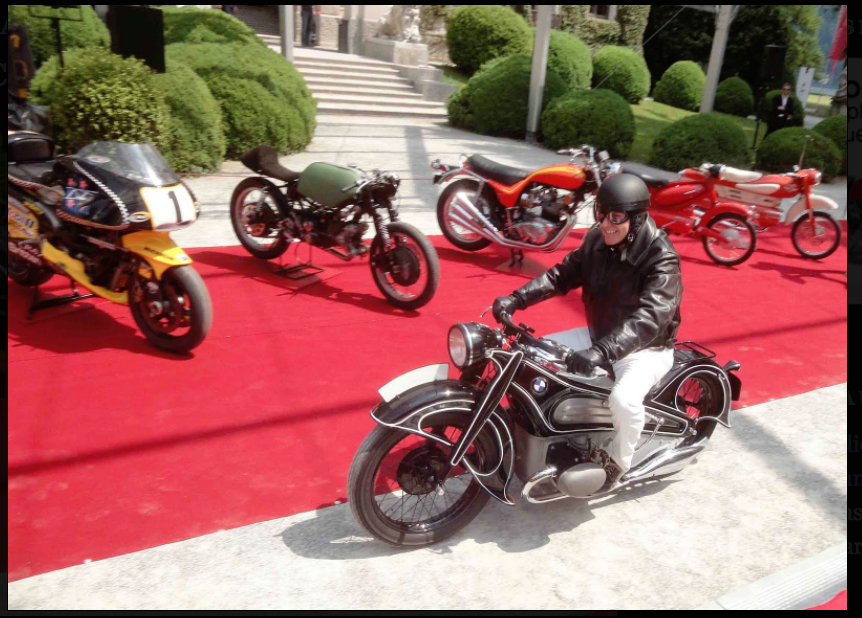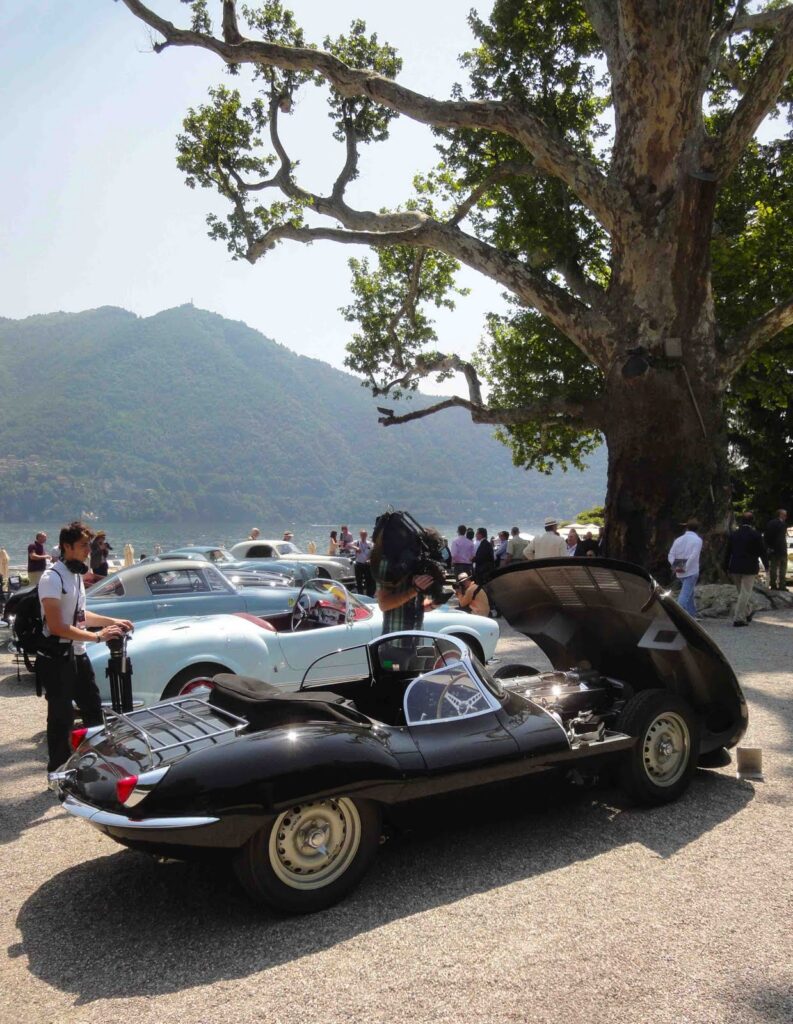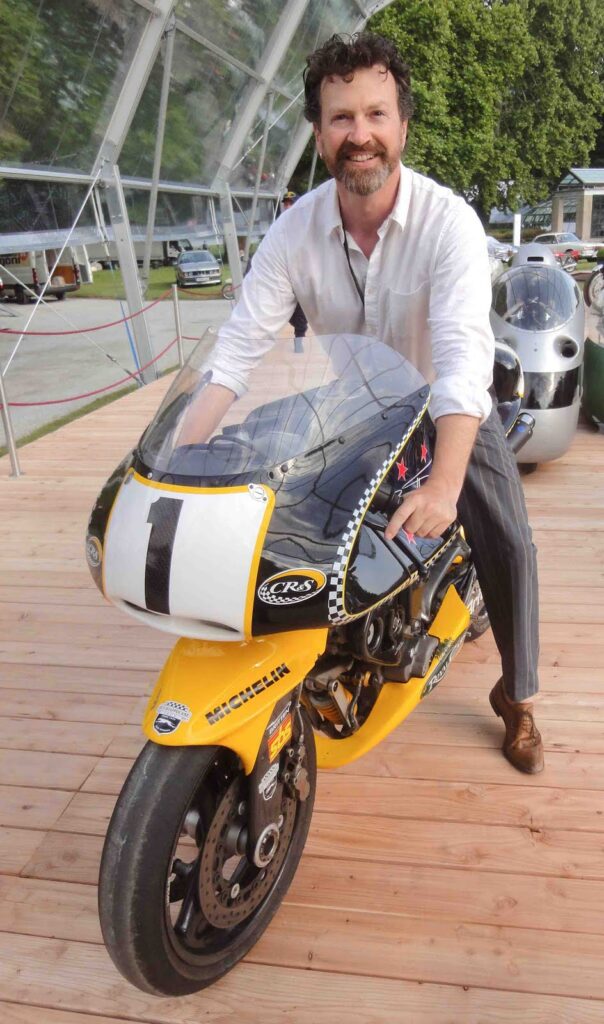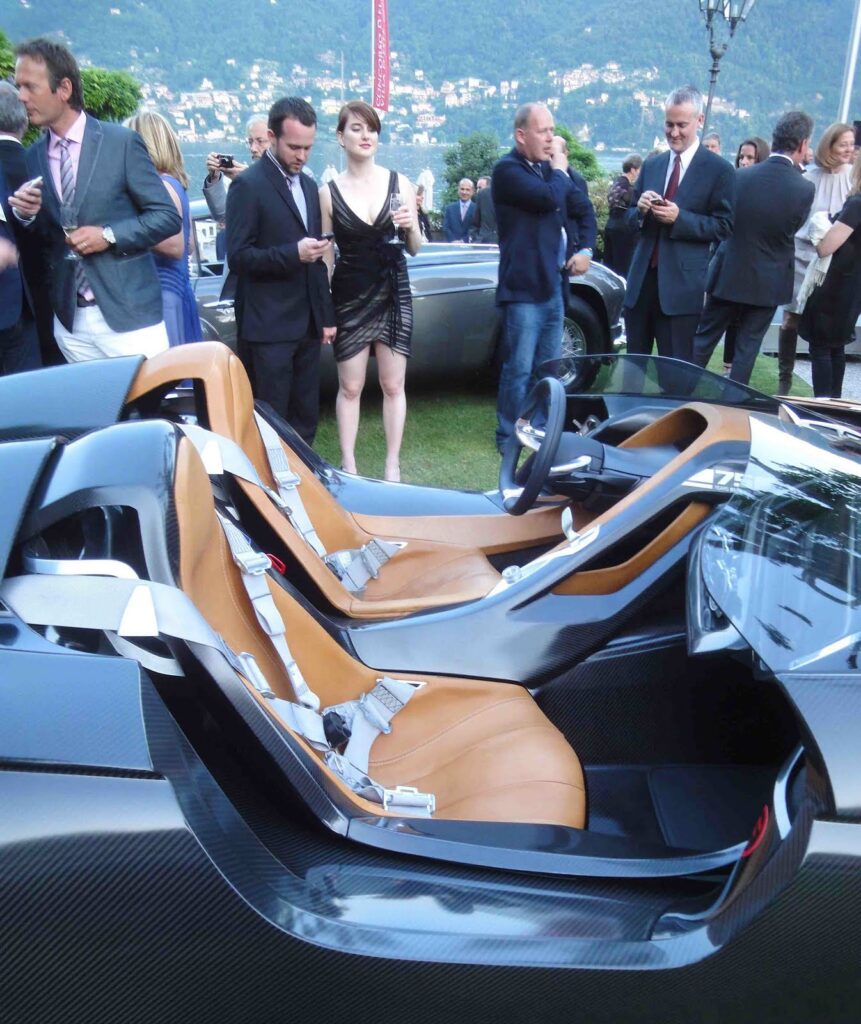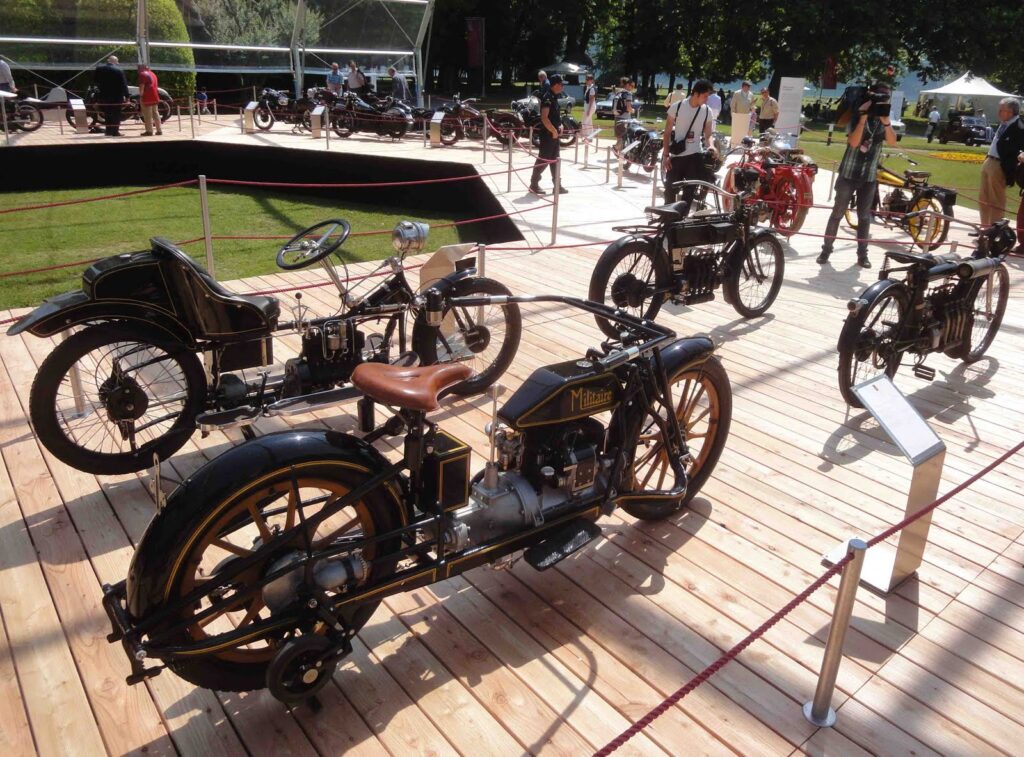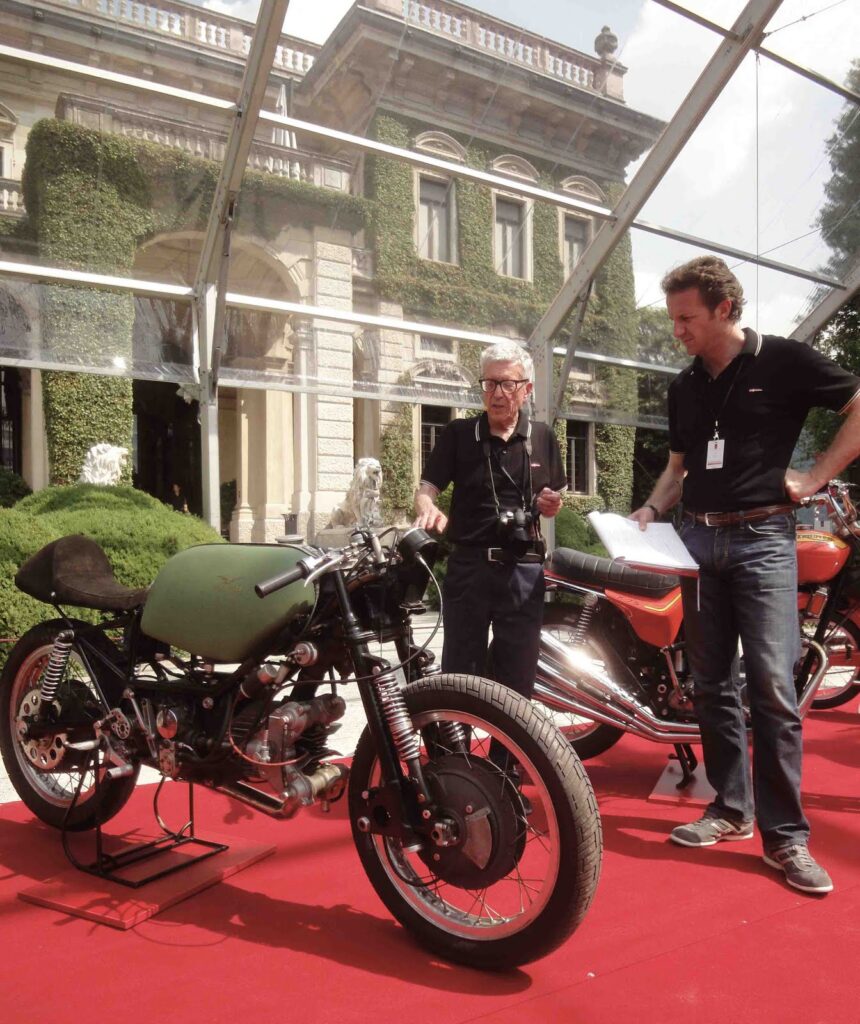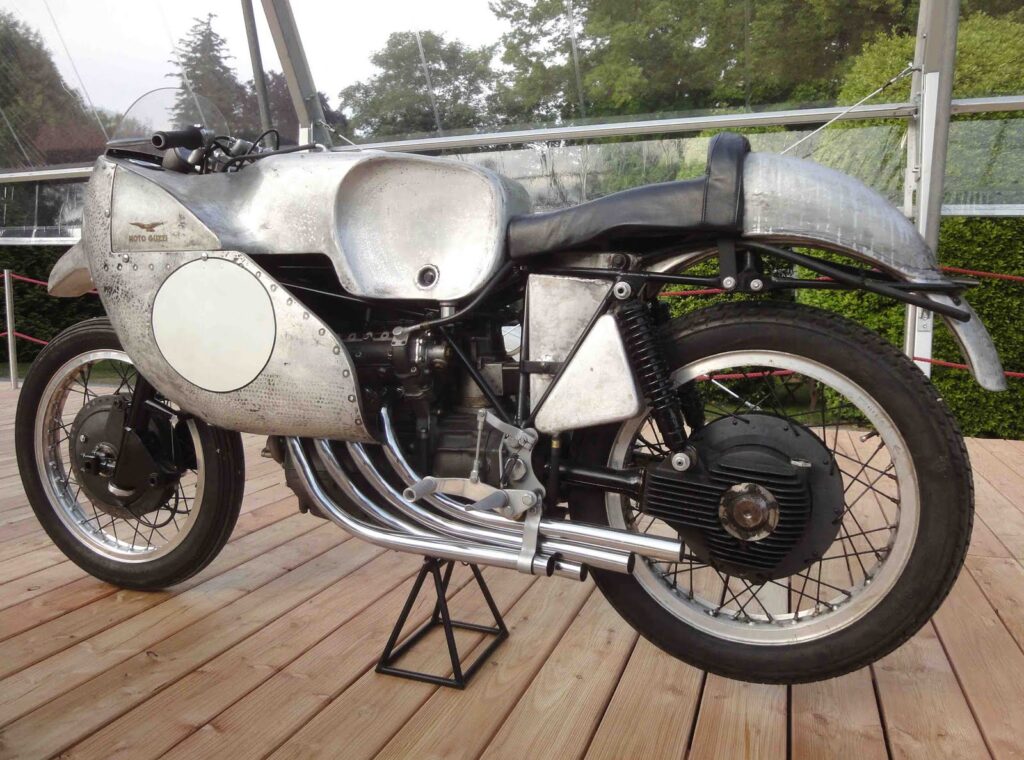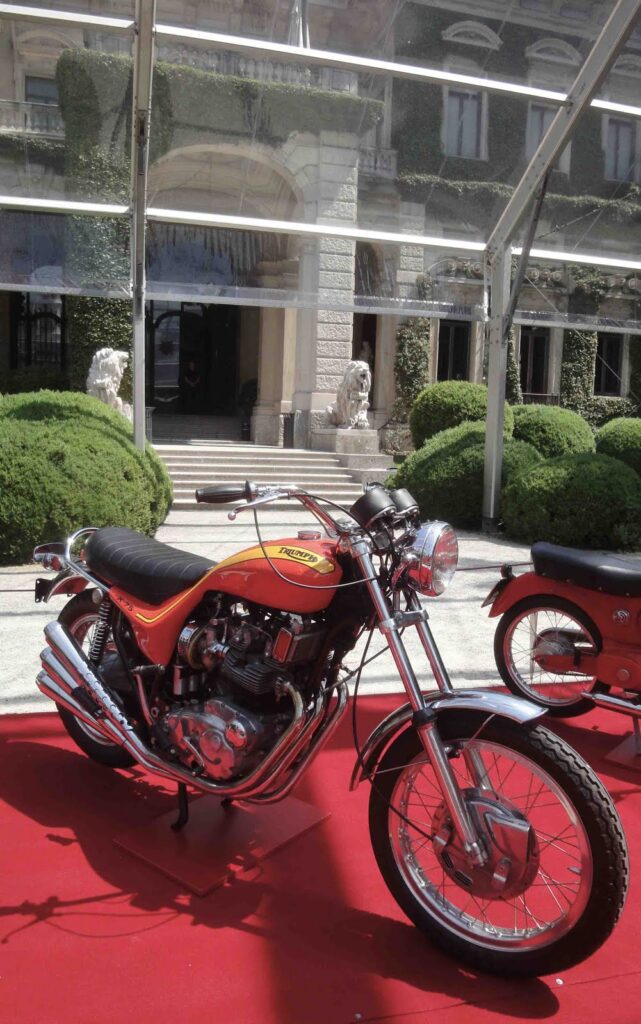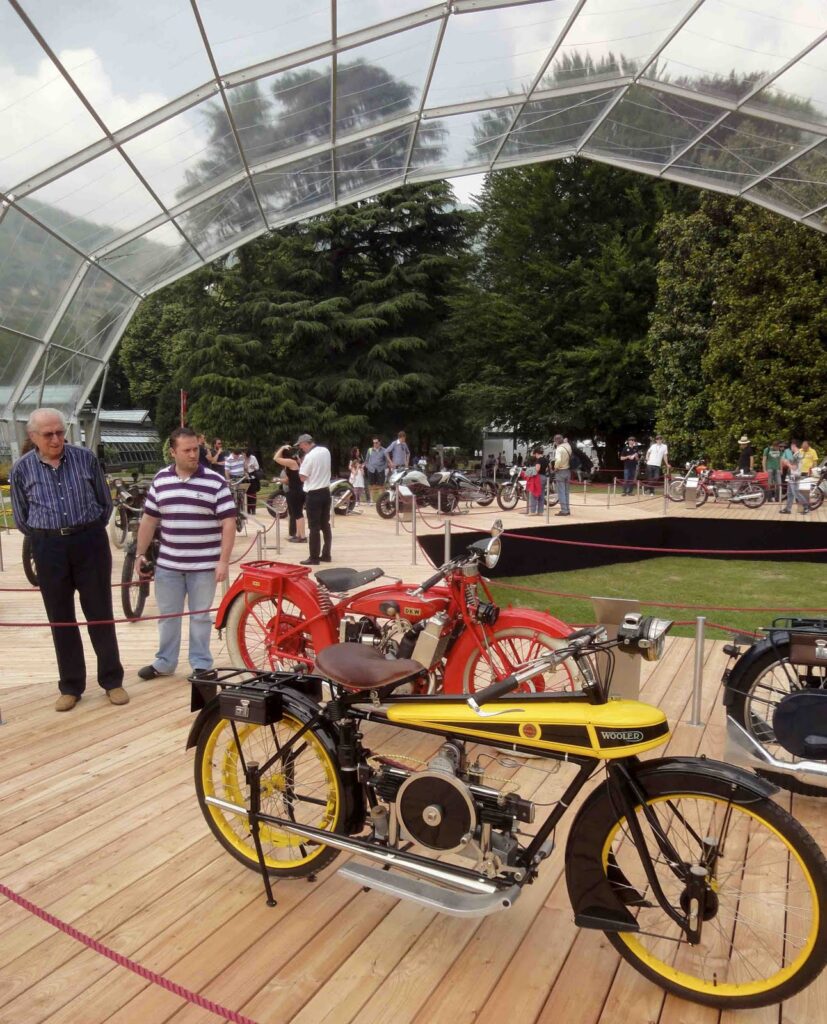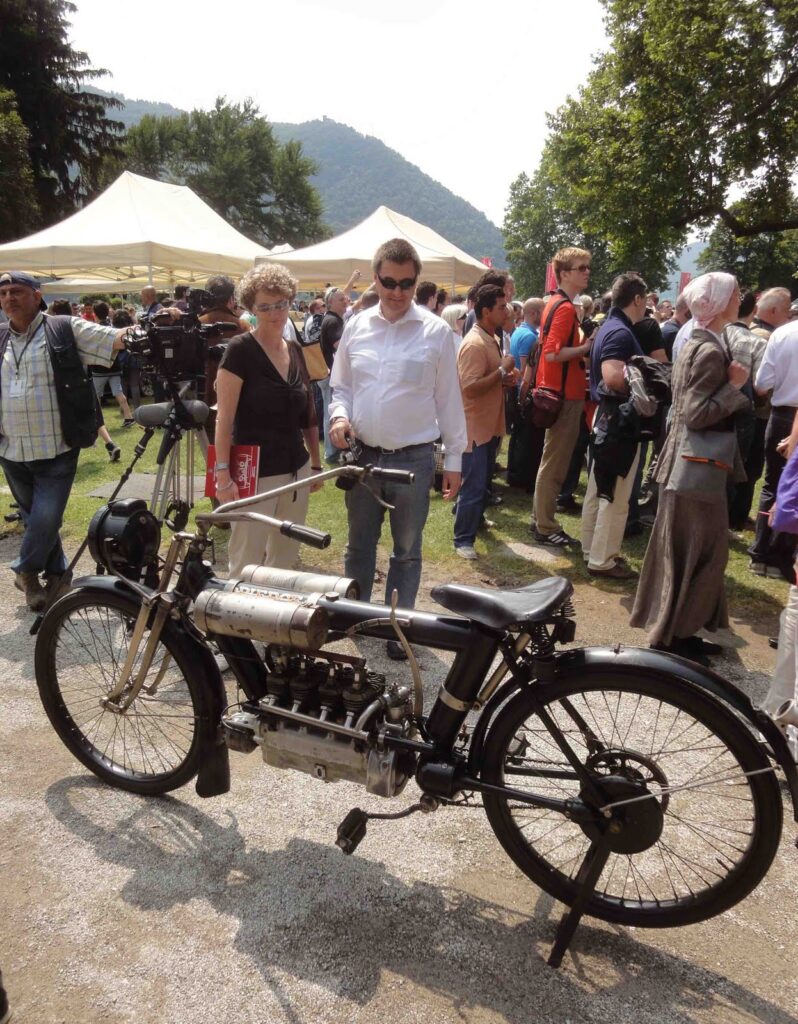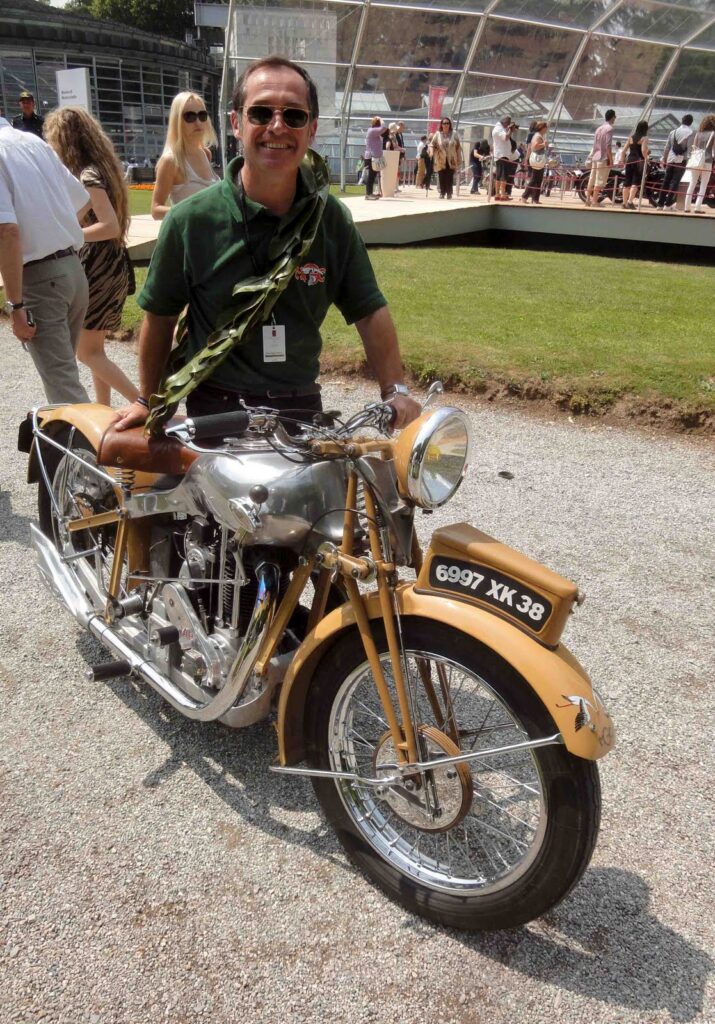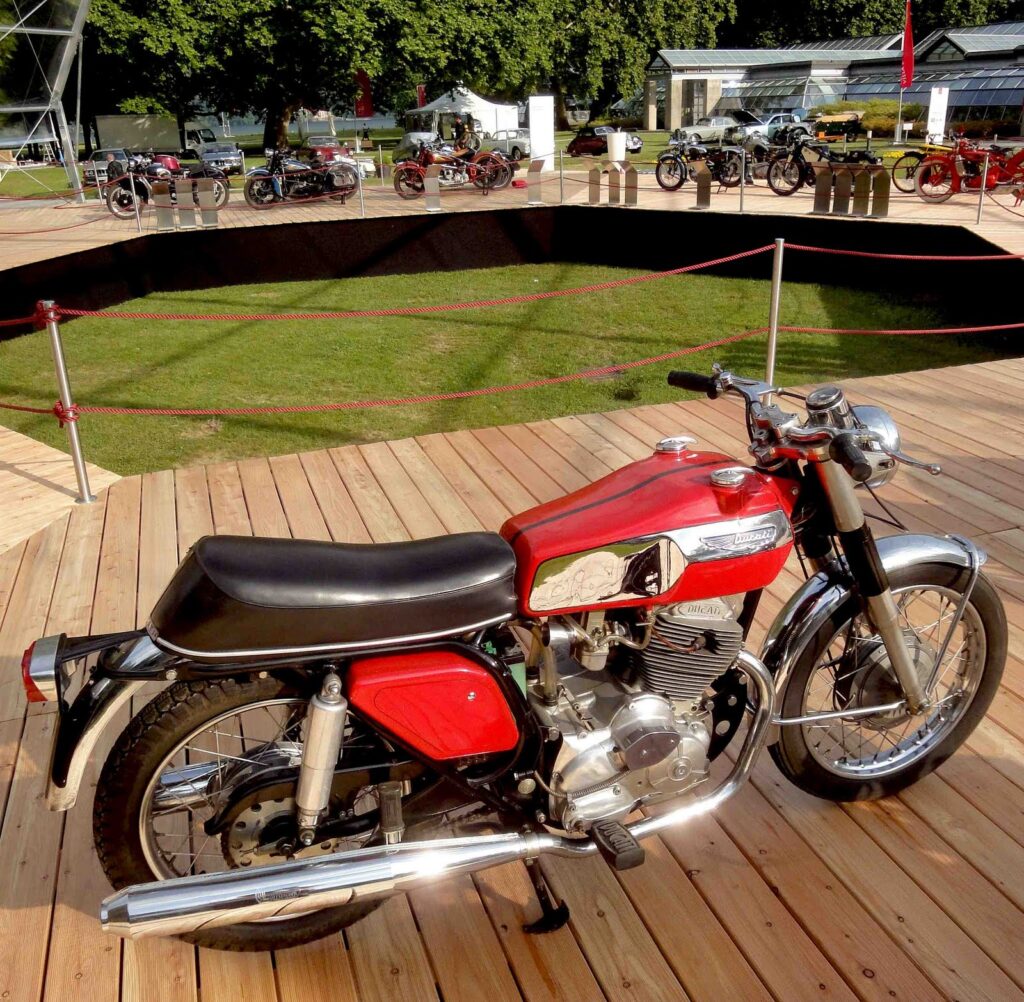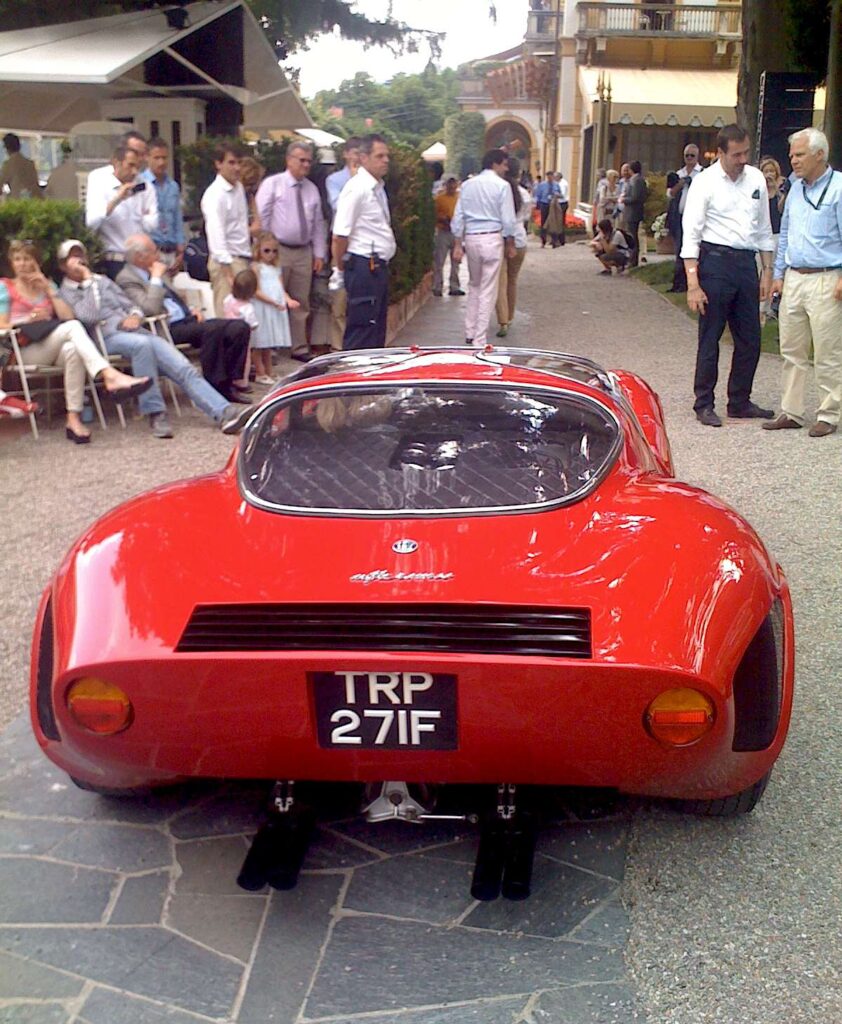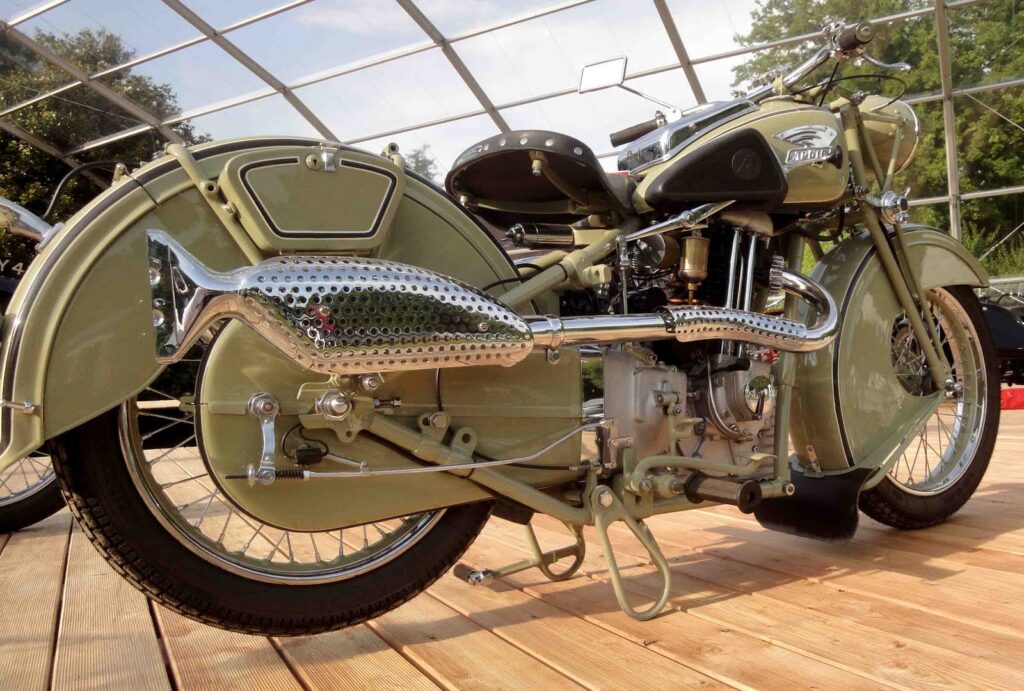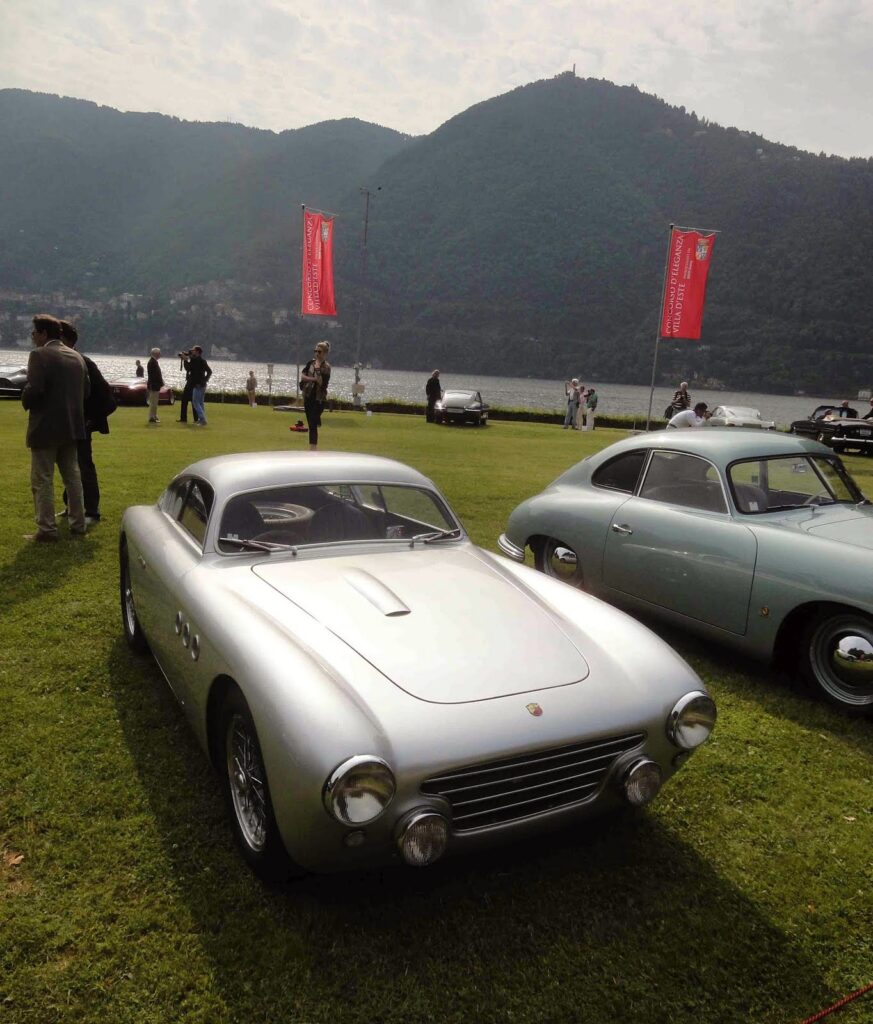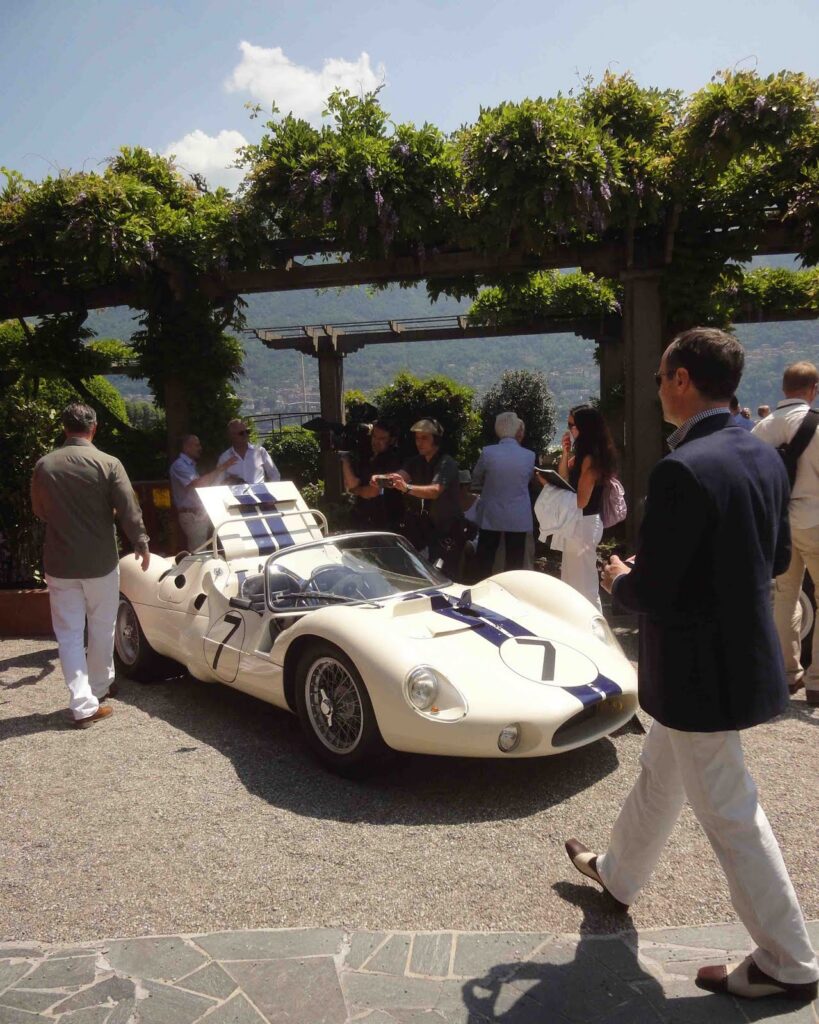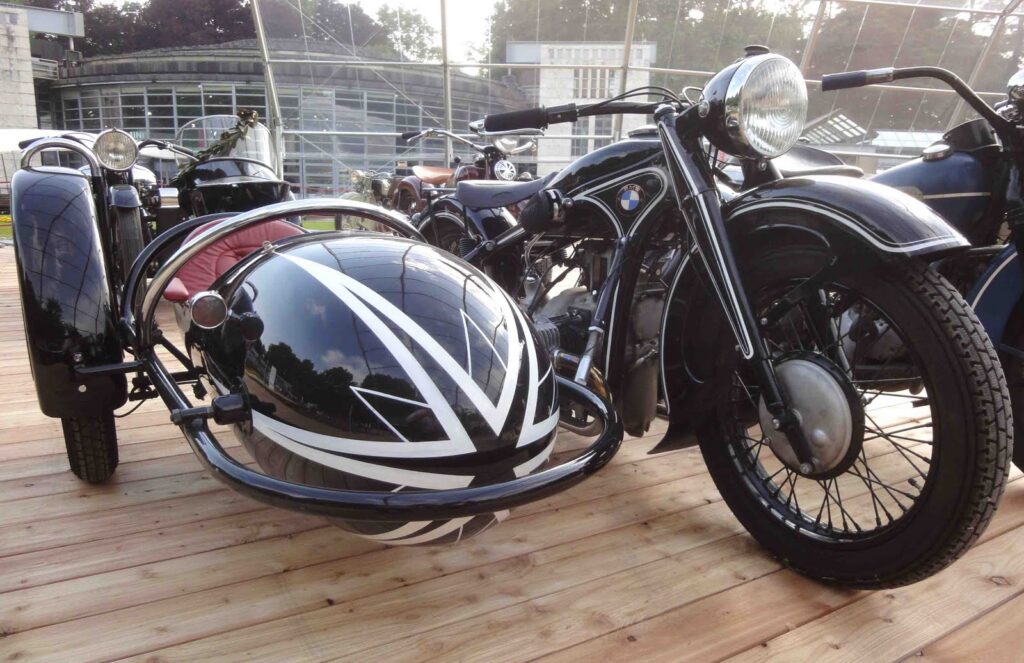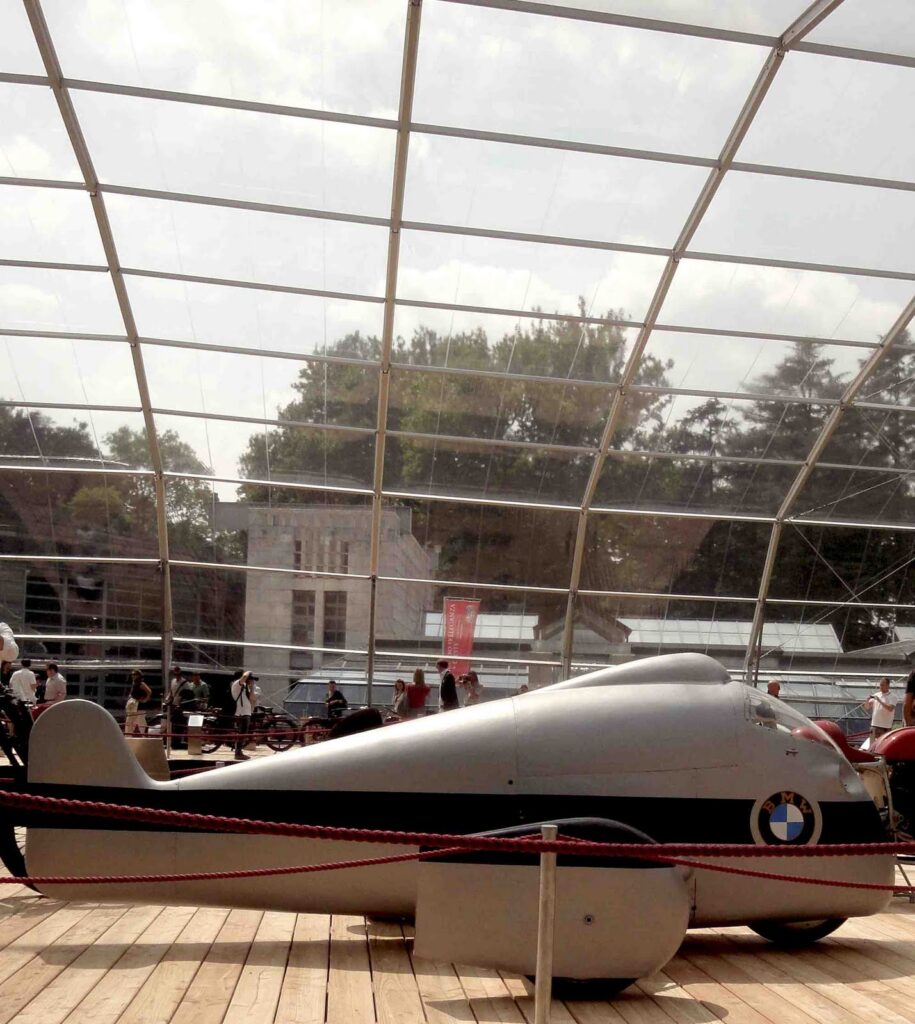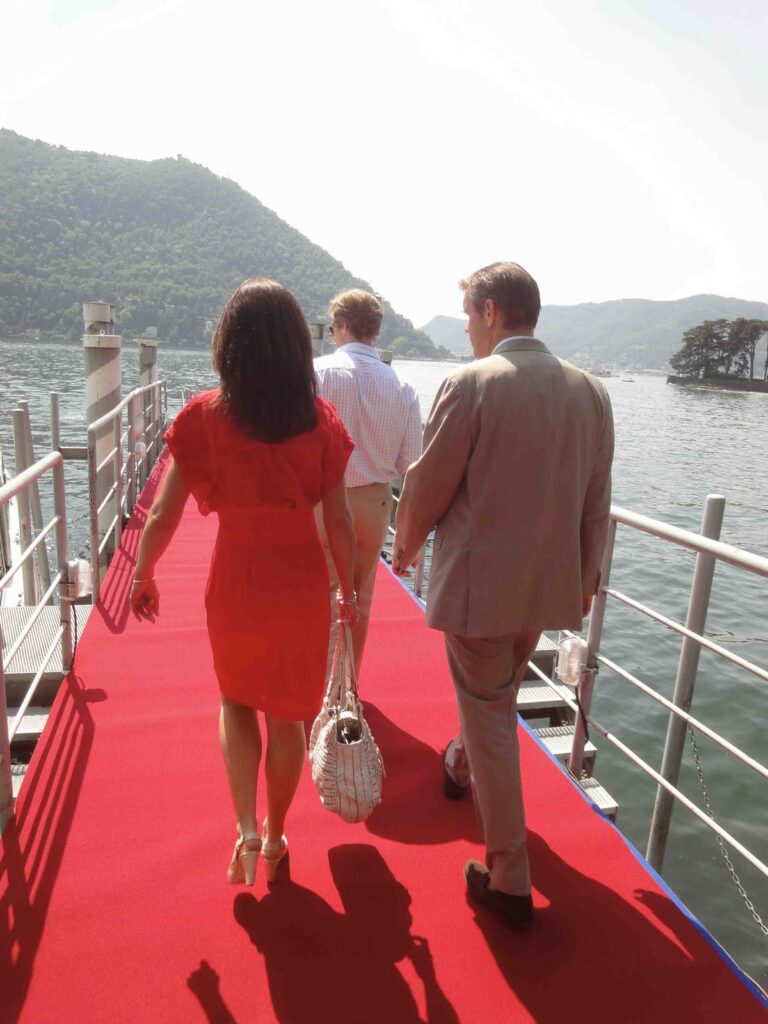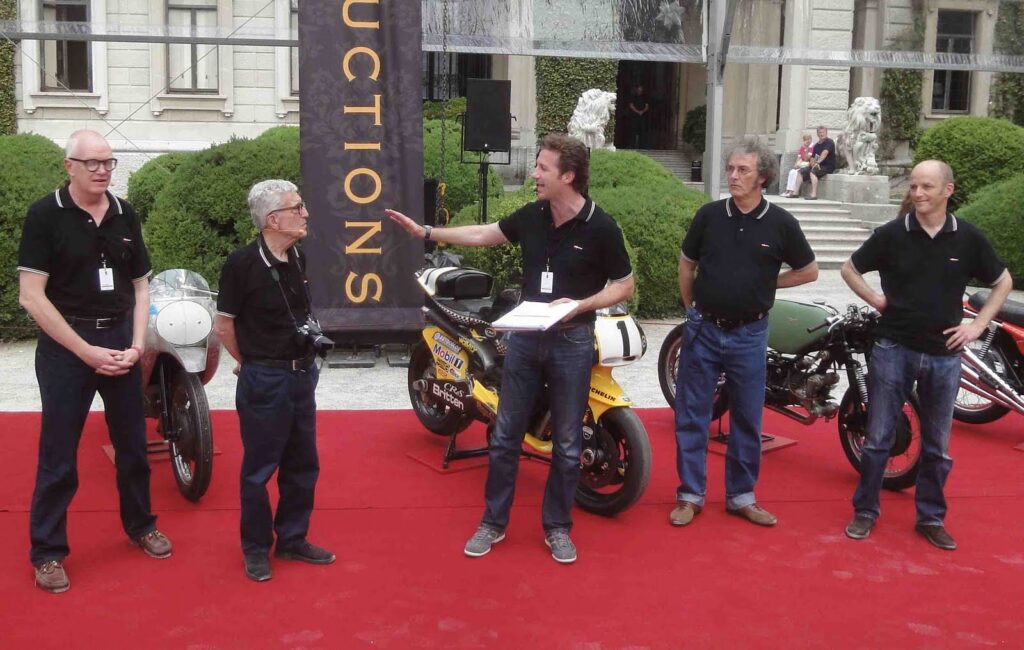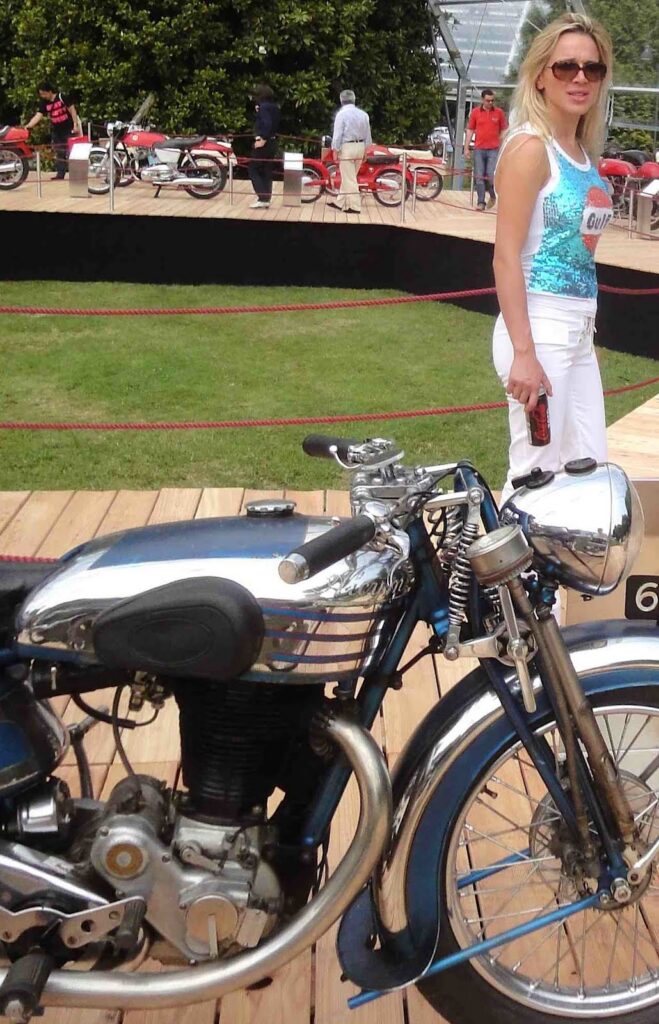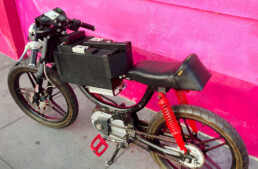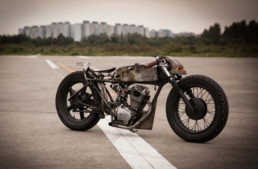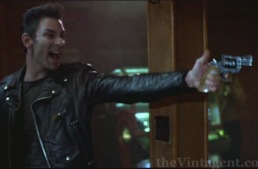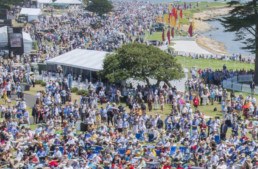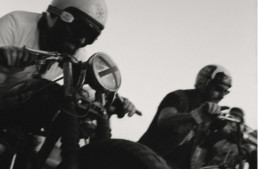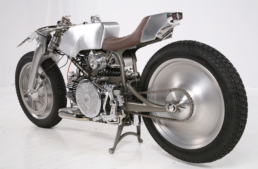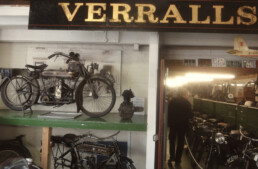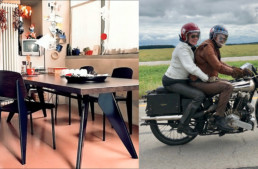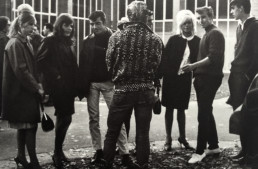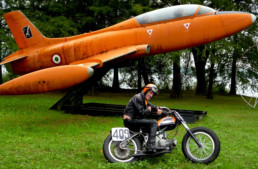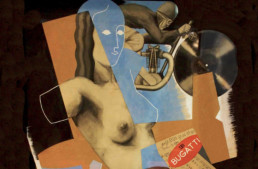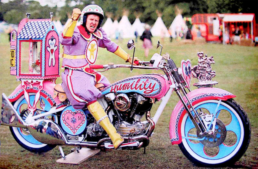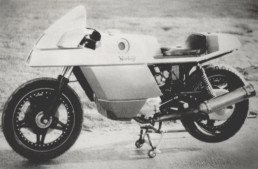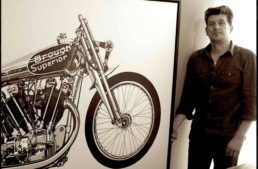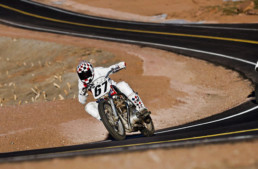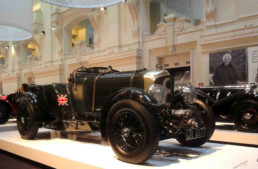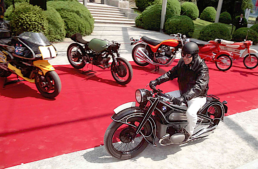Behind the Scenes at the 2014 Villa d'Este Concorso
Concours d'Elegance are marvelously silly things. Lining up a bunch of expensive cars and bikes seems at times an exercise in pride (of ownership) and envy (of same), with a dressing of greed (the value bump from a win); deadly sins all. Owners sweat while judges - and who anointed them? - pronounce 'winners' and 'best of show' over a display of obsolete industrial design. I was one of those judges at the Concorso di Villa d'Este; so why did I readily accept the inviation? It was equally silly for me to fly to Italy from San Francisco for a long weekend, especially as I was scheduled to fly right back to Europe 10 days later, to show my MotoTintype photography at Wheels+Waves in France. So again, why do it?
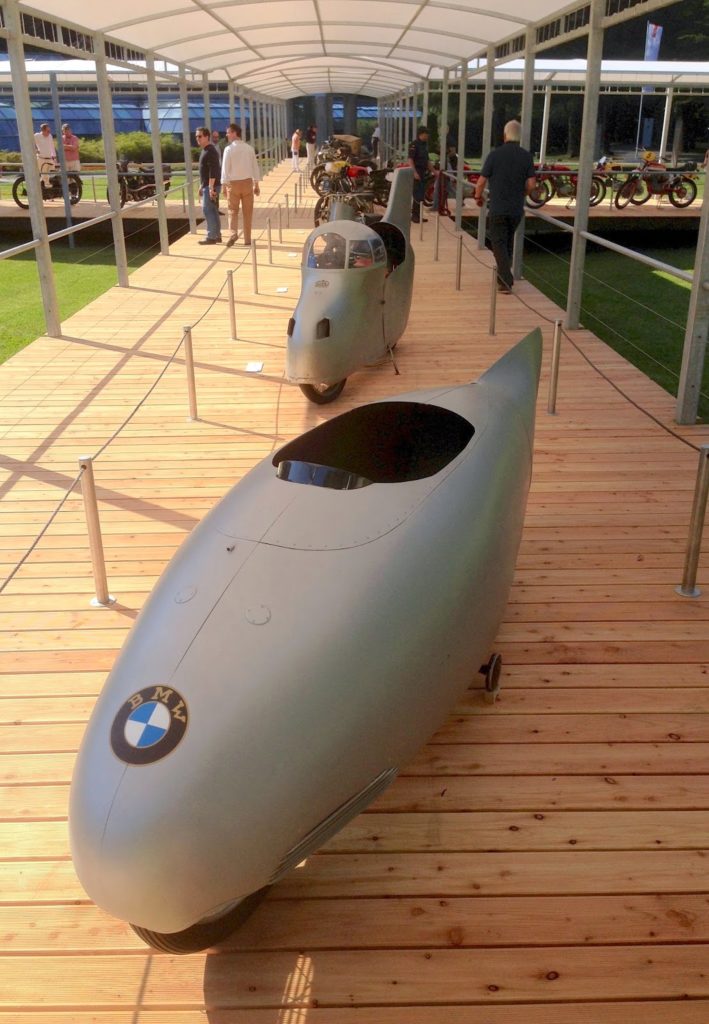
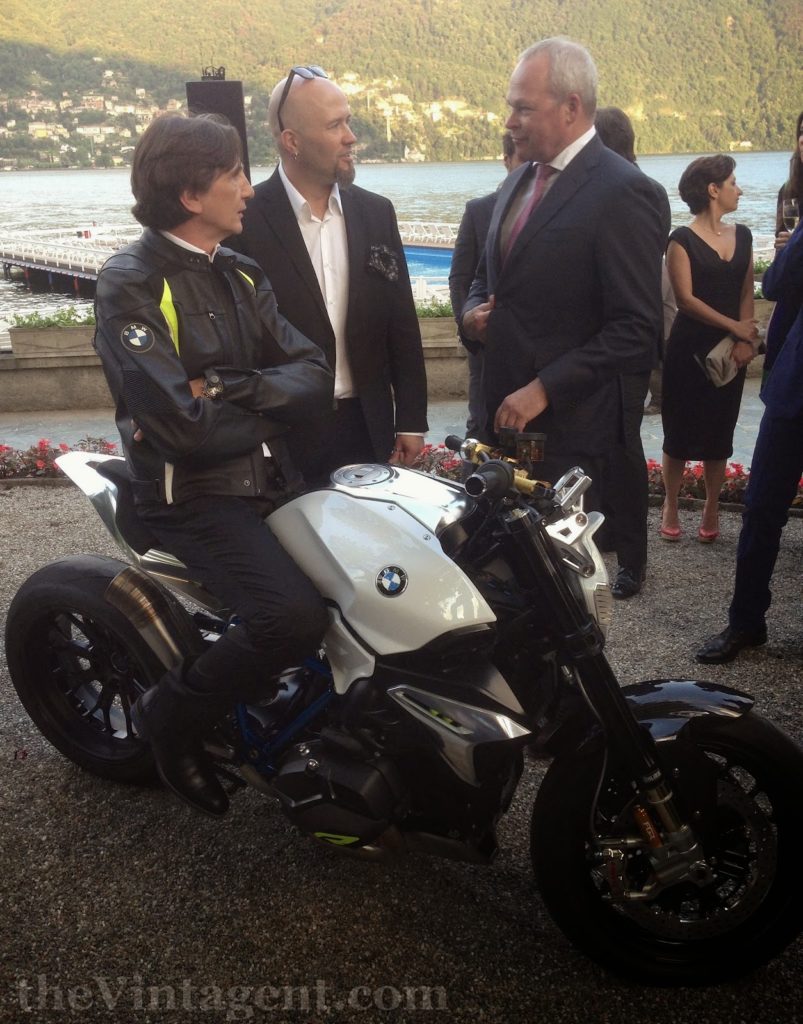
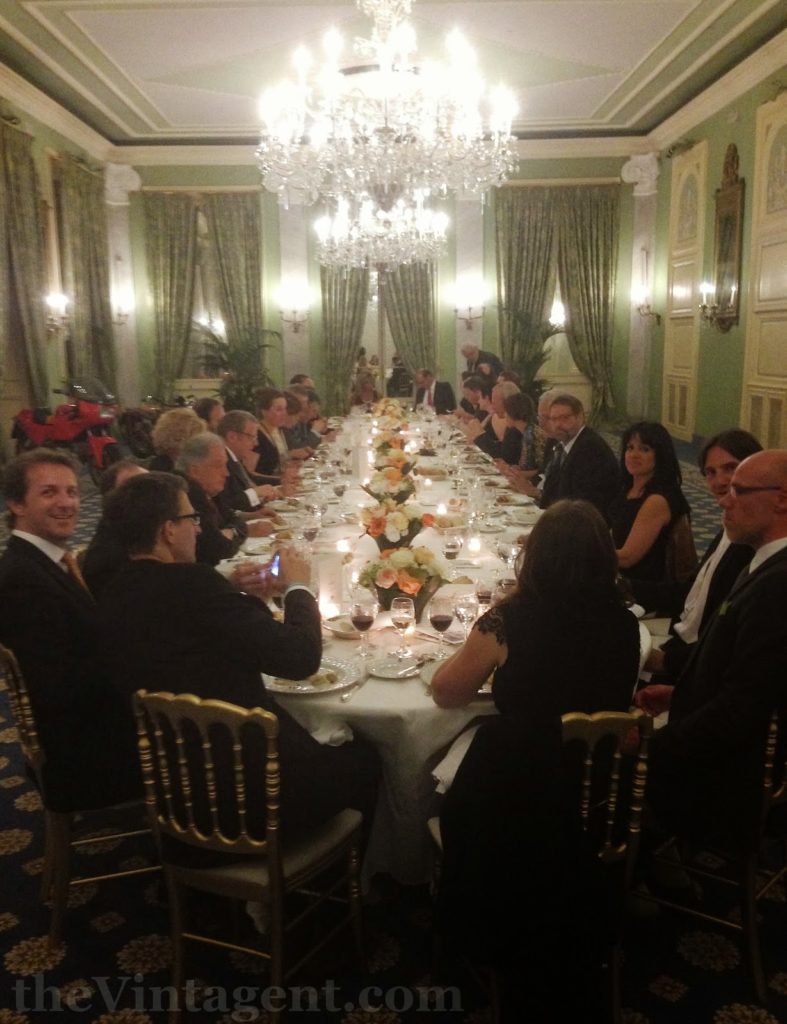

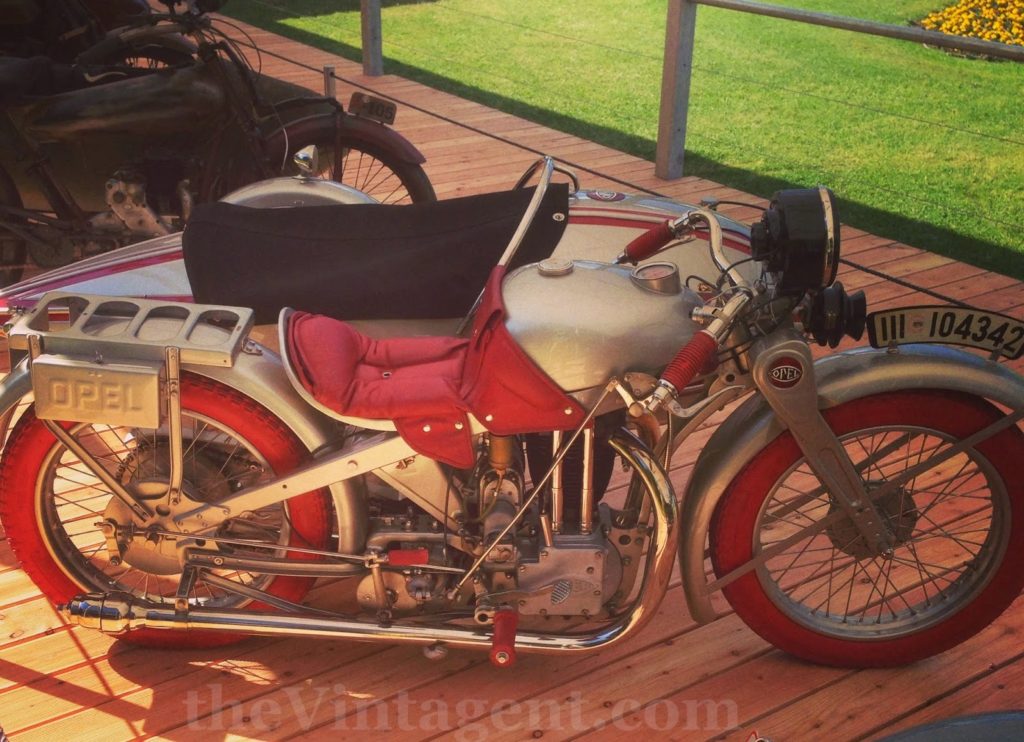
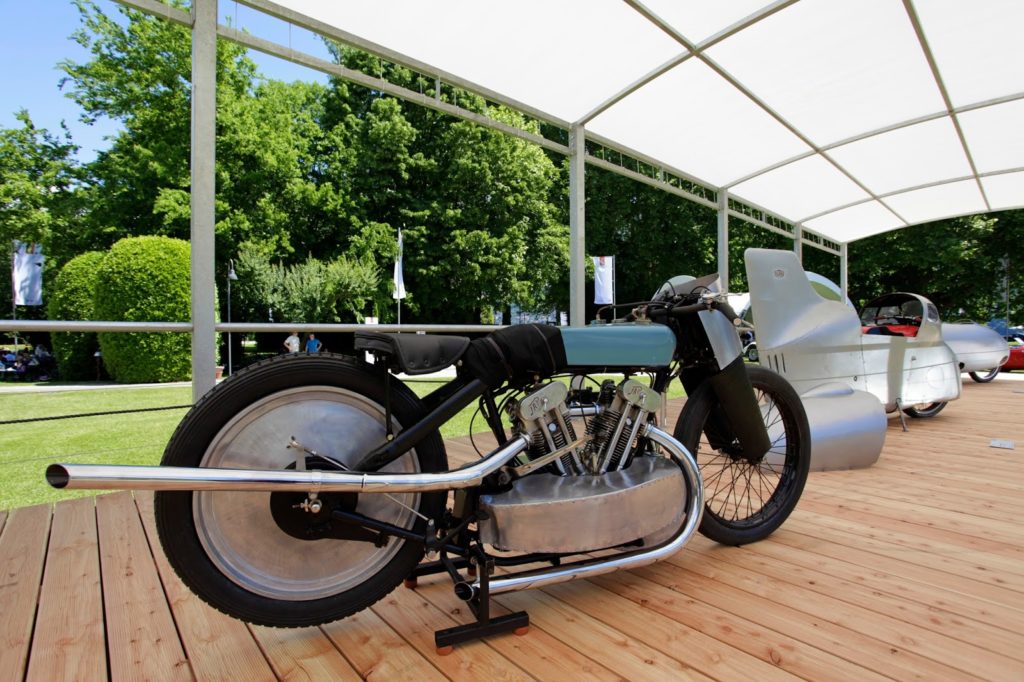
"where's your electric motorcycle?"
Saturday morning was open to the public at Villa Erba (for the first time - and quite a crowd had queued up), while judges scanned the bikes, a less formal process than at other shows. It's expected all the bikes run, and they do, so there's no moment of tension for owners as 5 guys in blue blazers (the bikies don't wear them, but the car guys do) stand around and watch you work up a sweat. The focus of this Concorso is 'eleganza' and 'best of theme' with no points system; less subjective than it sounds, and our discussion in the judge's chamber mid-afternoon was enlightening. In a first for me, it was suggested one bike was 'too shiny' to be a winner, and that a gorgeous Brough SS100 shouldn't win because it isn't American, in the 'Great Gatsby' class (I've been overruled at a show when the chief judge simply assumed a Brough should win for Brough-ness itself, and so it did).
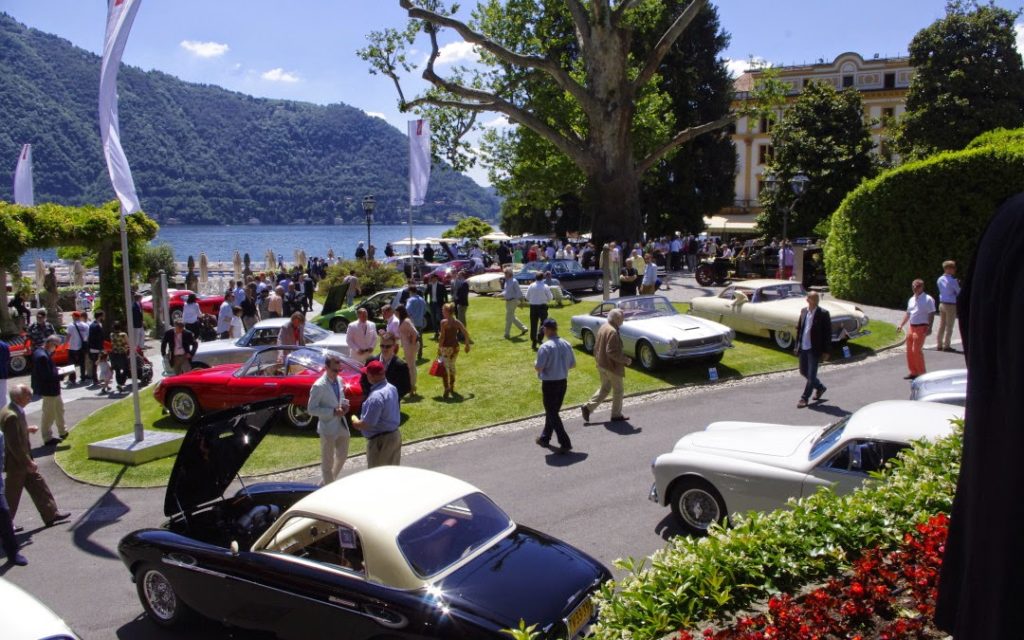
The Concorso at Villa d'Este; no bad angles, no bad viewpoints...
[Paul d'Orleans]
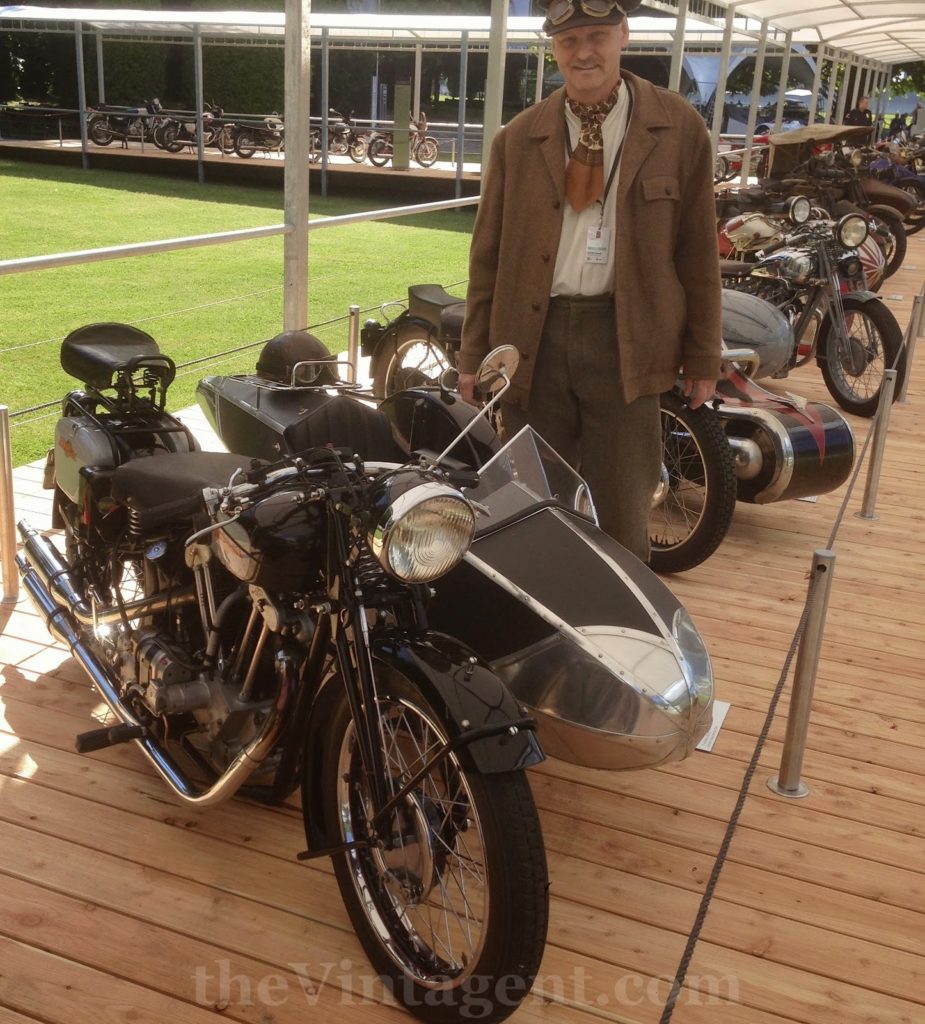
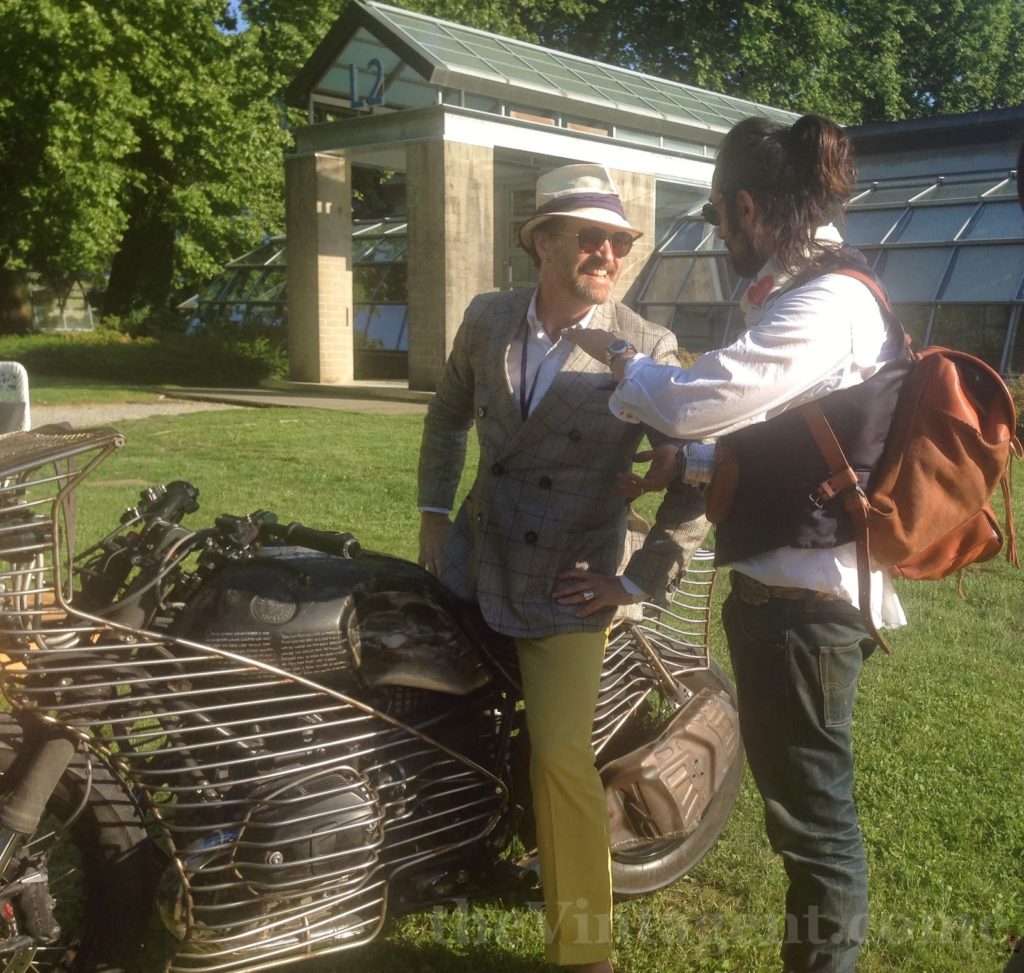
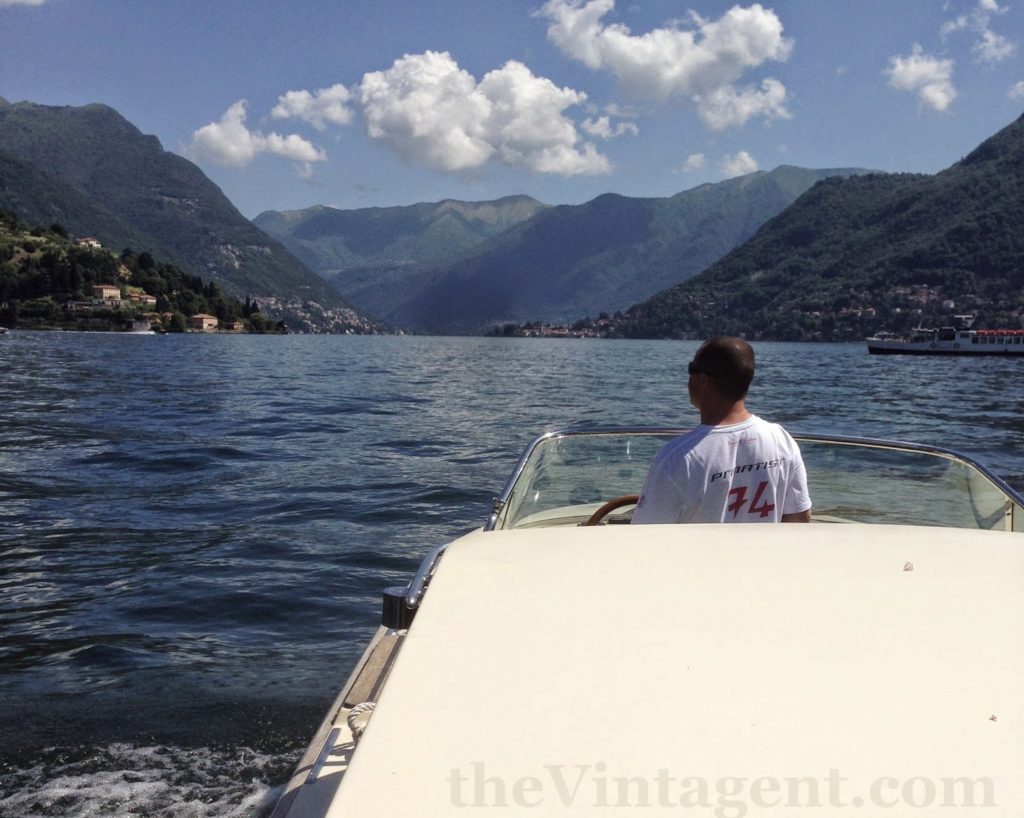
The Riva water-taxi service between the two Villas... [Paul d'Orleans]
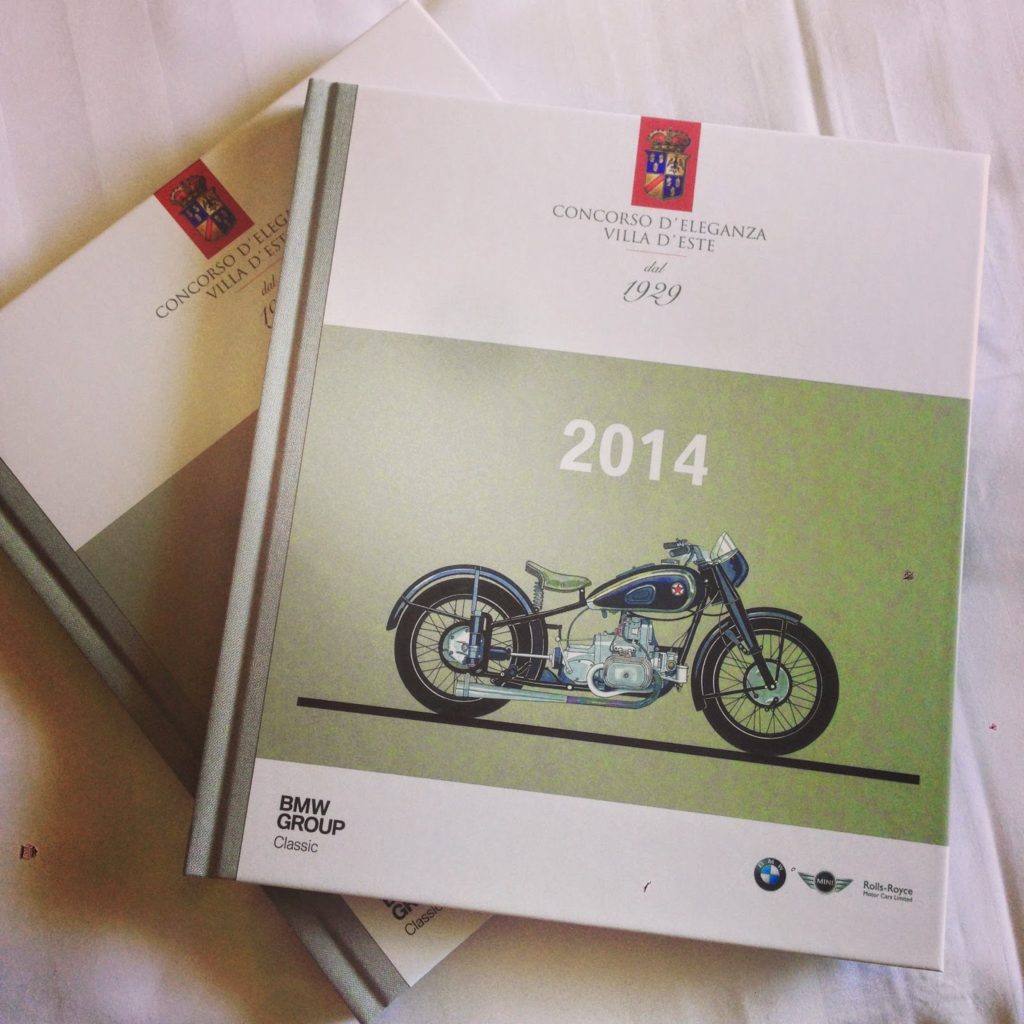
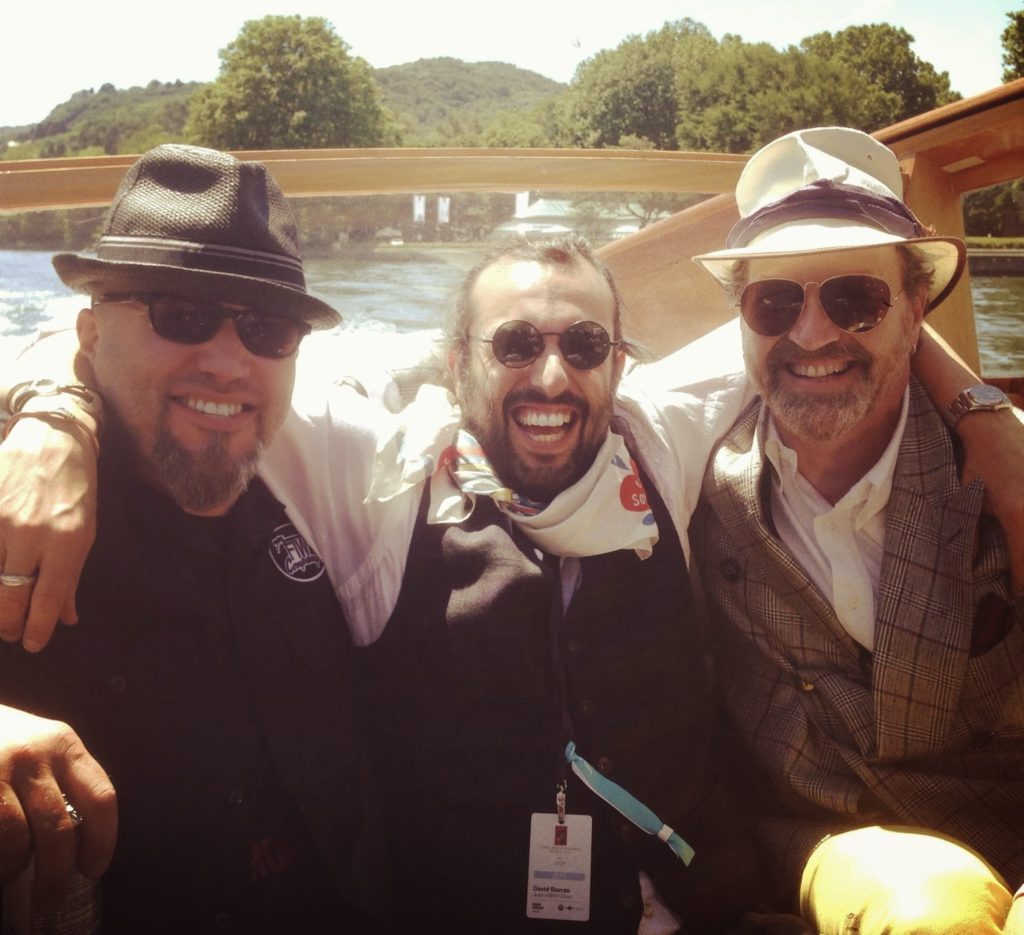
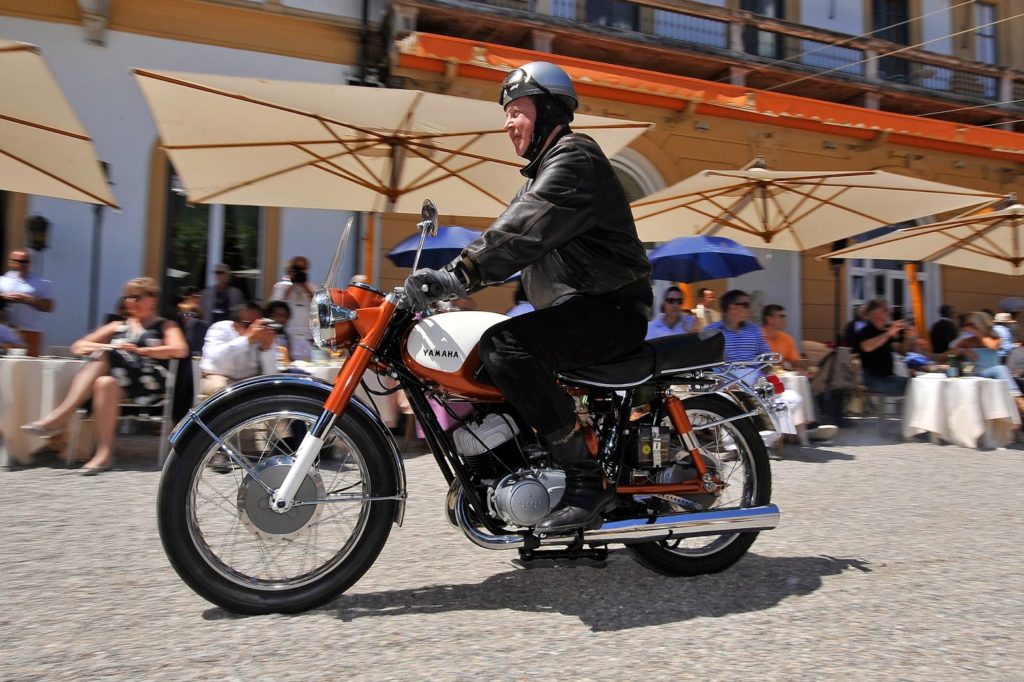
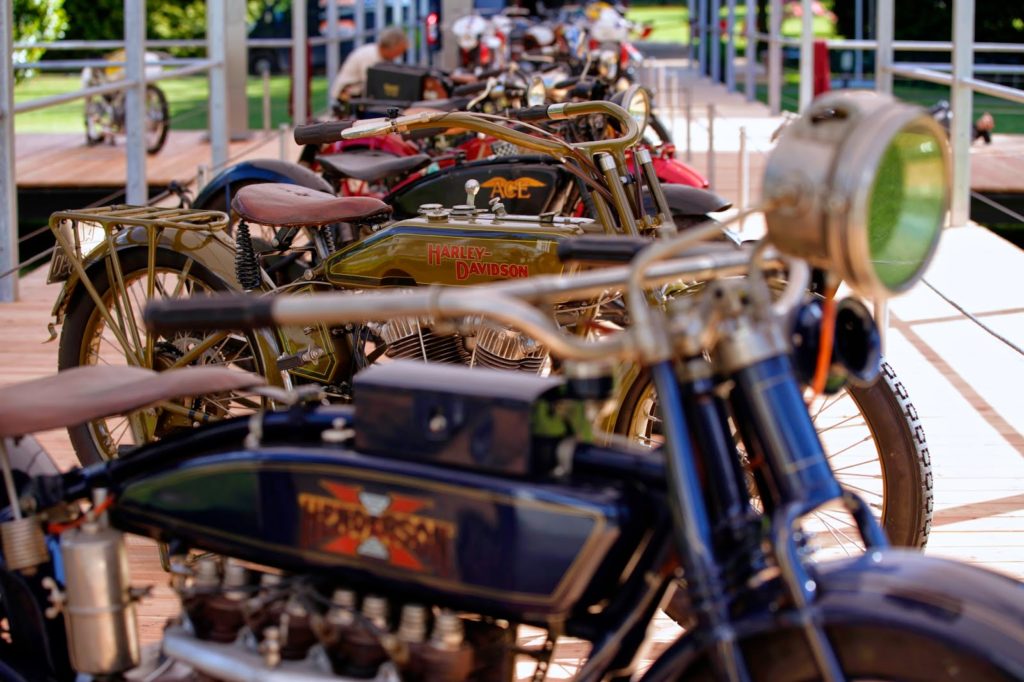

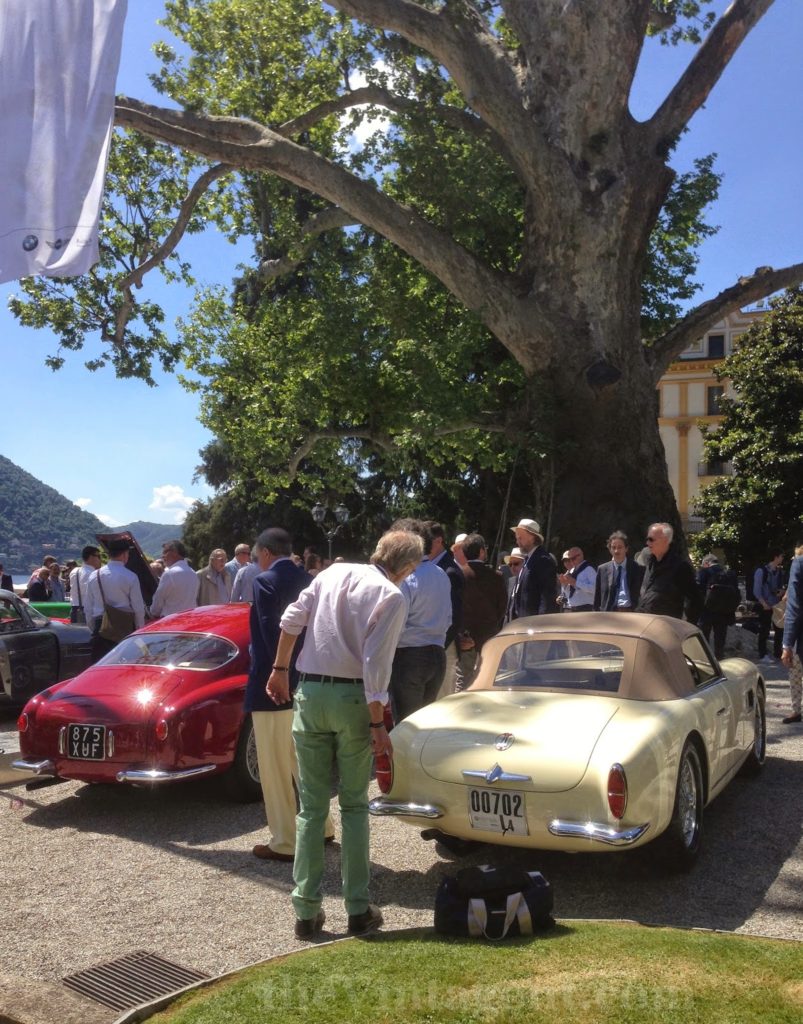
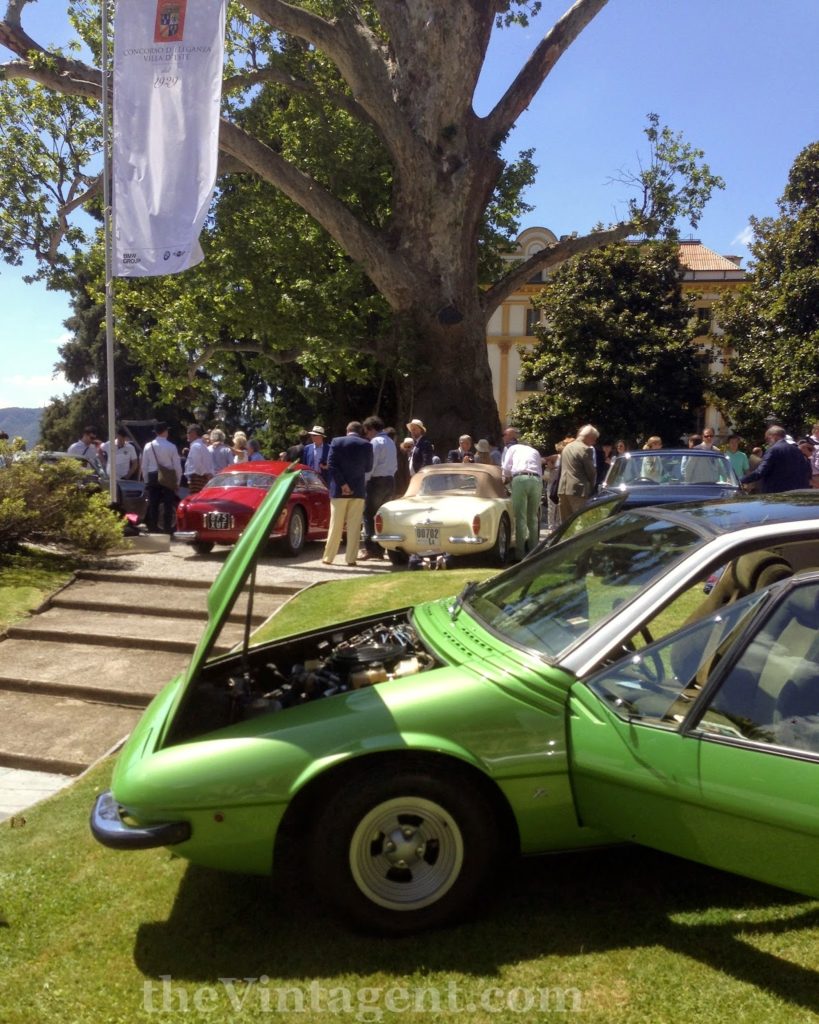
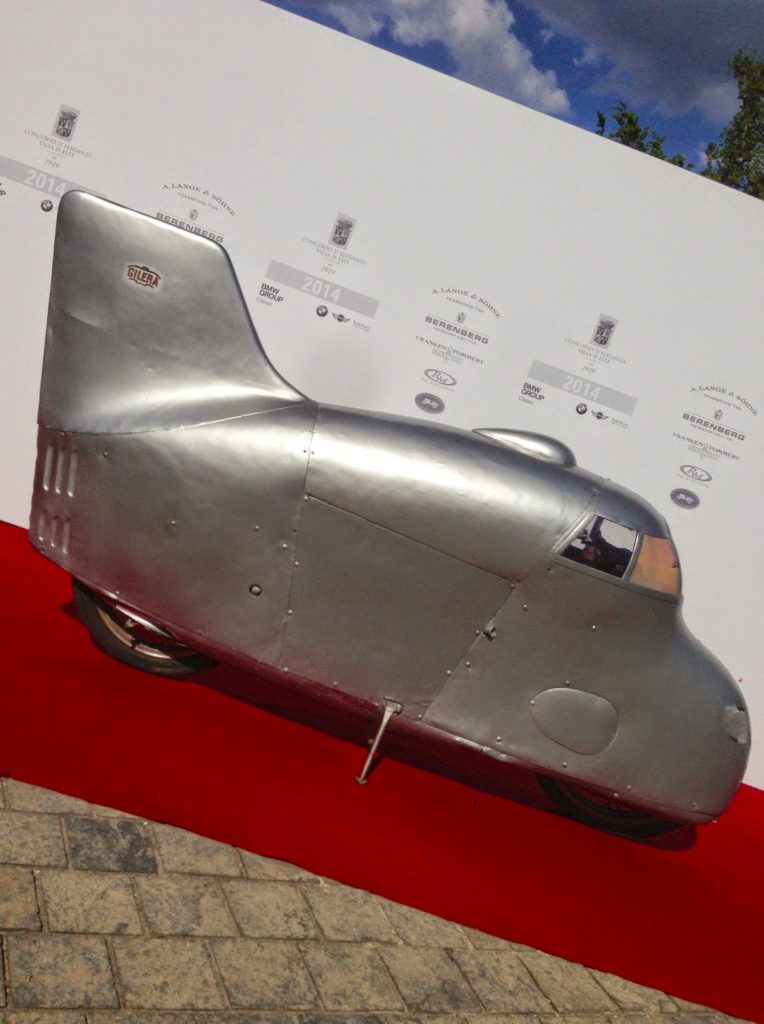
Starting Small: a Home-Made Electric Moped
I bumped into Nathan Jauvits on a San Francisco sidewalk, and was intrigued by his moped, the first home-made electric two-wheeler I've run across. The chassis is based on a '78 Puch Magnum, but an off-the-shelf electric motor and a power pack built by Nathan transforms the machine into something far from the buzzy, smoky original - an example of which I 'accidentally' purchased at the Bonhams Las Vegas auction - that will teach me to gesticulate in the front row!
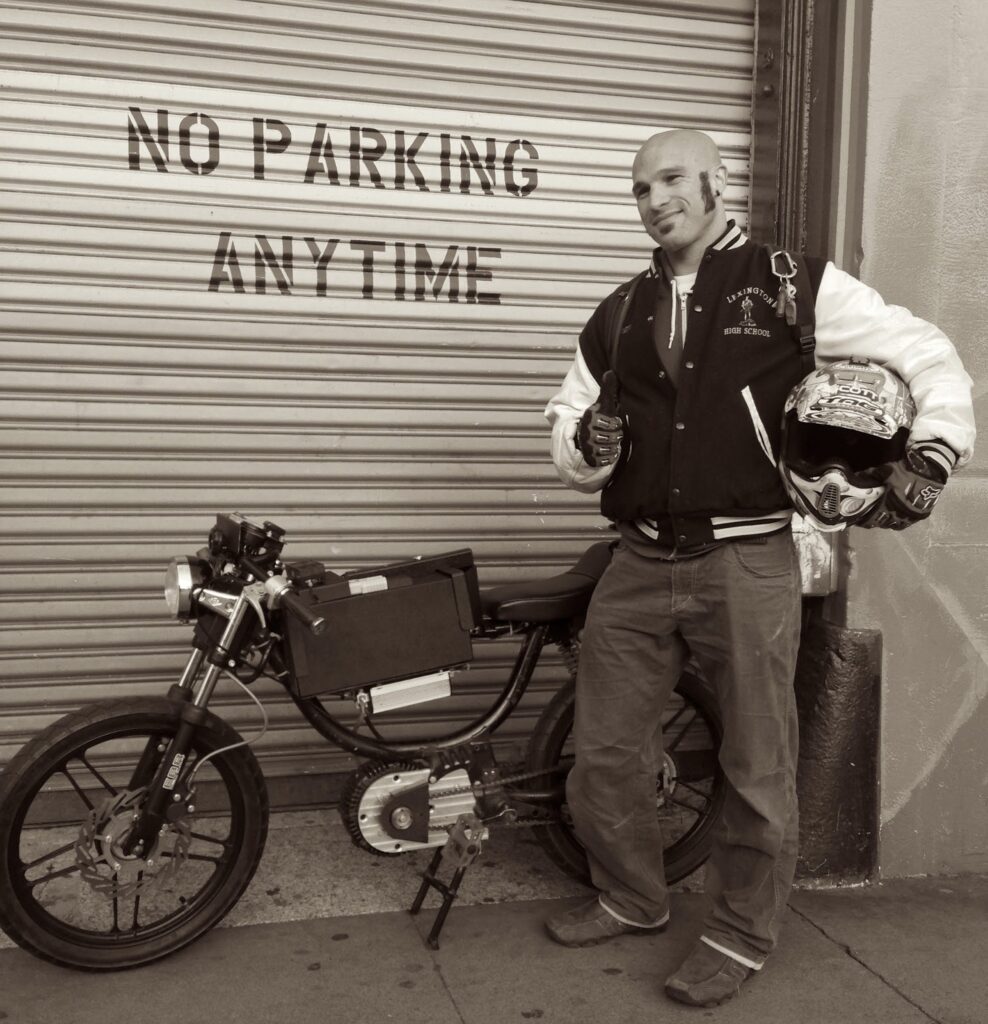


And a reminder, the Vintagent's first feature story on electric motorcycles was a premier of the world's first electric superbike, the Mission One designed by Yves Behar, way back in January 2009!]
 Paul d'Orléans is the founder of TheVintagent.com. He is an author, photographer, filmmaker, museum curator, event organizer, and public speaker. Check out his Author Page, Instagram, and
Paul d'Orléans is the founder of TheVintagent.com. He is an author, photographer, filmmaker, museum curator, event organizer, and public speaker. Check out his Author Page, Instagram, and
A Truly Global Custom Scene
Valen and his Motorcycle
The back story: I was asked by Remo Chen, a student at San Francisco's Academy of Art, to sit for a video interview for her broadcast journalism class, as she needed a subject who's 'living an interesting lifestyle'. I've had plenty of goodwill, good advice, and outright financial support while making The Vintagent the free and groovy motorcycle hang it has become, so I'm always happy to pay back the goodwill in any way I can. While Remo's interview was fun, the tables were turned when she explained how she'd found me - her boyfriend in Chengdu, China, is an avid motorcyclist, and had recently completed his first custom motorcycle build. Much like back in 2010 when I discovered the 'Chai Racers' in Mumbai, this was the first I'd heard of a Custom scene in China (as my head is mostly in the Vintage world), and when Remo showed me photos of the bike, I suggested we introduce Valen's work via The Vintagent. The following is Remo's account of photographer Valen Zhou's first Custom. The good news? He's already working on another...
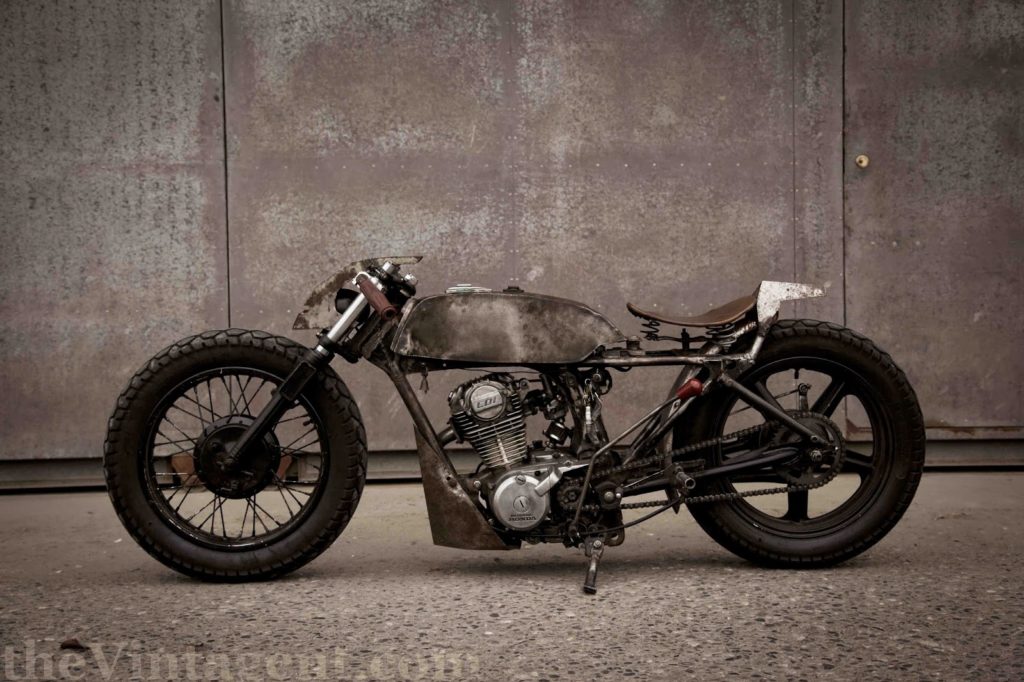
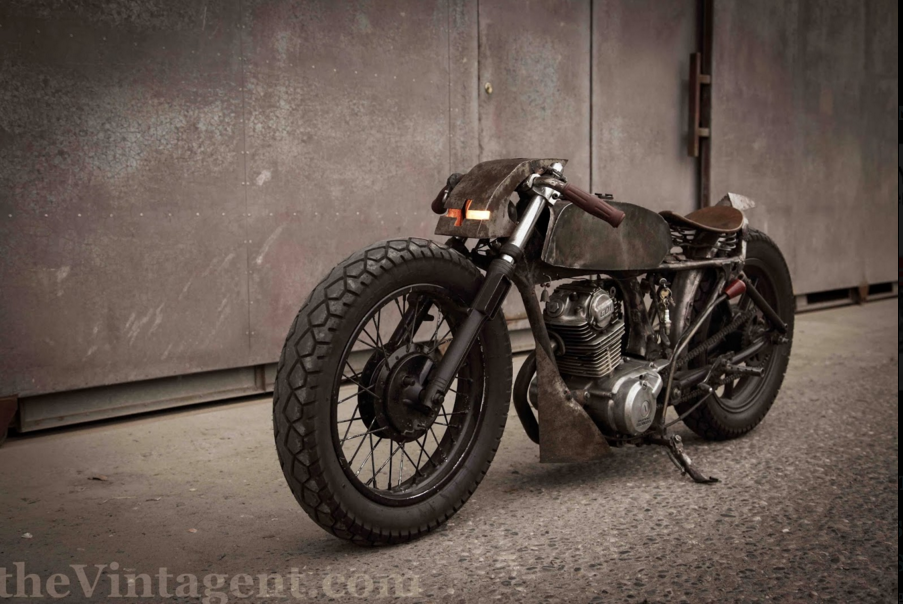
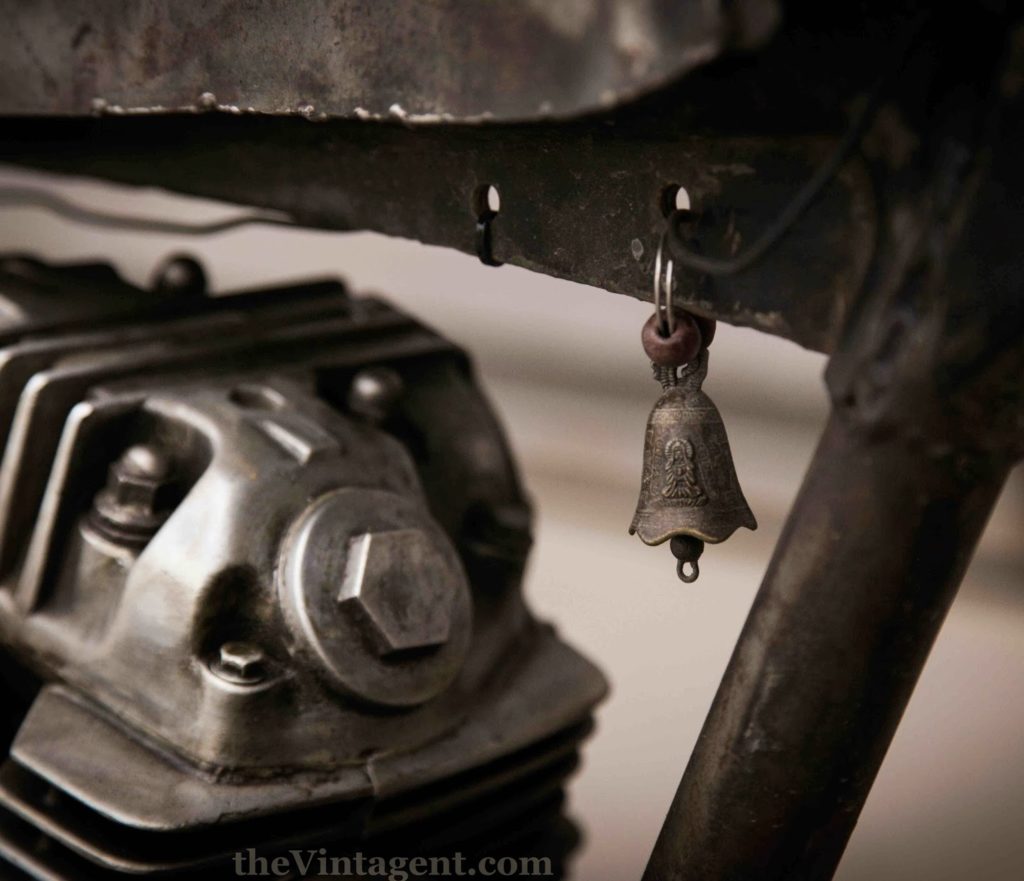
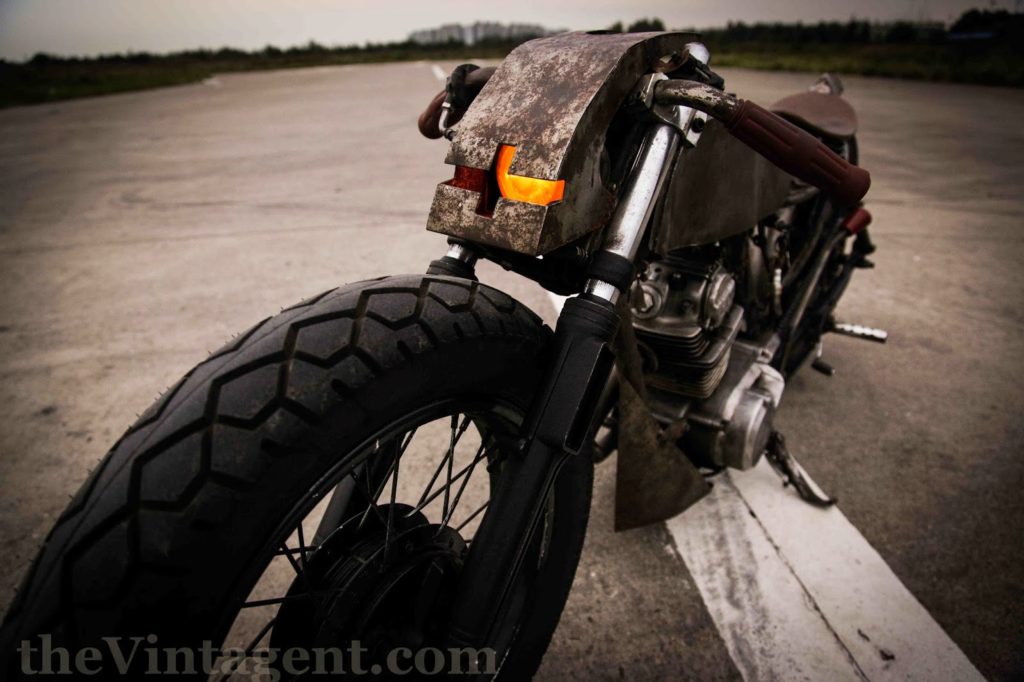

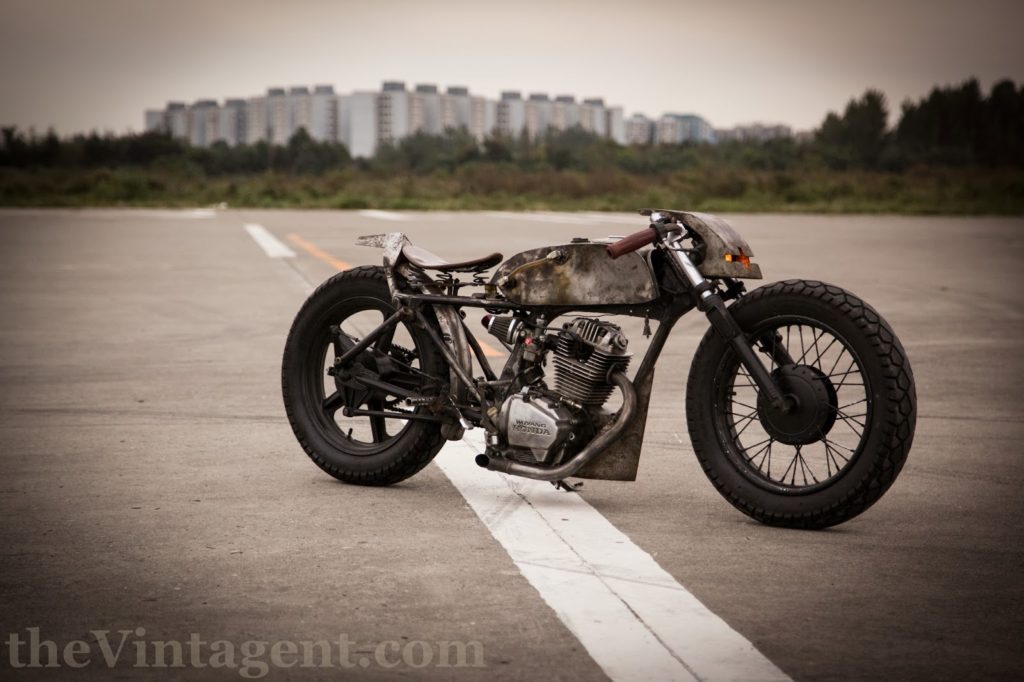

'The Loveless': Way Beyond Torn Up
The Loveless remains much as its title suggests – unloved and unknown outside a core few who consider it an amazing motorcycle film. The first-time feature for Kathryn Bigelow, who went on to earn two directing Oscars for her meditations on US/Middle East relations (The Hurt Locker and Zero DarkThirty), The Loveless bombed at theaters when released in 1981, but showcased Bigelow’s genius twenty years before the Academy realized who they were dealing with.
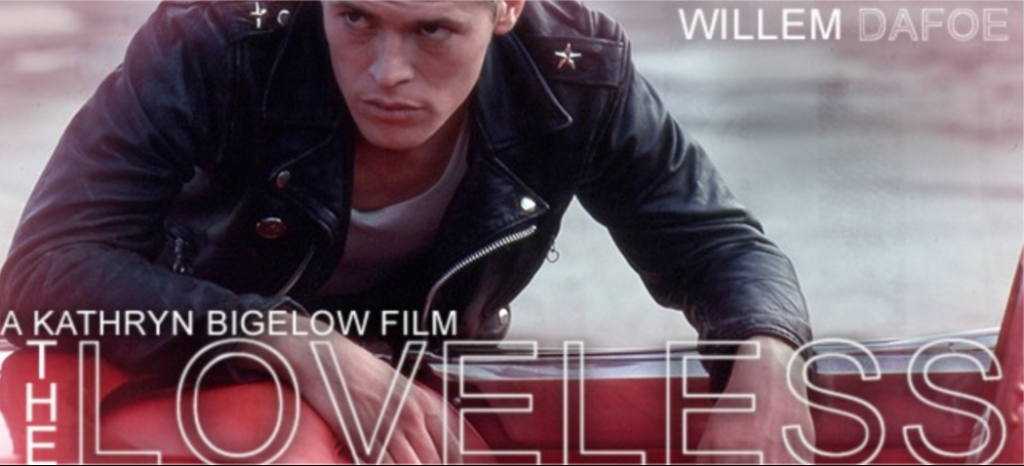
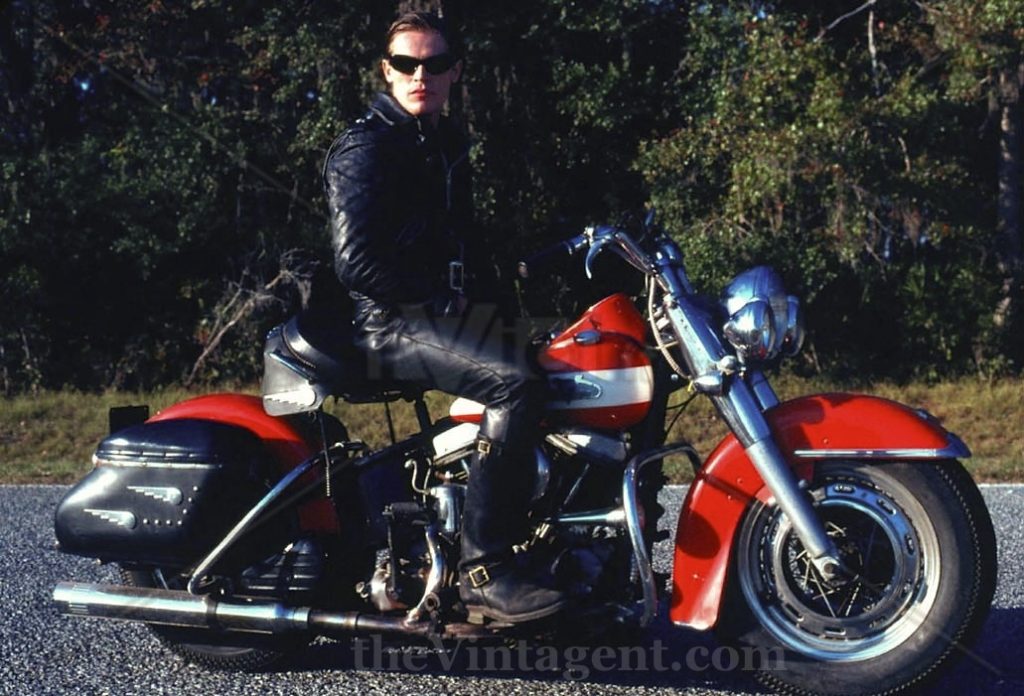

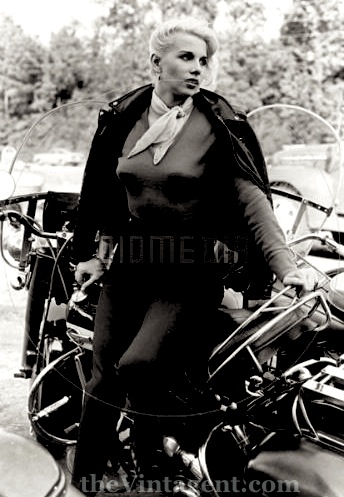

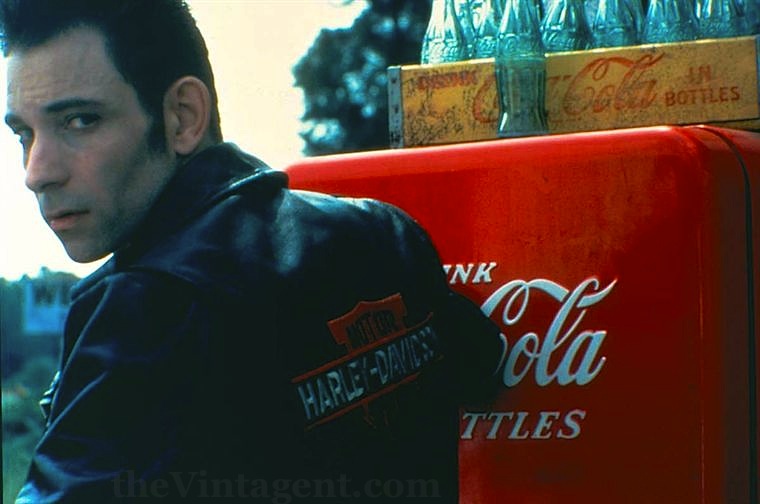
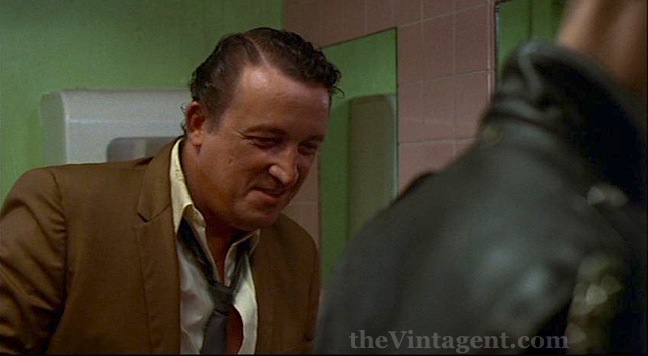
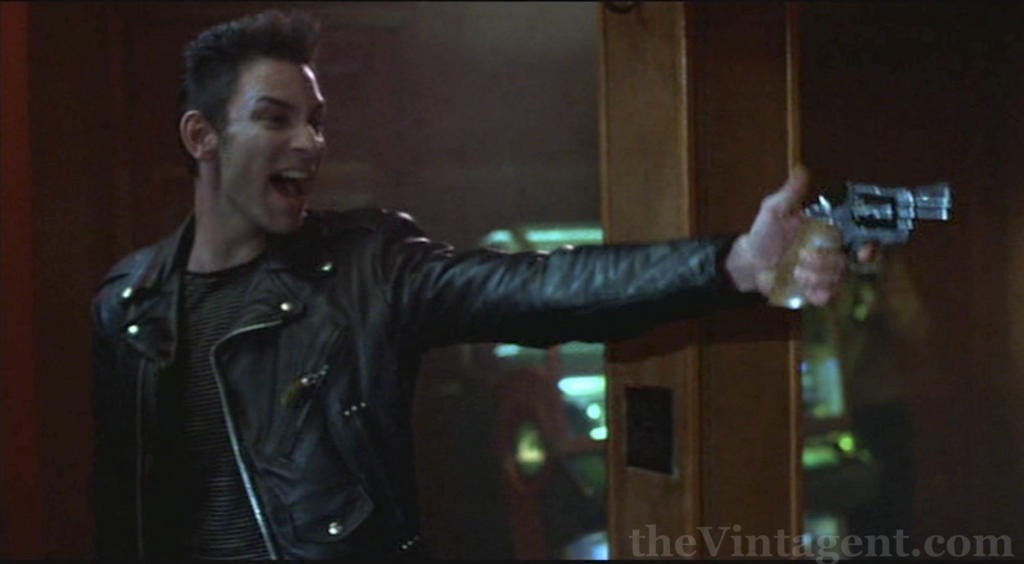
Occupy Pebble Beach!
[This article was commissioned by The Automobile in 2013 - the best old-car magazine in the world. The text reflects my distaste for the event, and editor Jonathan Rishton chose to print it as written, saying, "Thanks for the report. It is superb - one of the best, most insightful and honest things we'll have ever published. Thanks so much." Nothing has changed at Pebble since then, except the raising of ticket prices, and the elimination of motorcycles. Enjoy the read - it's a scandal!]
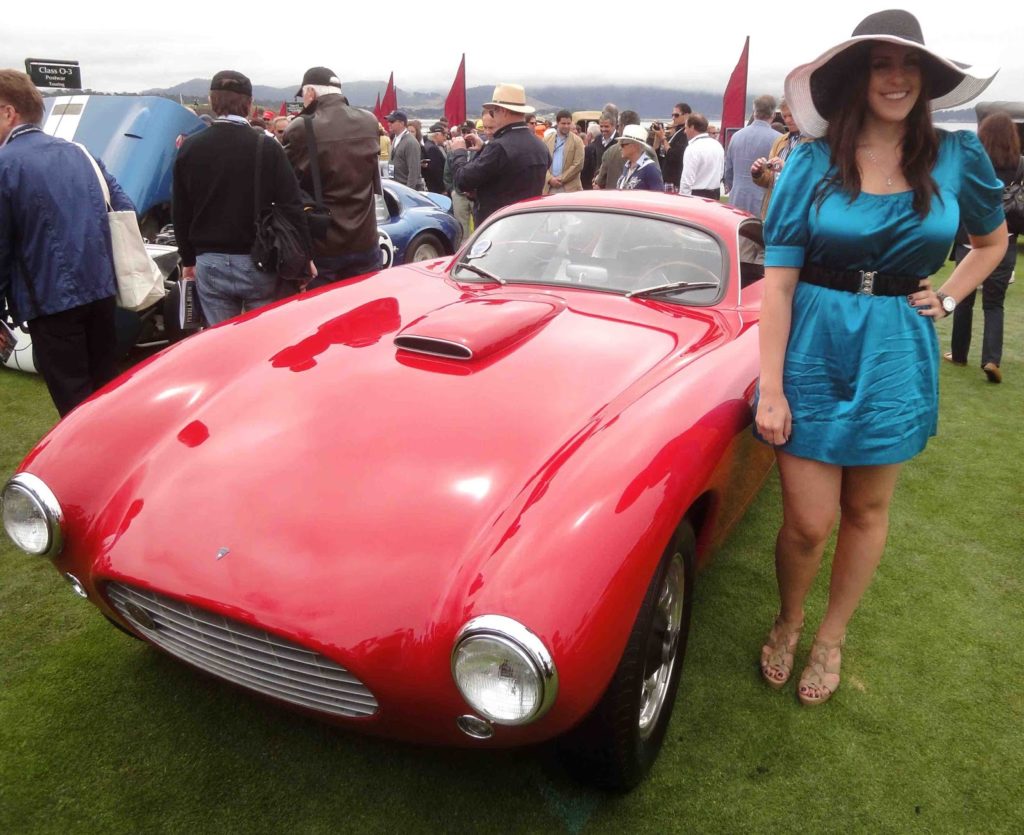
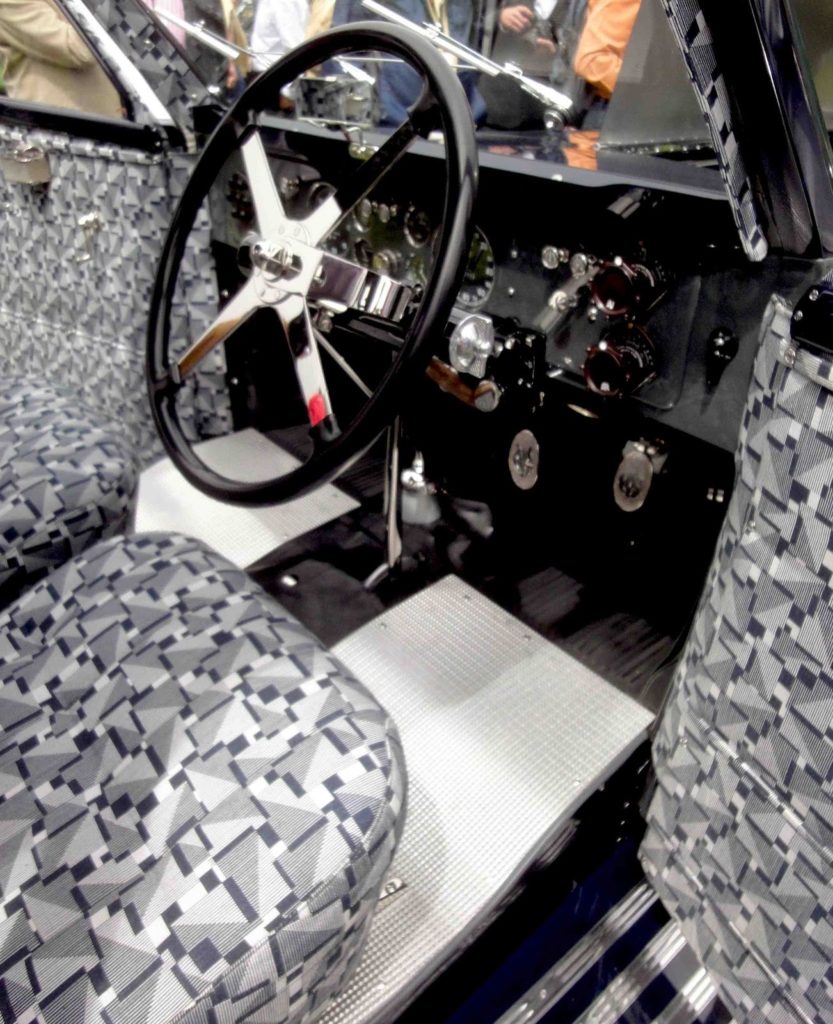
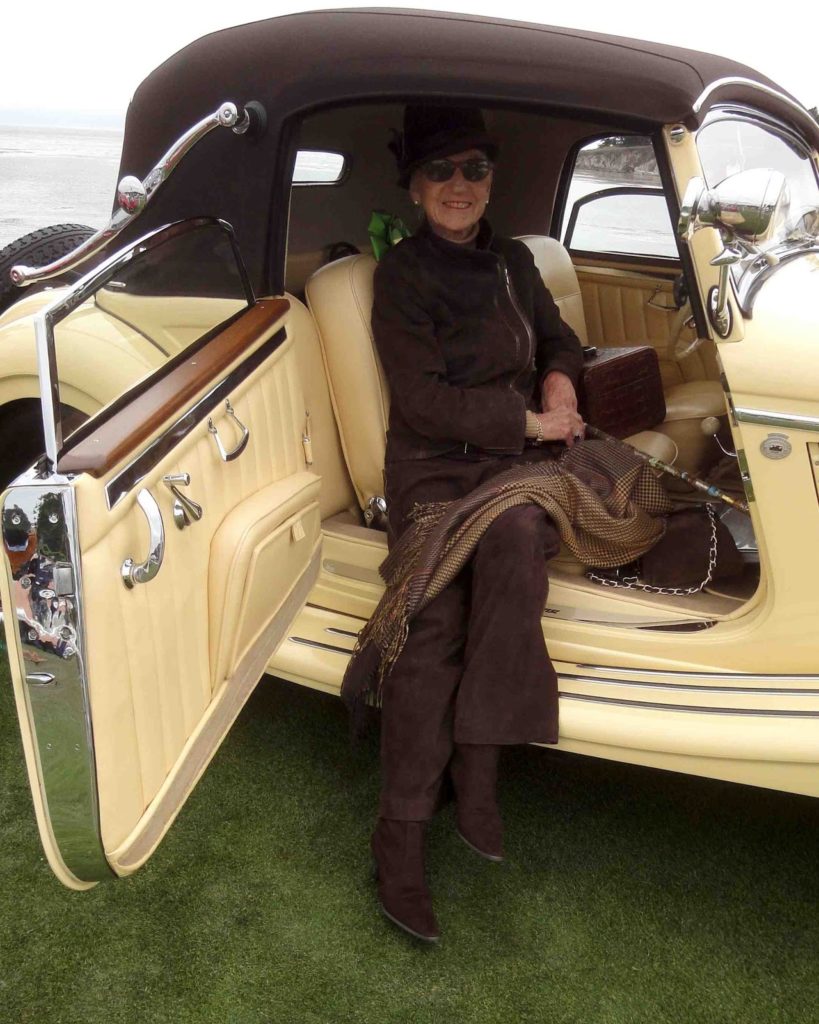
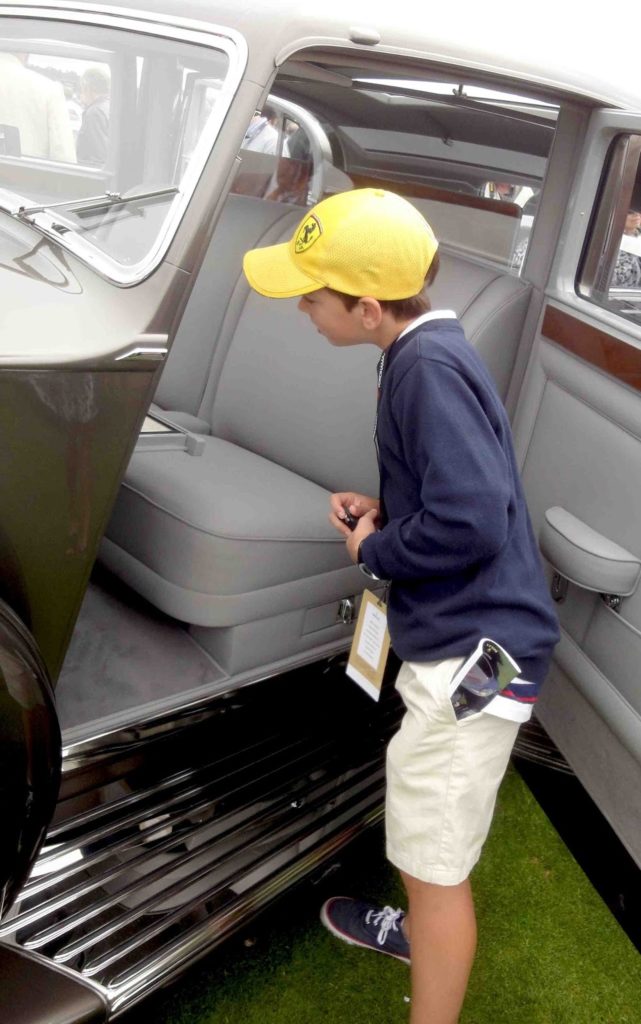

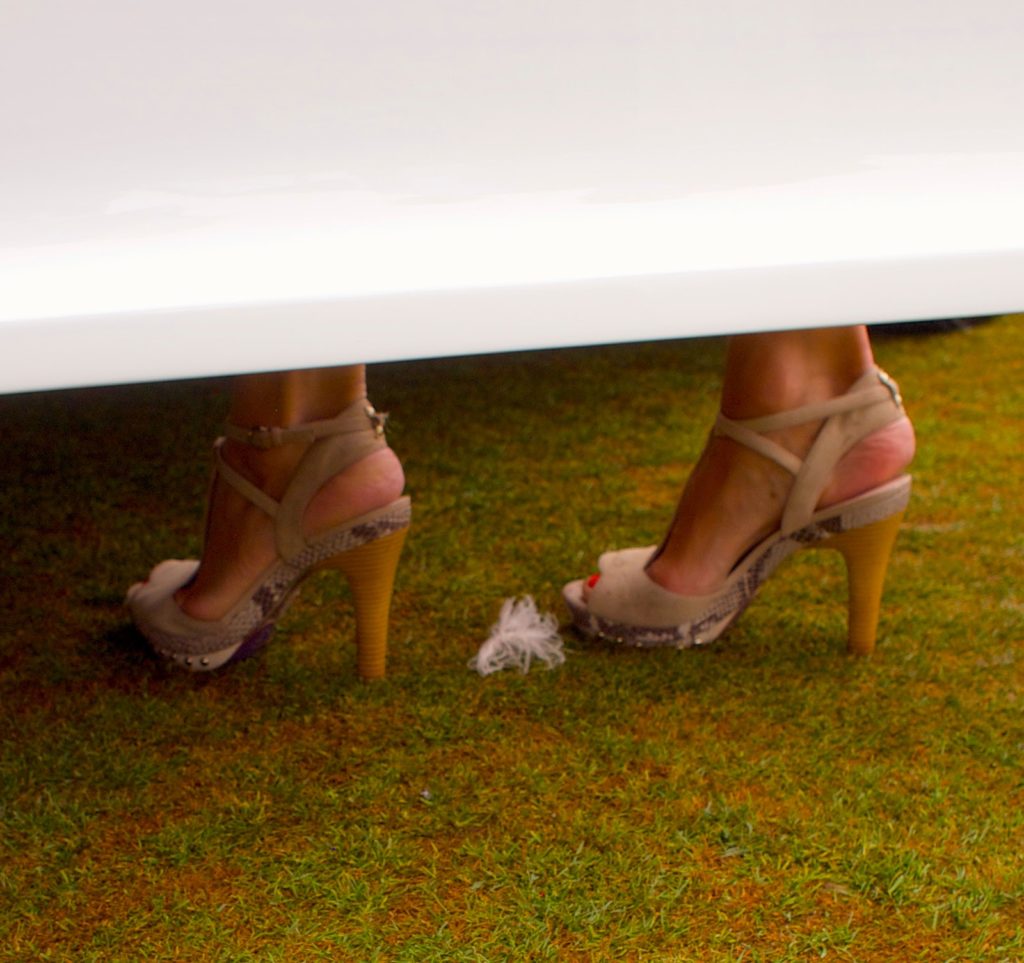

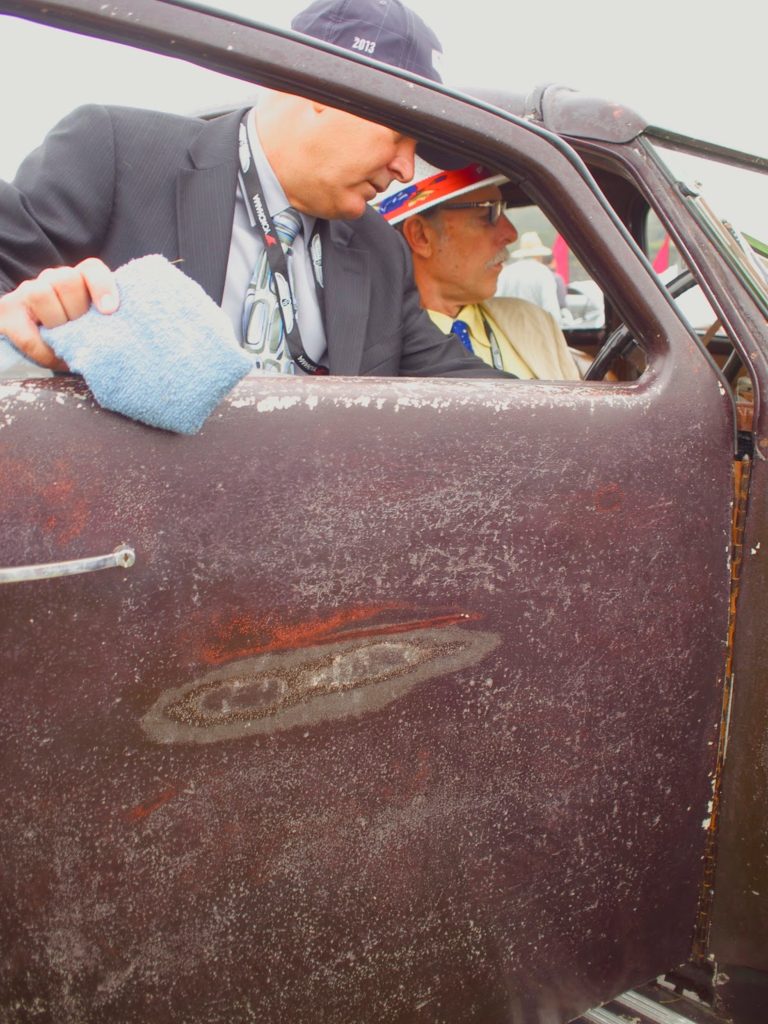
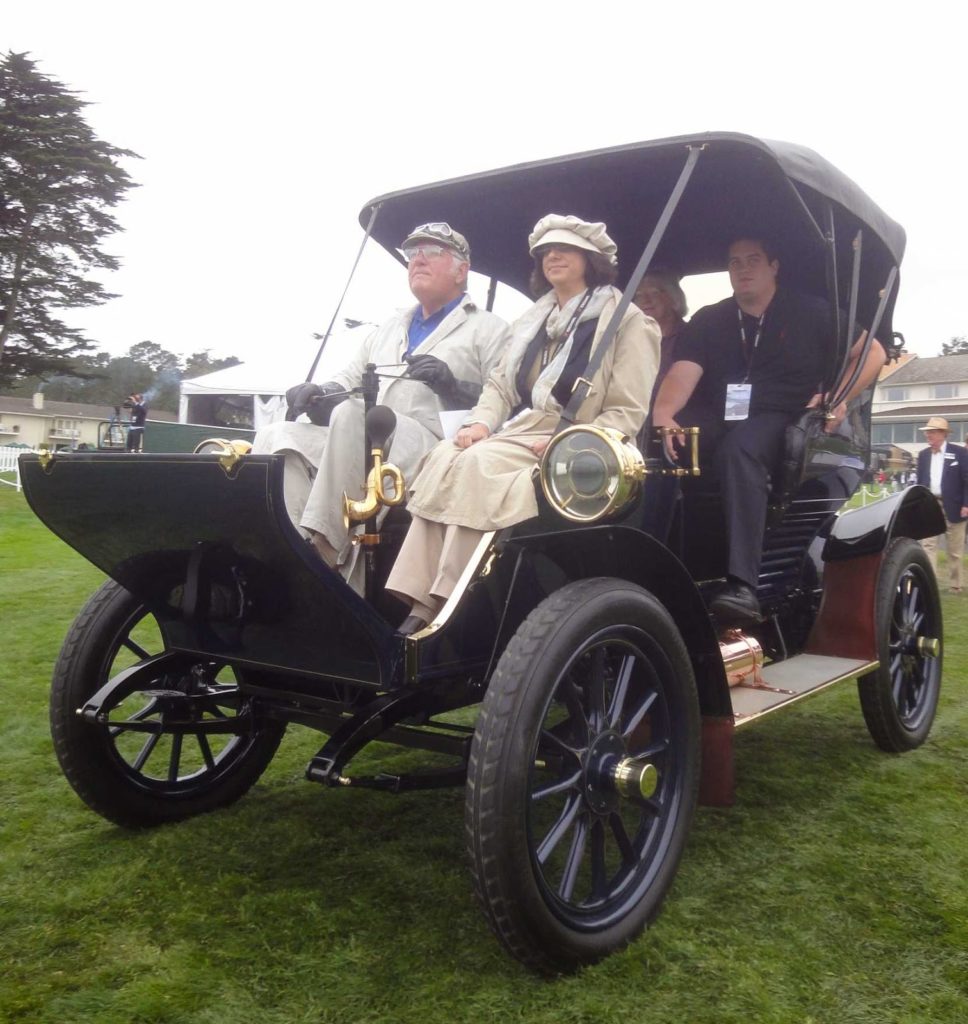
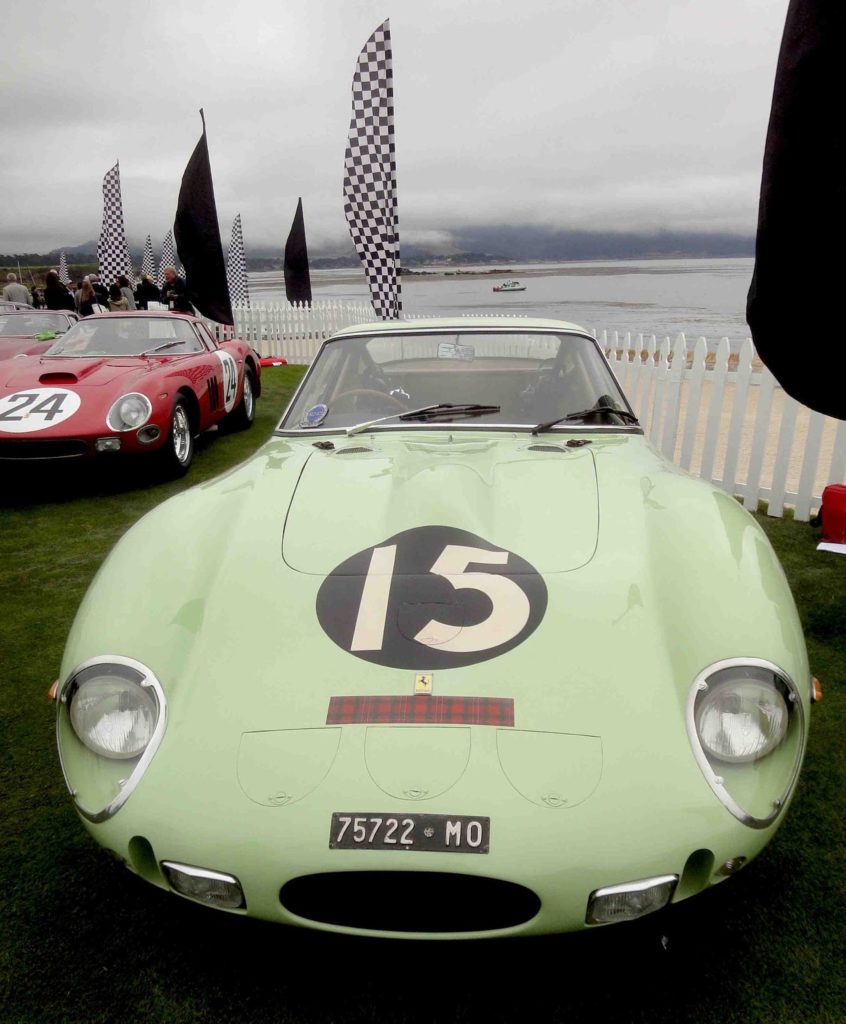
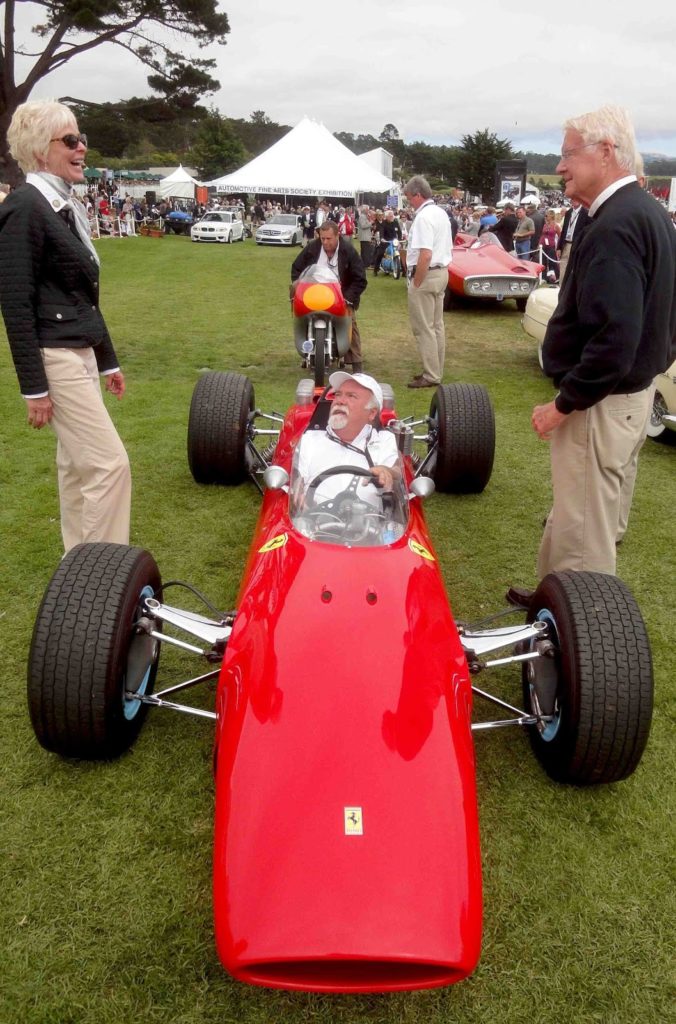

Alberto Garcia-Alix: Wheels&Waves 2013
Renowned Madrid photographer Alberto García-Alix was a featured artist at the 2013 Wheels & Waves 'Artride' gallery exhibit in Biarritz. Of course he also brought his cameras to souther France, and shot the scene and the people in his inimitable style. He has generously offered to share his portfolio of images with TheVintagent, which is presented here with minimal comment.
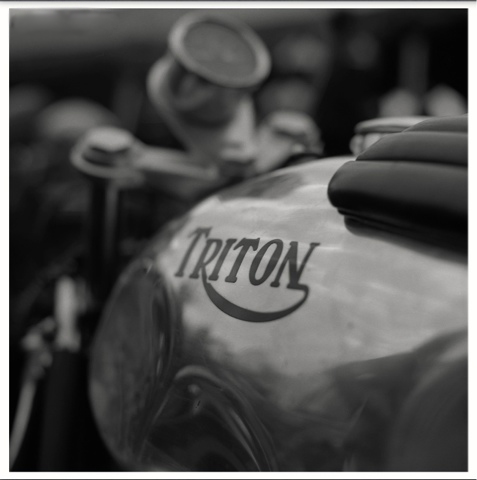
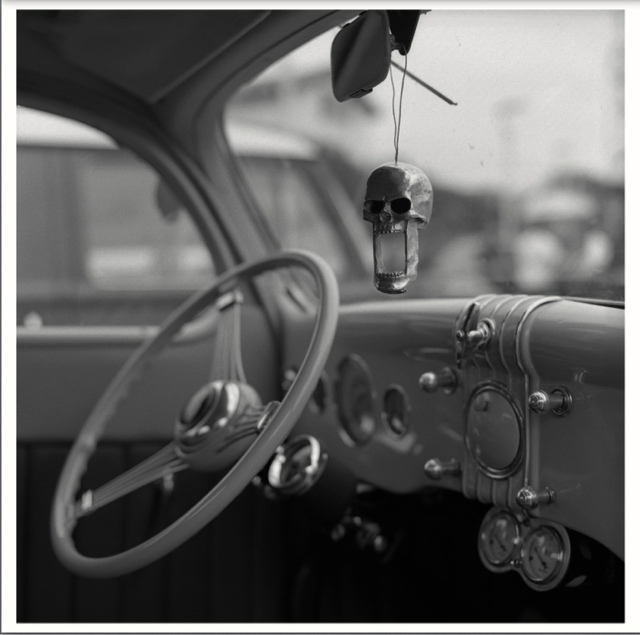
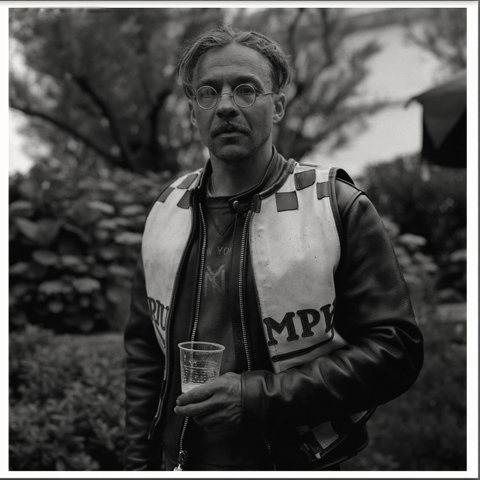
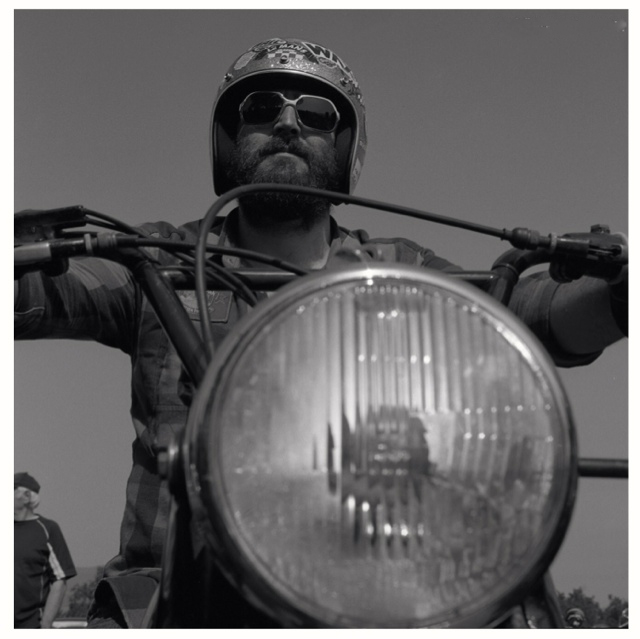
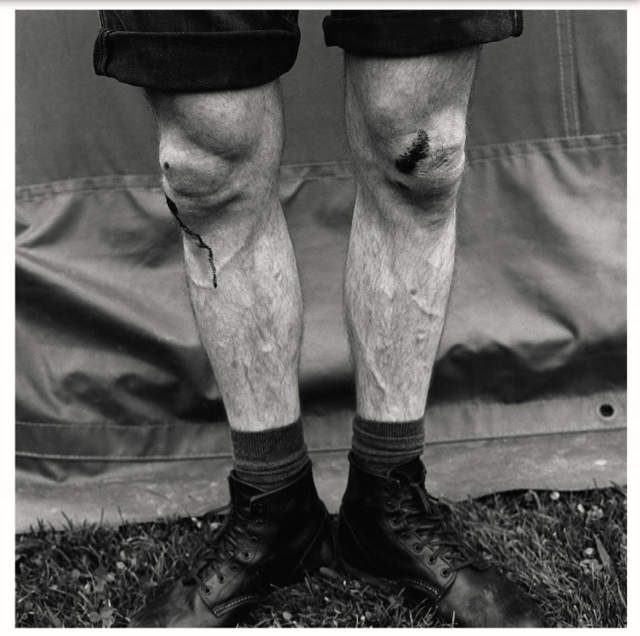
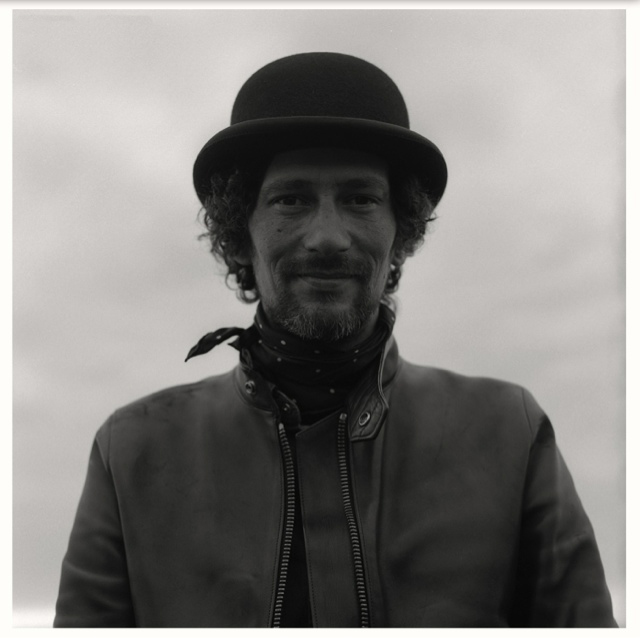

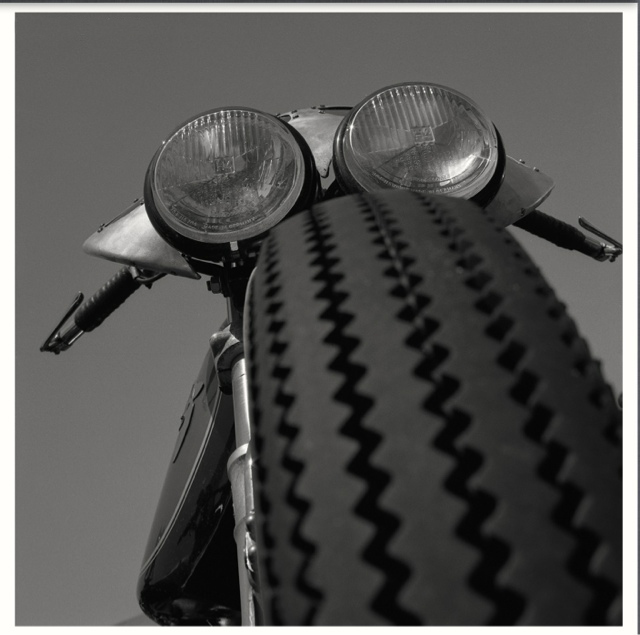
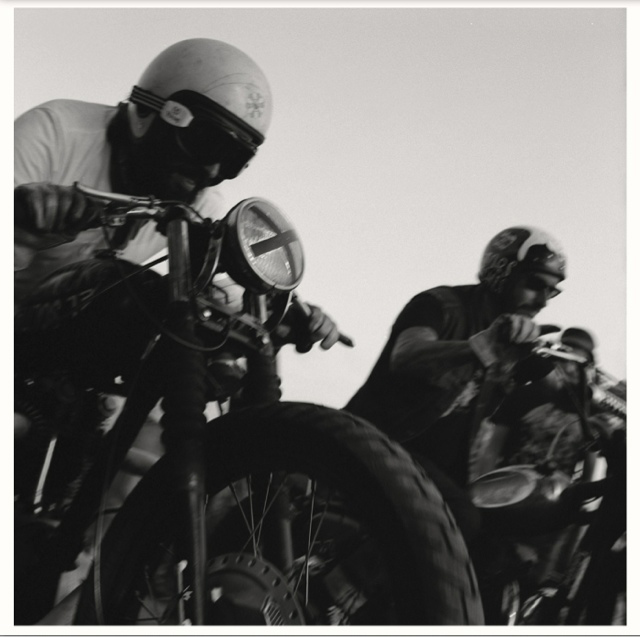
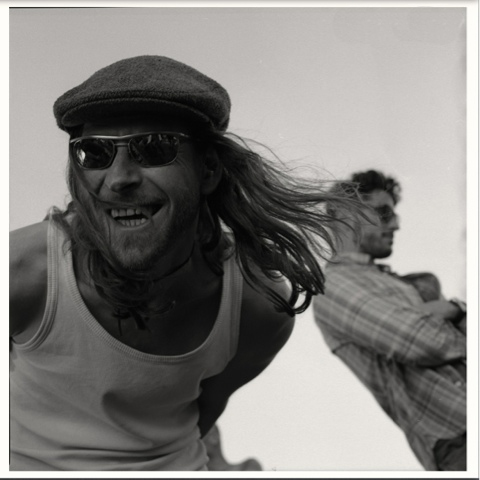
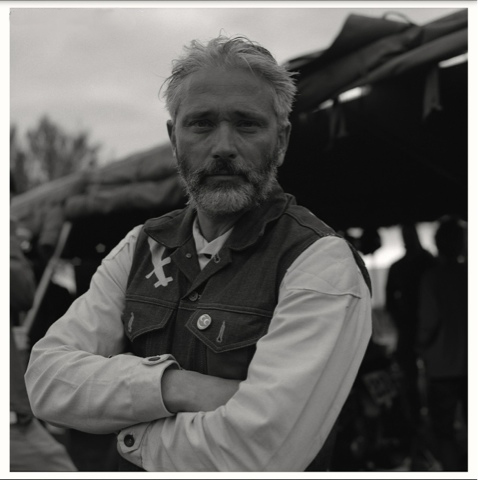
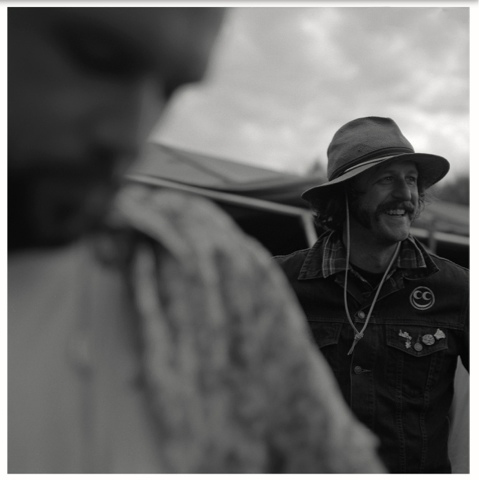



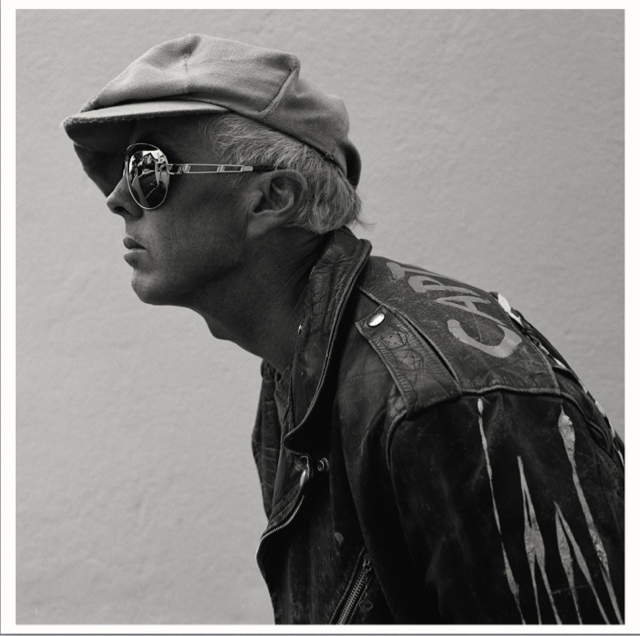
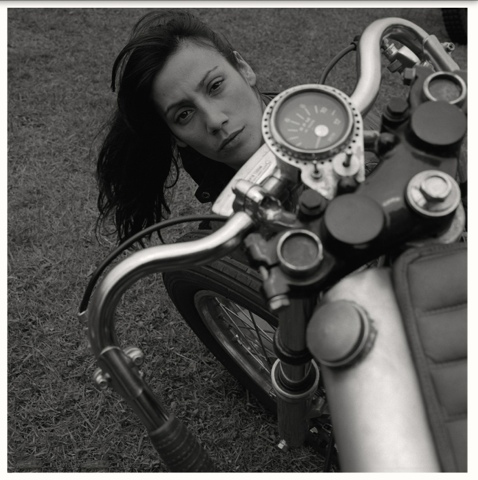
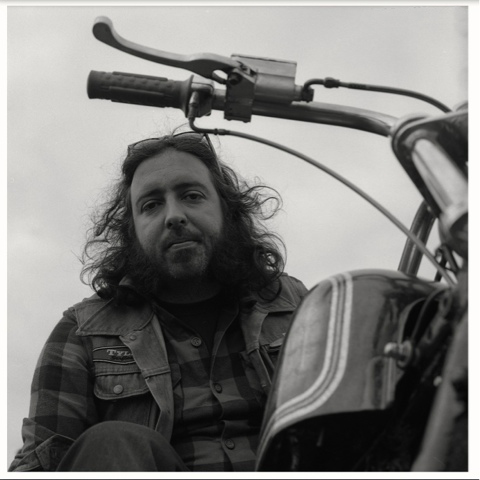
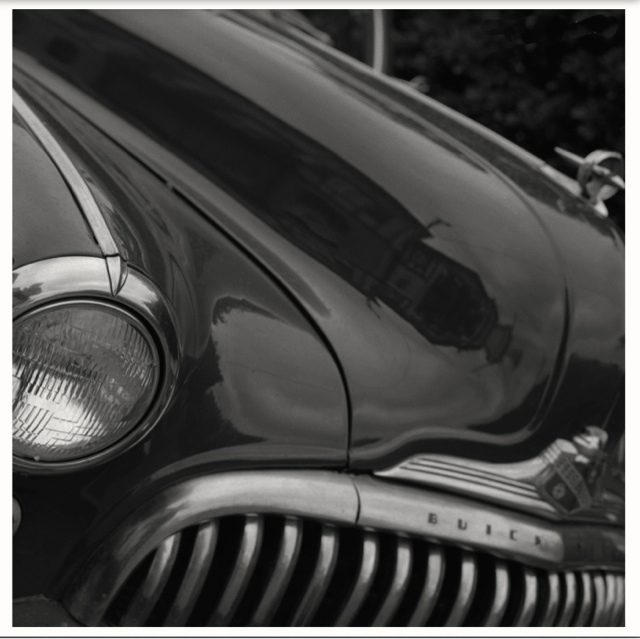
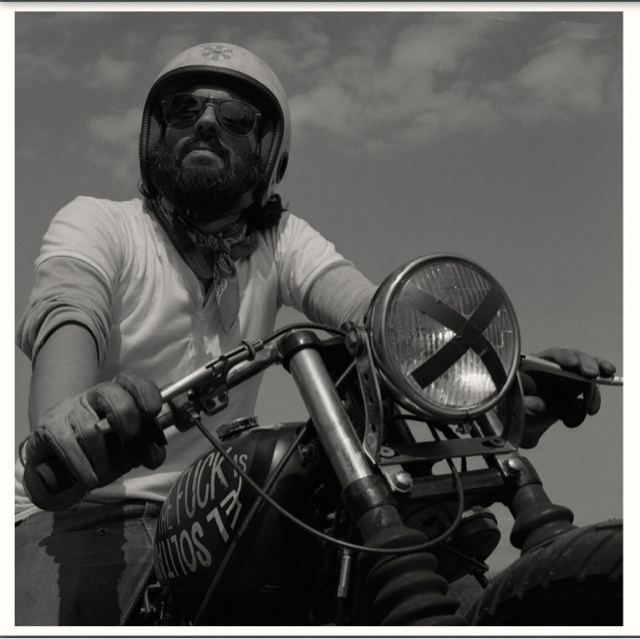
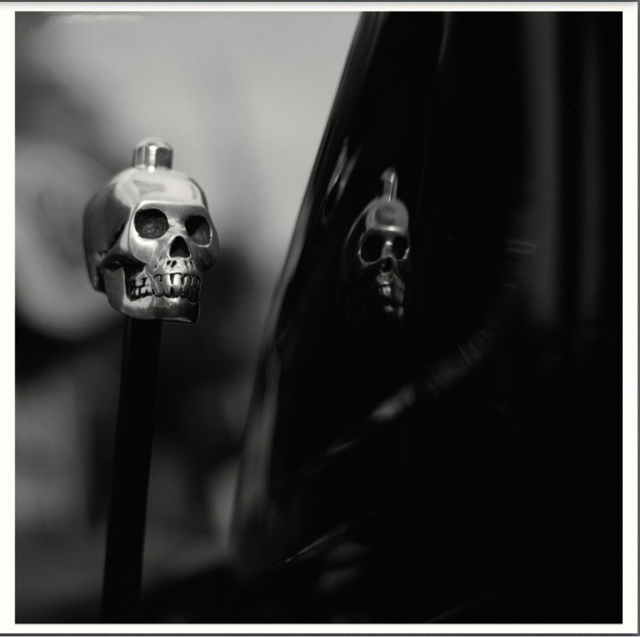
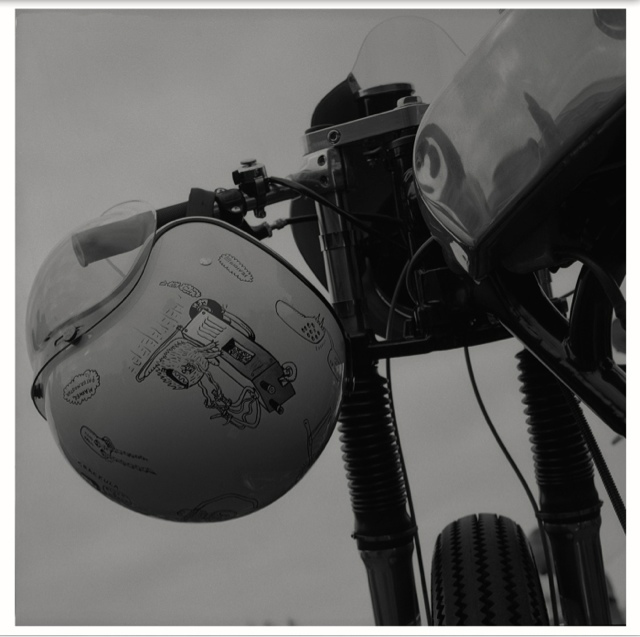


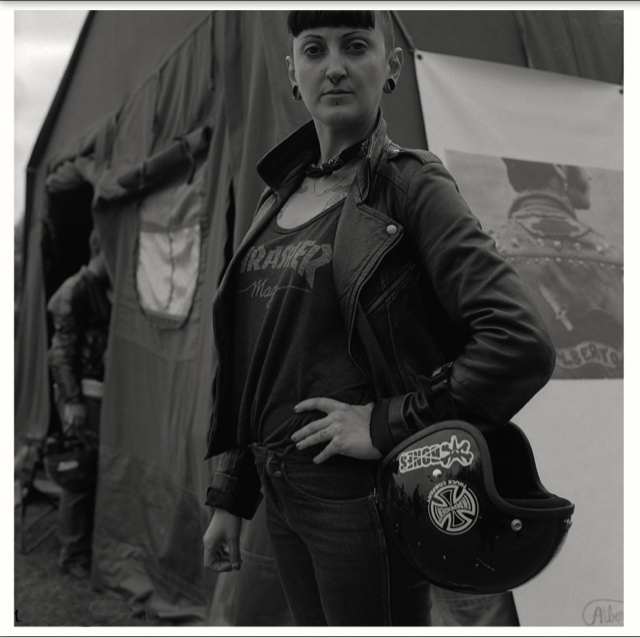
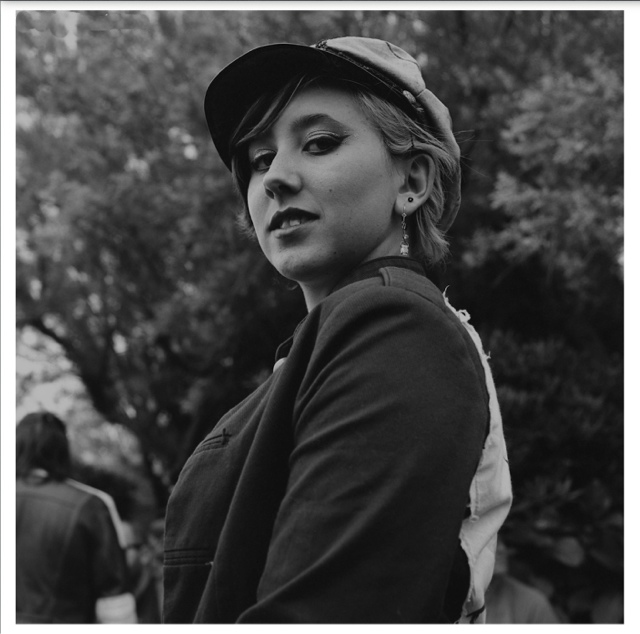
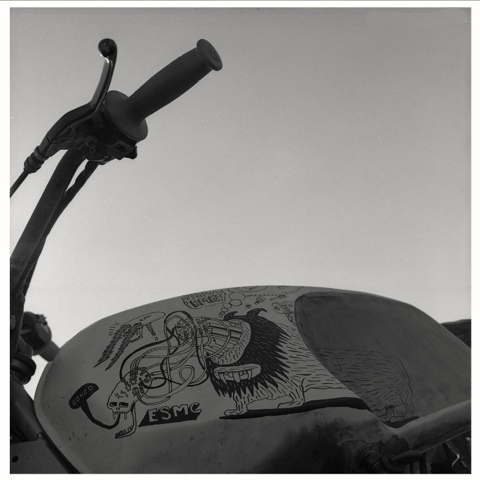


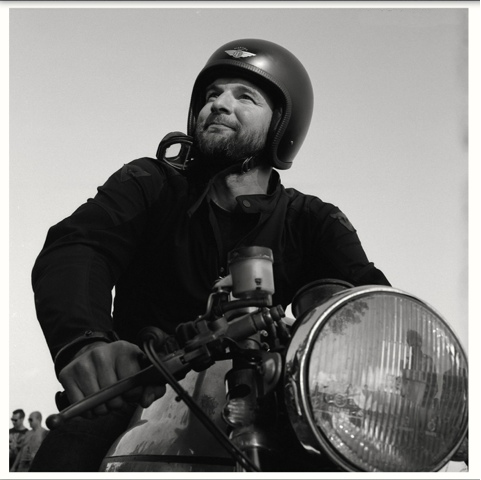
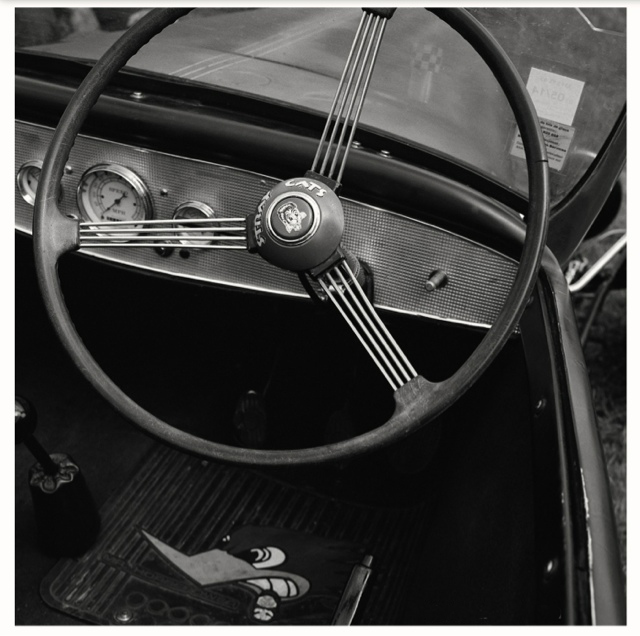

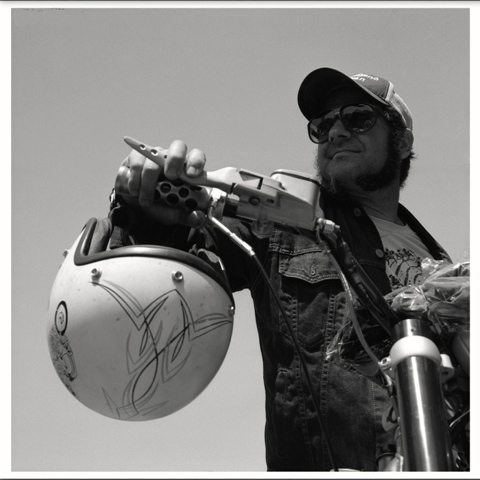
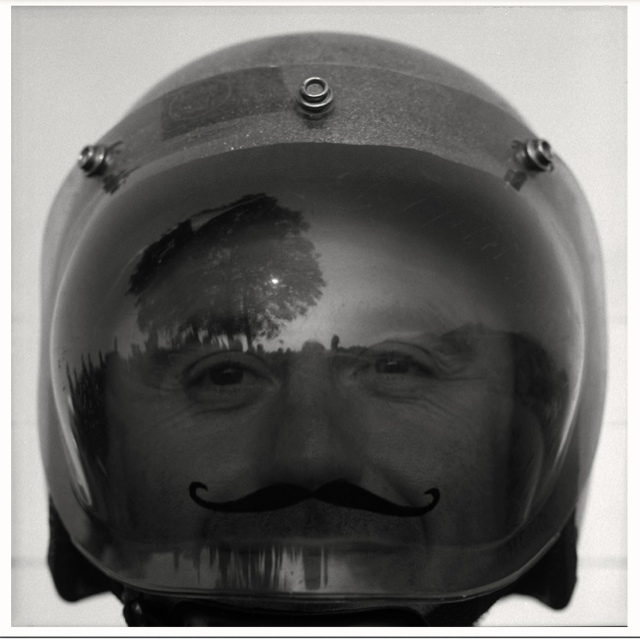
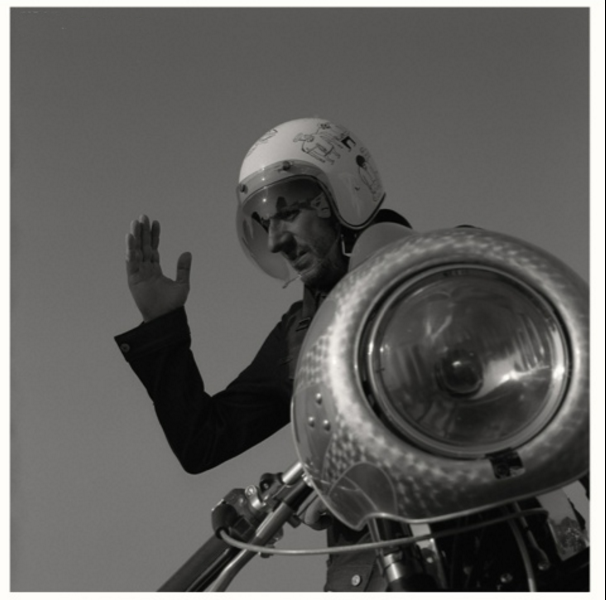
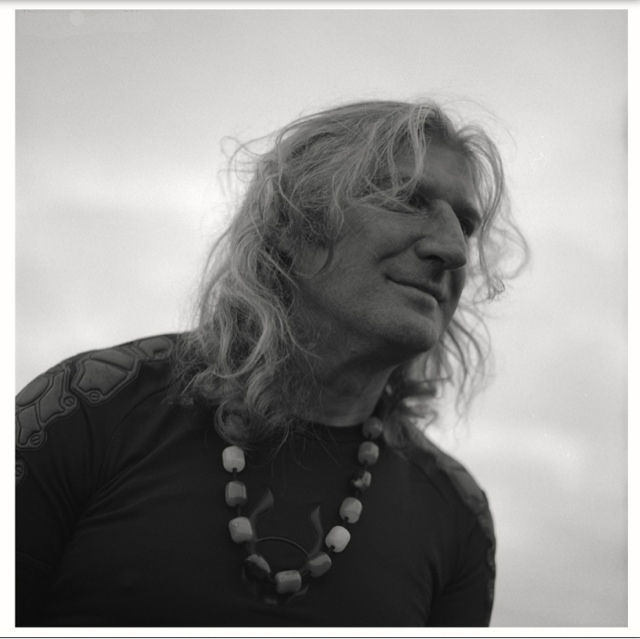

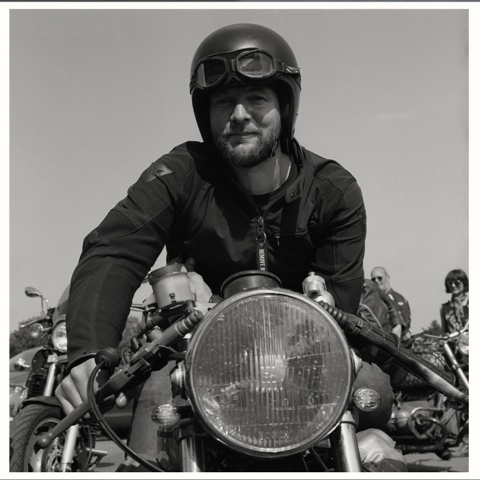
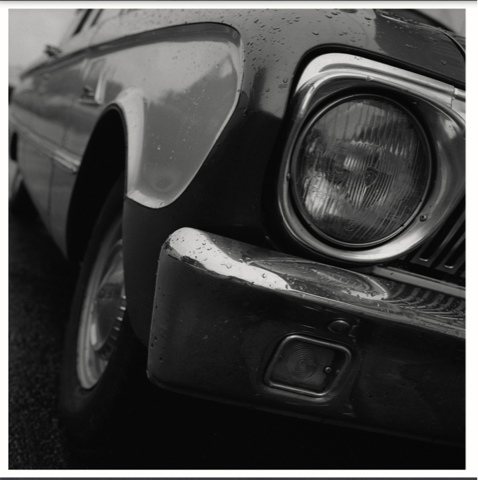
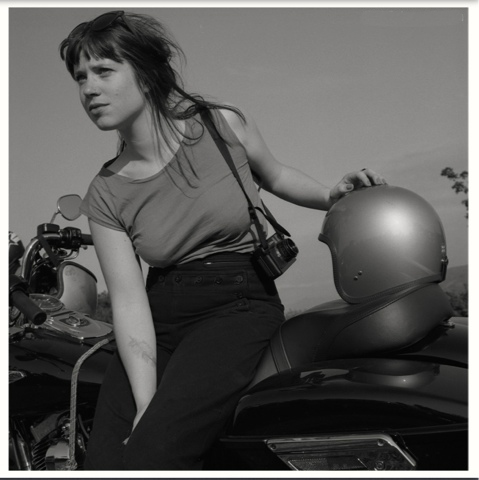
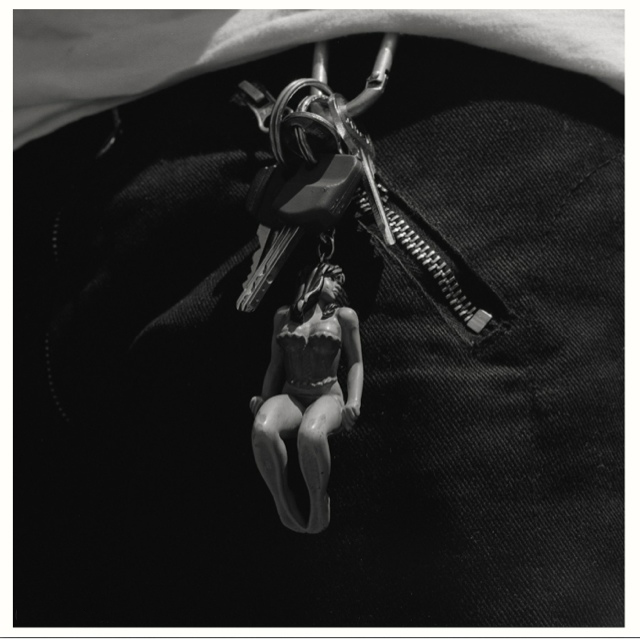
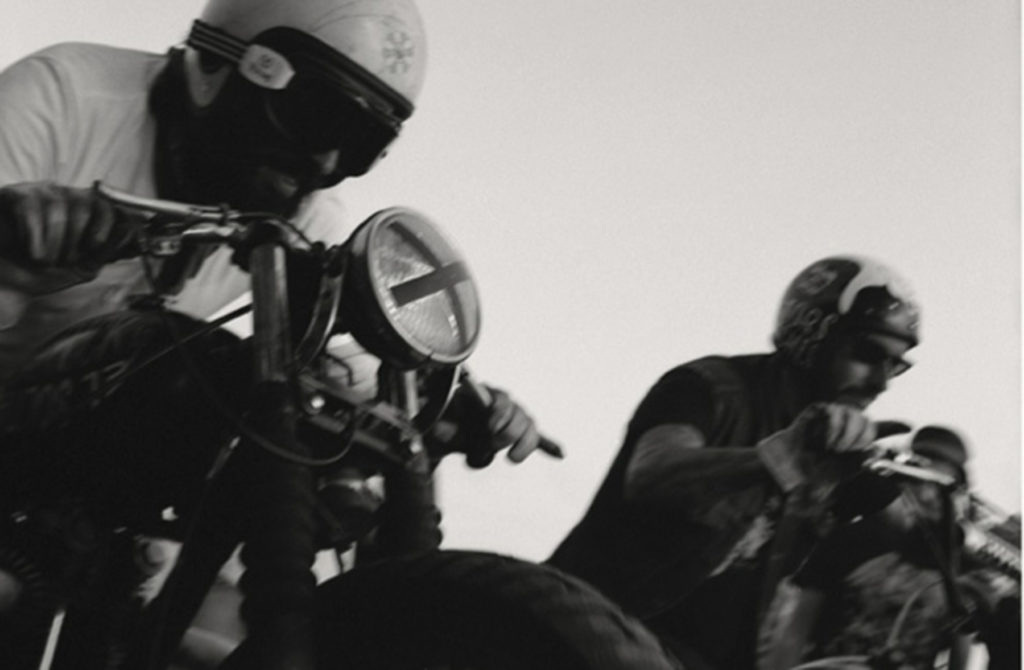
























Nuovo Nuovo Falcone Cafe
Just when you thought all Custom shows were tail-chasing exercises in better-bobberism, Don Cronin delivers a Moto Guzzi Nuovo Falcone updated for the 21st Century. Don's custom shop in Ireland - Medaza - focusses on Italian powerplants for his creations; Ducati, Moto Morini, Moto Guzzi.
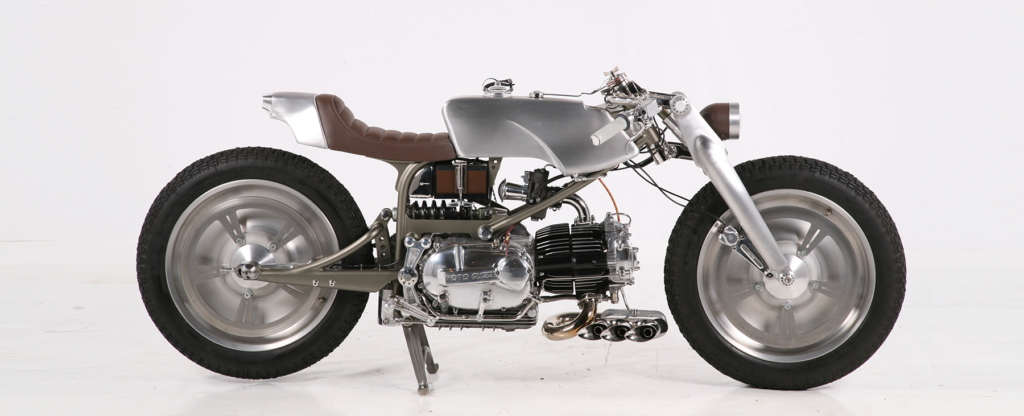
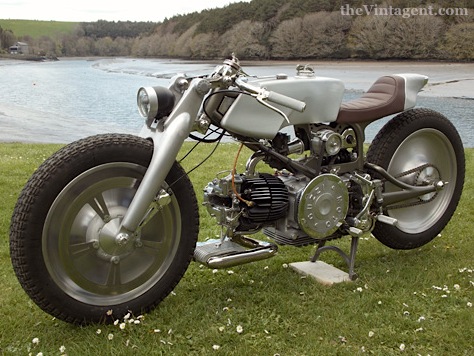
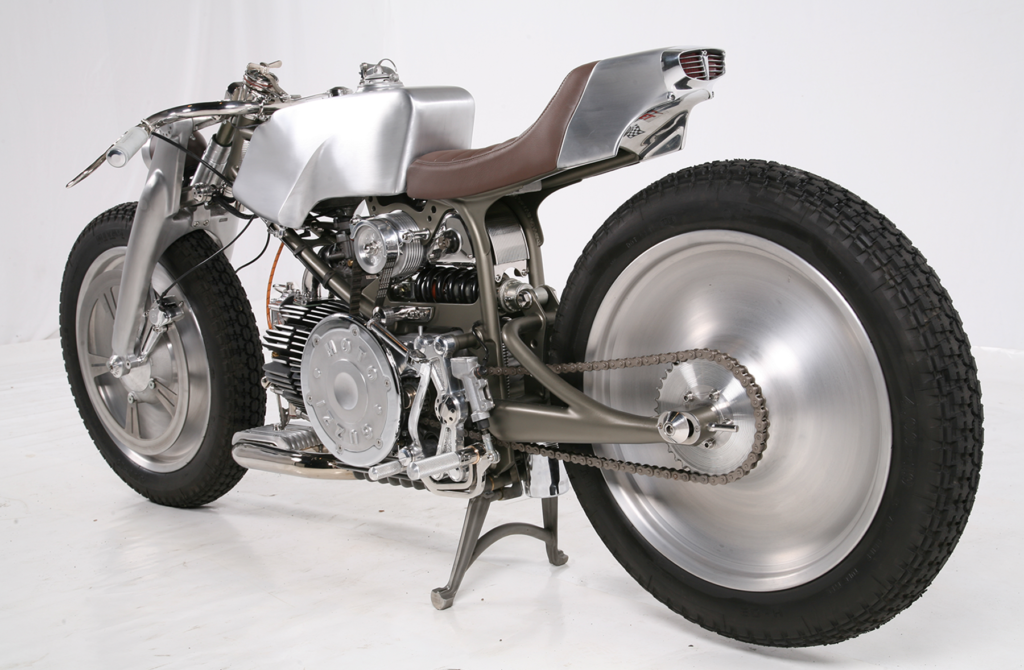
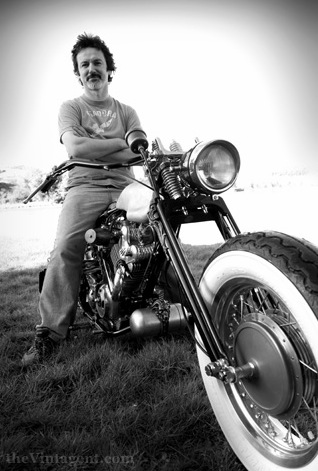
A Visit to Verralls
I don't often get the chance to stop in Verralls in Handcross, just south of London, but it's a venerable place with a great selection of older motorcycles, and a great pleasure to visit. Ian Hatton, who took over the business when Brian Verrall died a few years ago, has been a pal since 1987, when he was a lowly mechanic on Brian's machines (and about 19 years old, while I was a lofty 25). Ian liked my painted-up Velocette jacket, and I purchased an MZ 250 from his father, which I then rode to the Soviet border and back in a great loop around Western and Eastern Europe, a trip of many thousands of miles - all on back roads, with zero mechanical trouble. That's another story, but we've since remained friends, and I've long been a fan of the business. Ian has continued Brian's policy of looking after machines they've sold - if there's a problem, they'll deal with it, usually for free (unless you run the bike without oil). Enjoy this brief tour!
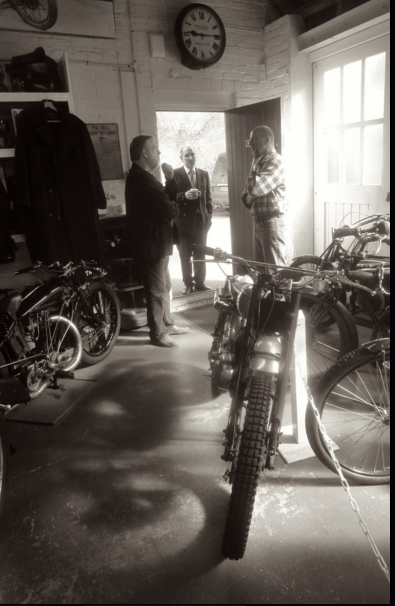
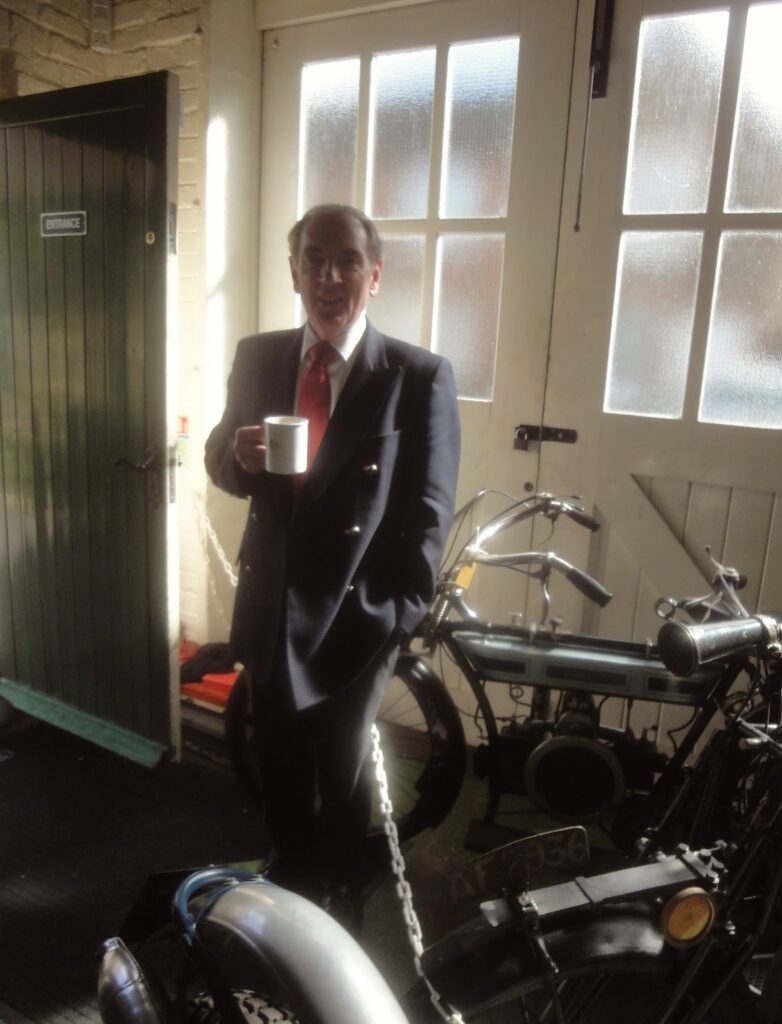
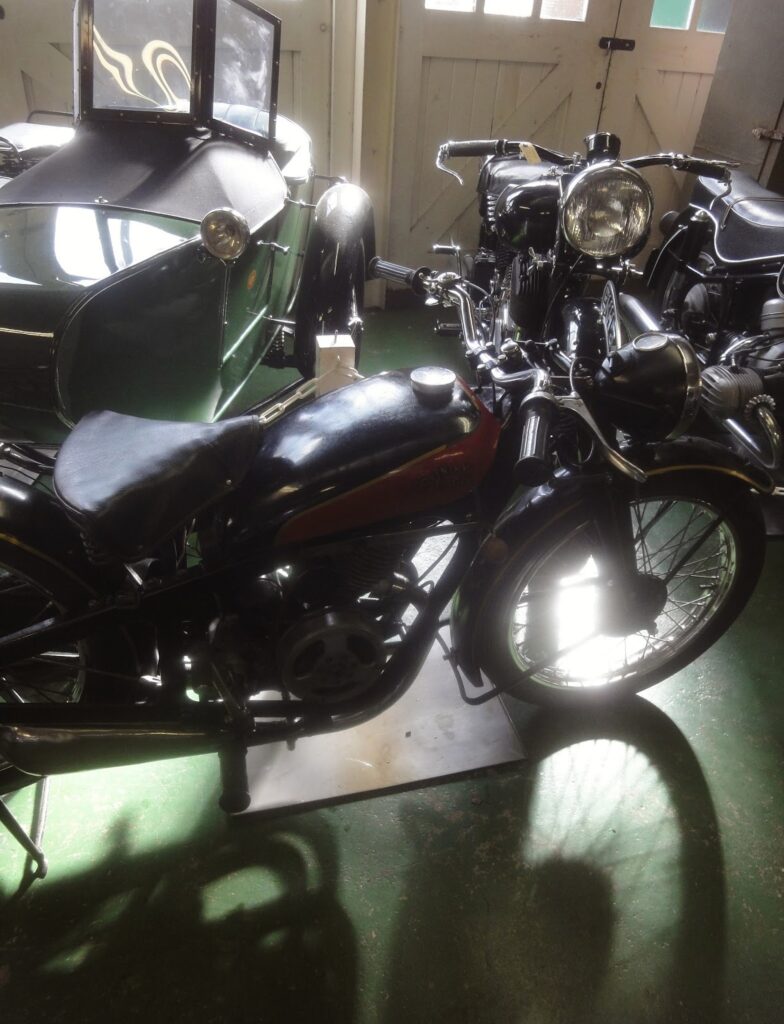
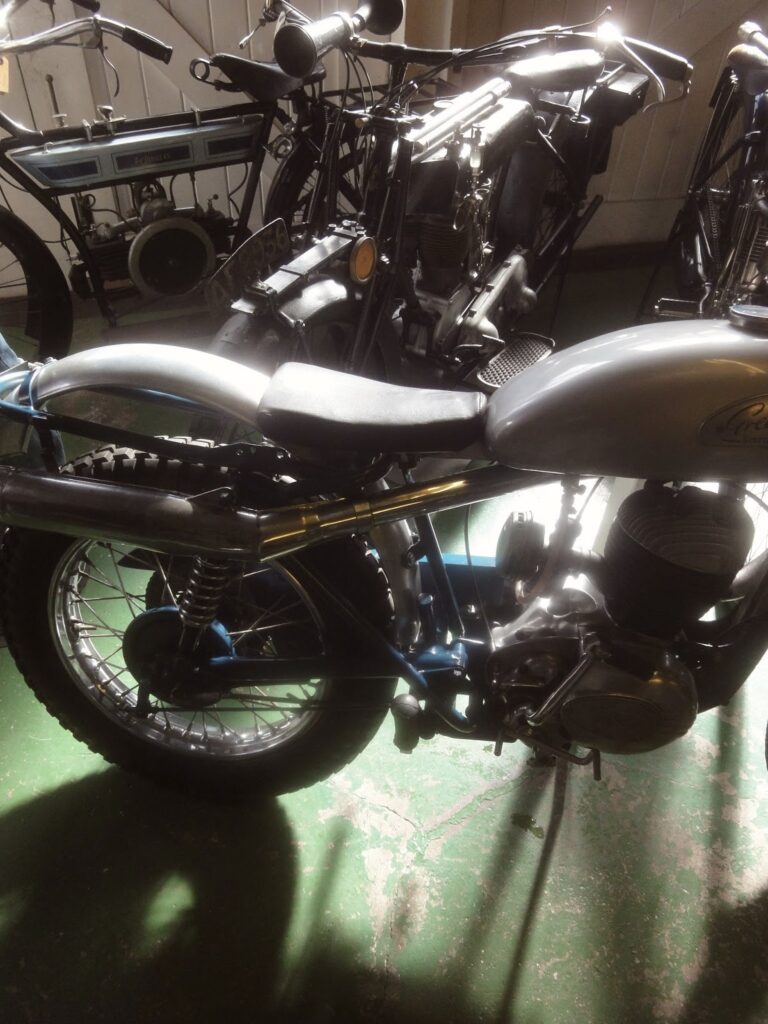
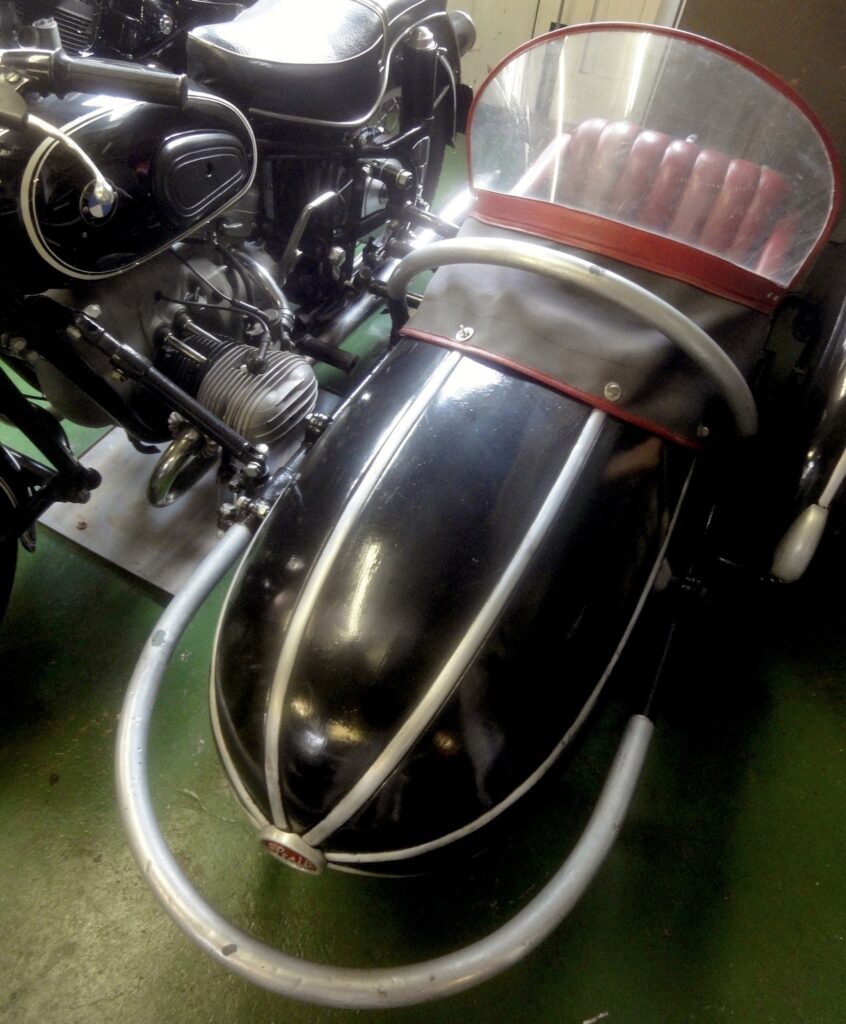


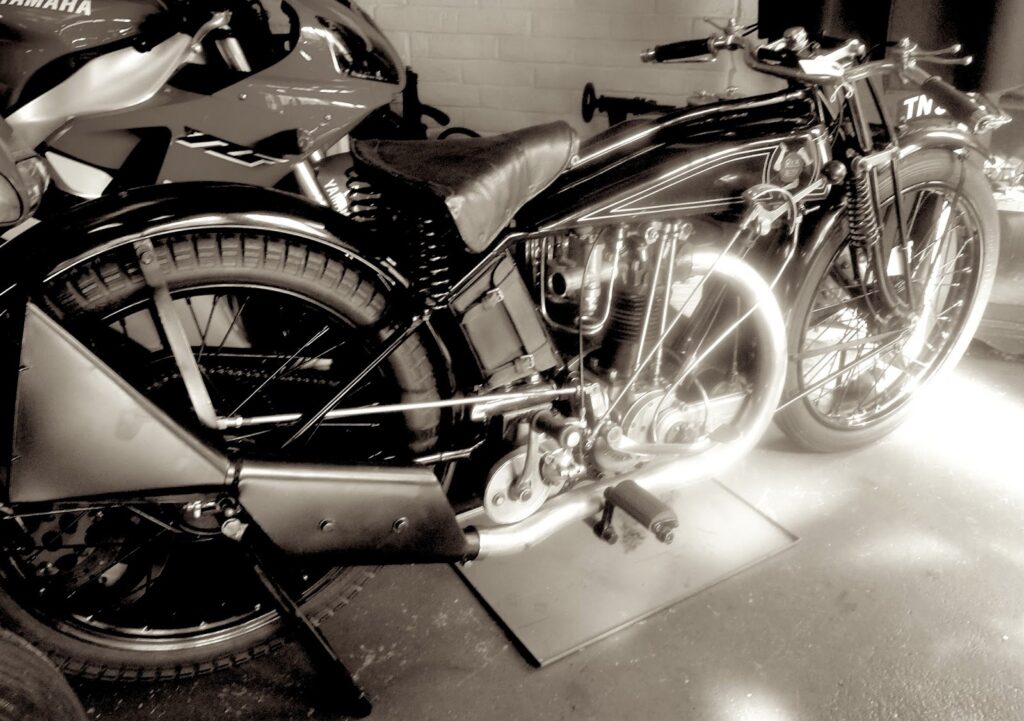

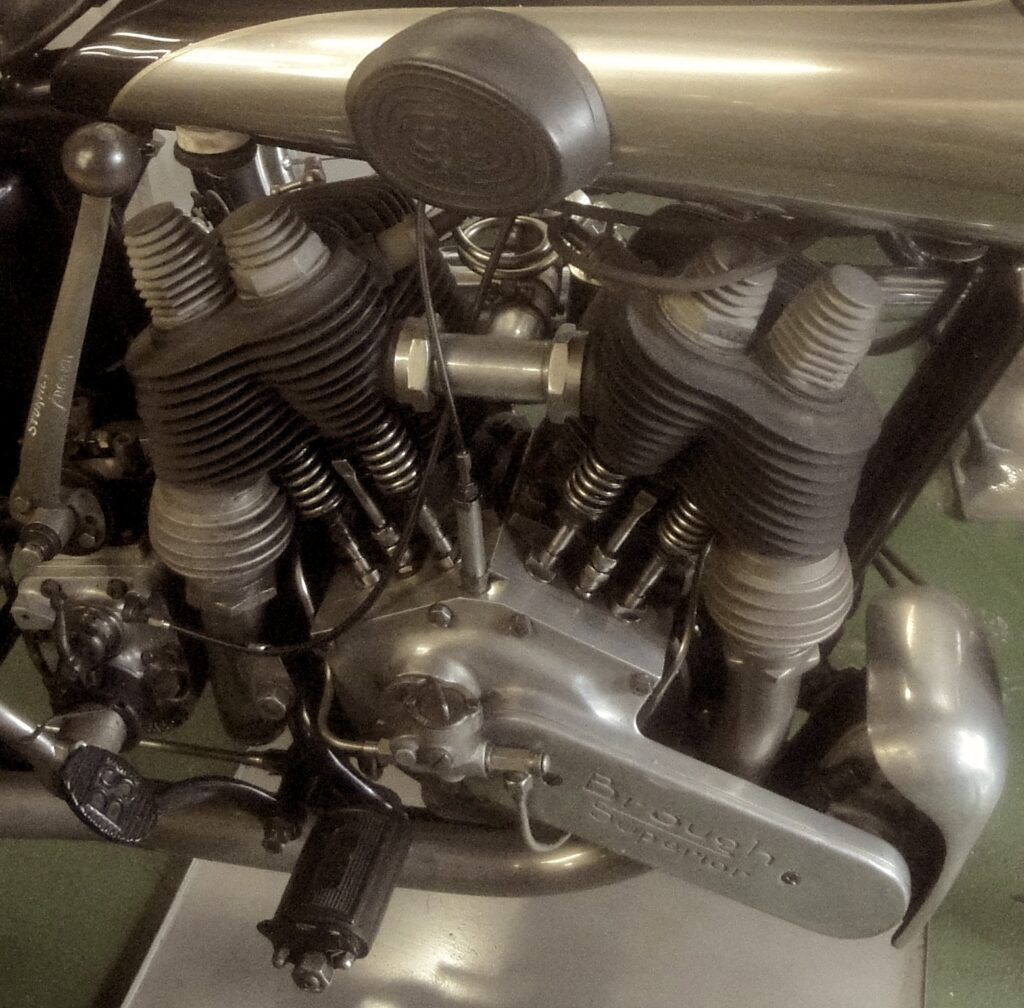
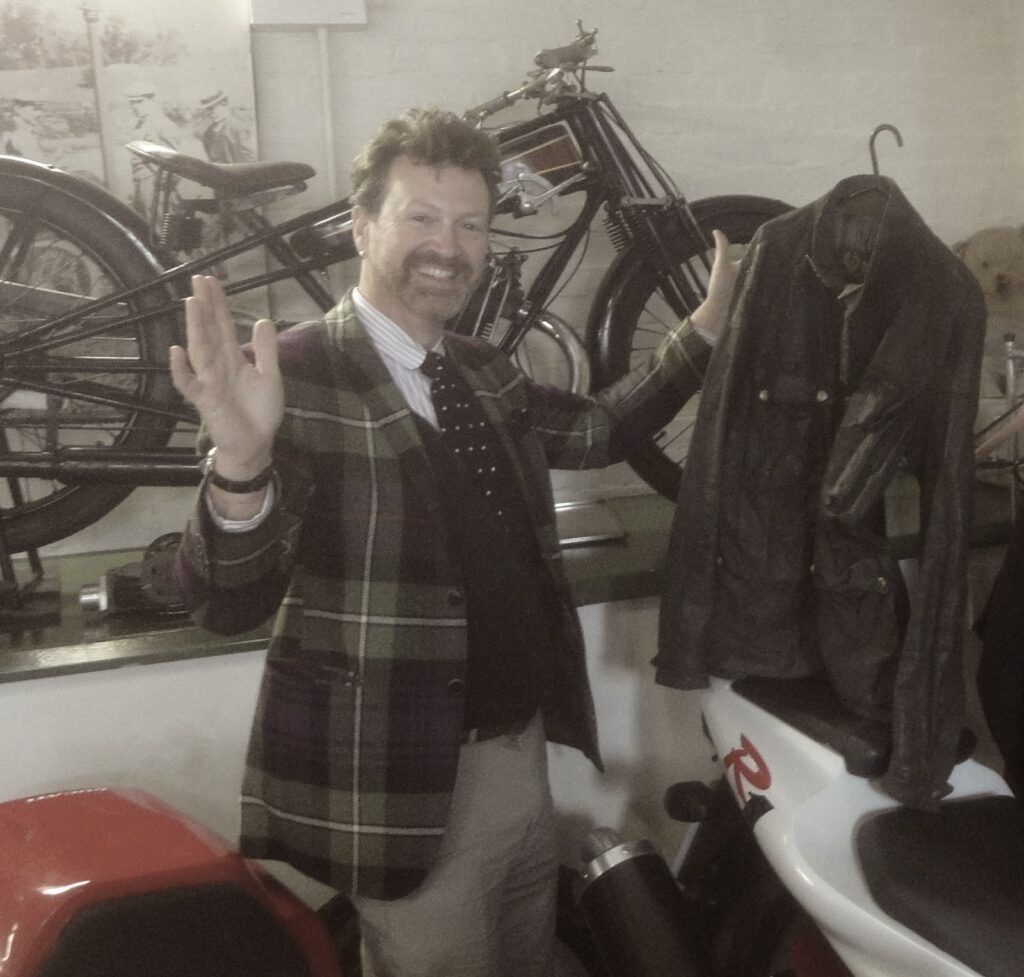
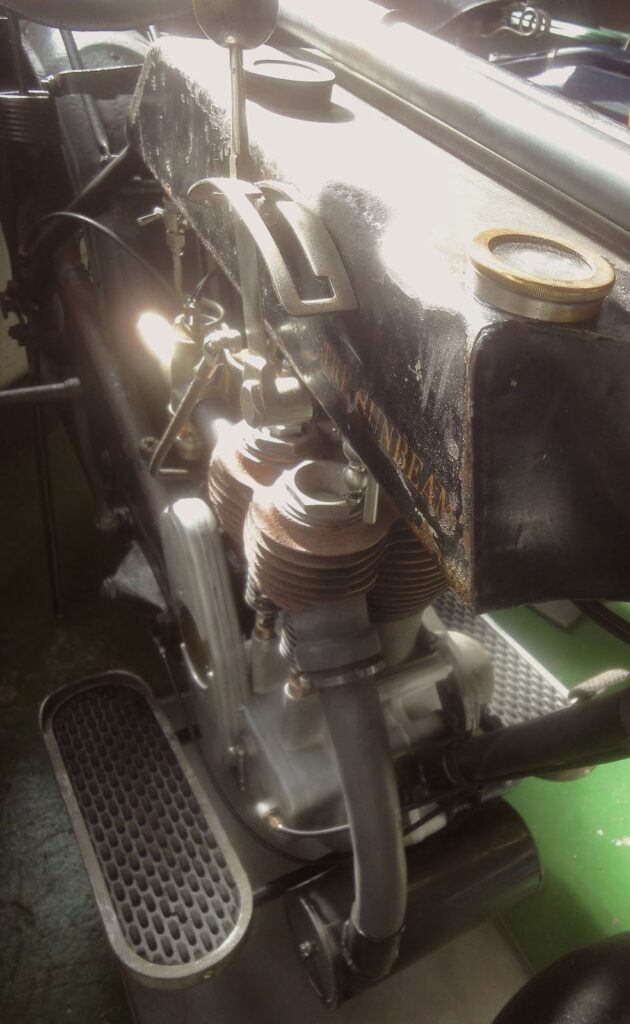
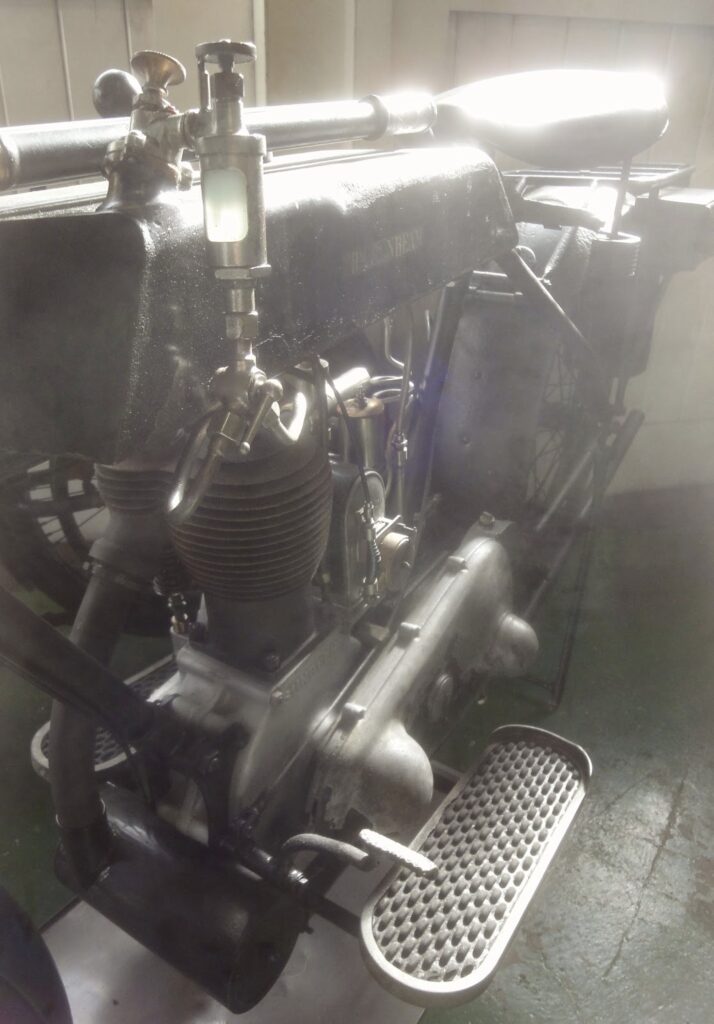
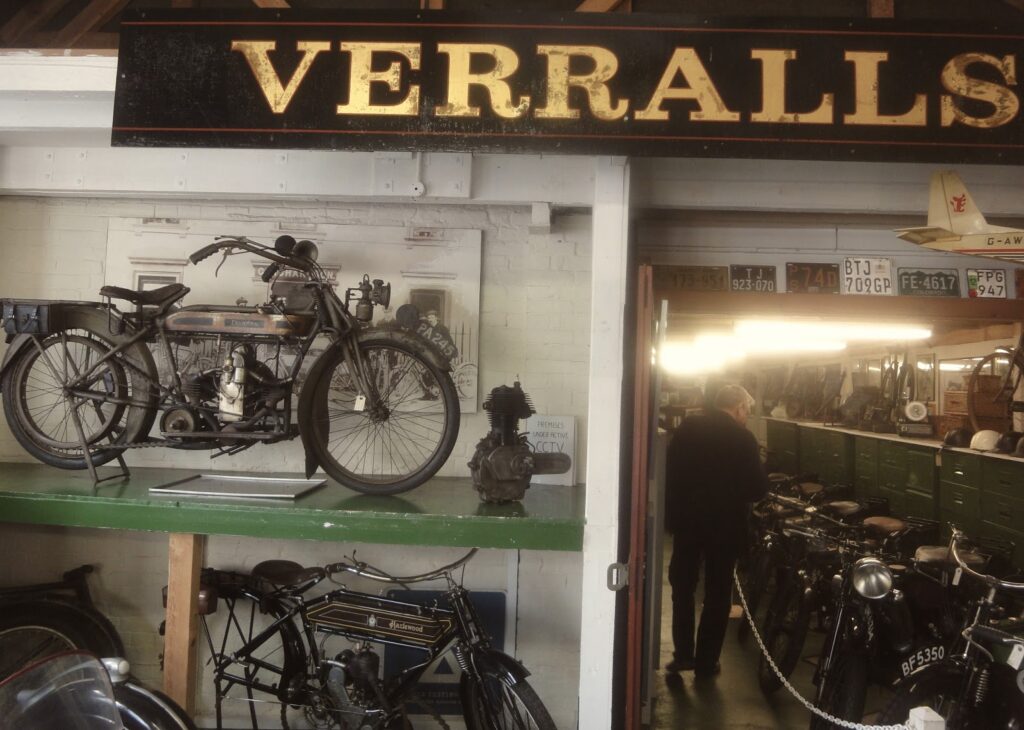

Prouvé, Ennui, and the Problem of Cash
I have a friend in Paris – Yves - with a lovely Jean Prouvé dining table he found cheap at the flea market (les Puces!) years ago, when Prouvé was iconic to connoisseurs, but not especially valuable. That changed; Prouvé is dead, his work is brilliant, and greed-panic is symptomatic of our 21st Century consciousness, so Yves’ dining table is worth well north of a Million, in whatever currency you care to calculate. Yet he still uses that table, every day.

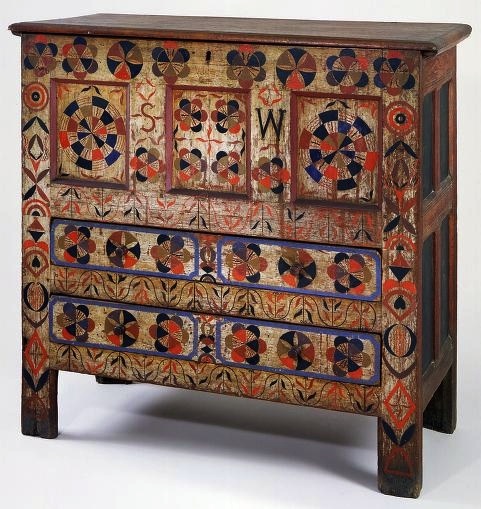
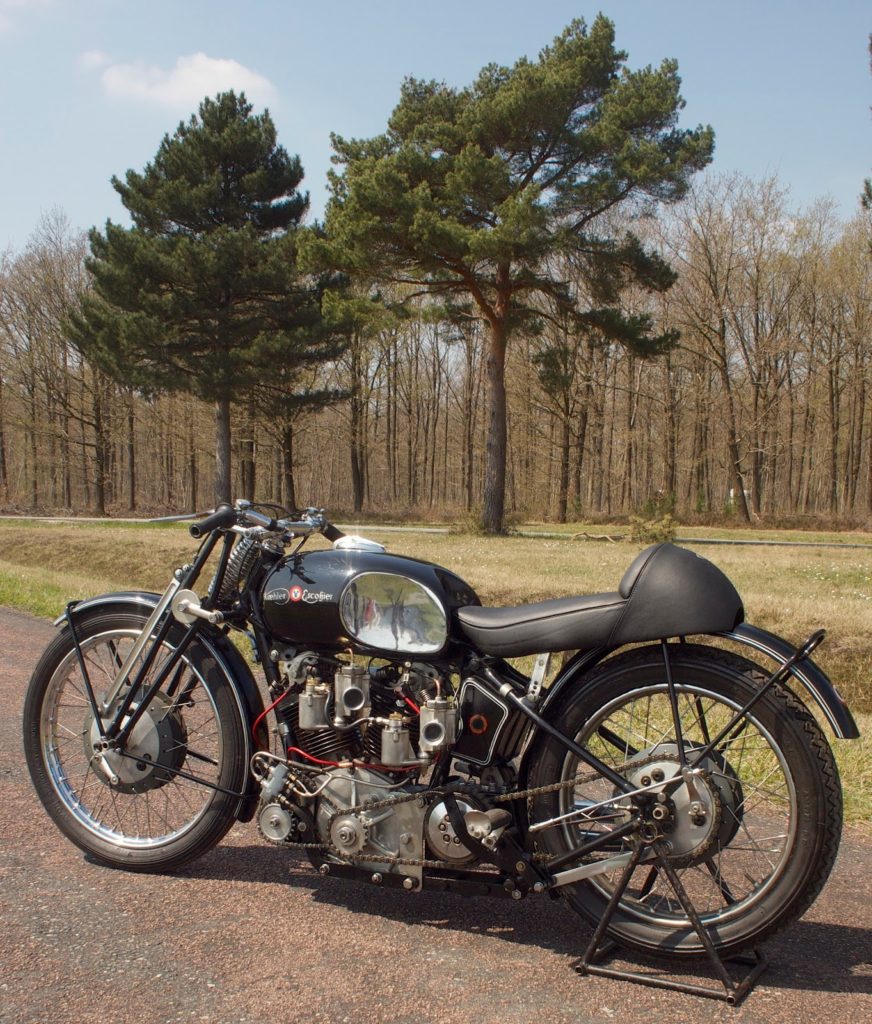
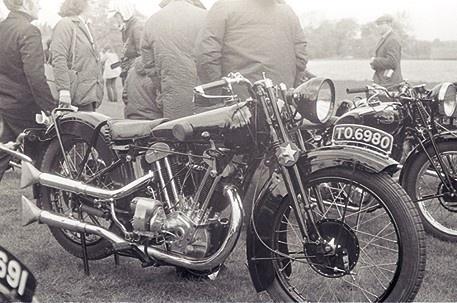
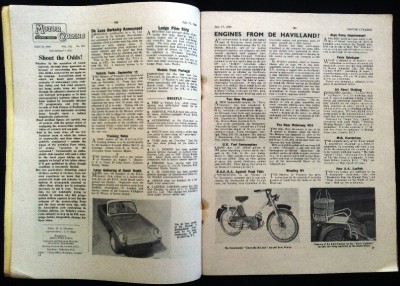
Looking at 1960s private adverts can be a painful experience! [Paul d'Orleans]



Biker Chic
It just keeps coming back, like Herpes, and now Biker Chic is stronger than ever! Every major fashion house has re-discovered the magnetic sexual pull of the black-clad motorcyclist, and cargo ships from China and Pakistan are foundering under the weight of thousands of cheap leather jackets headed to our shores.
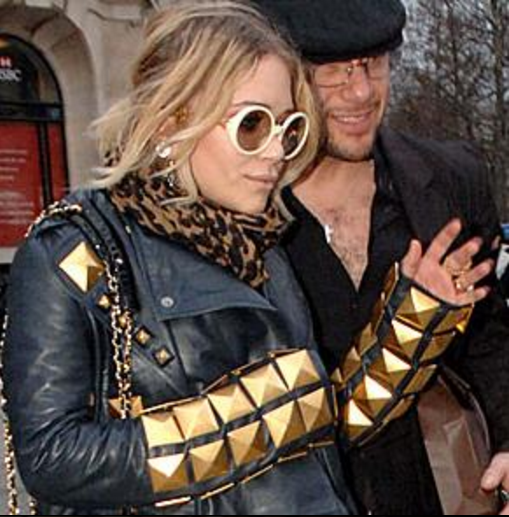
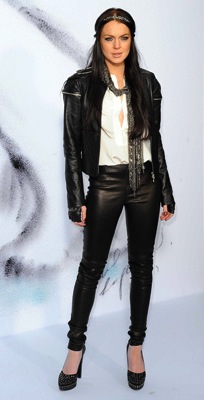
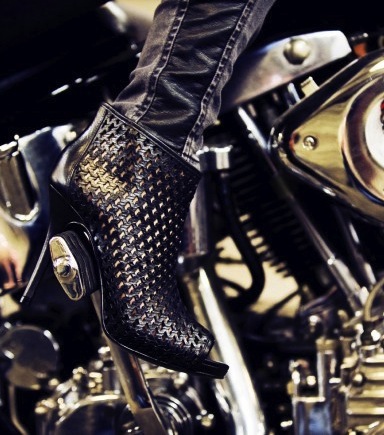
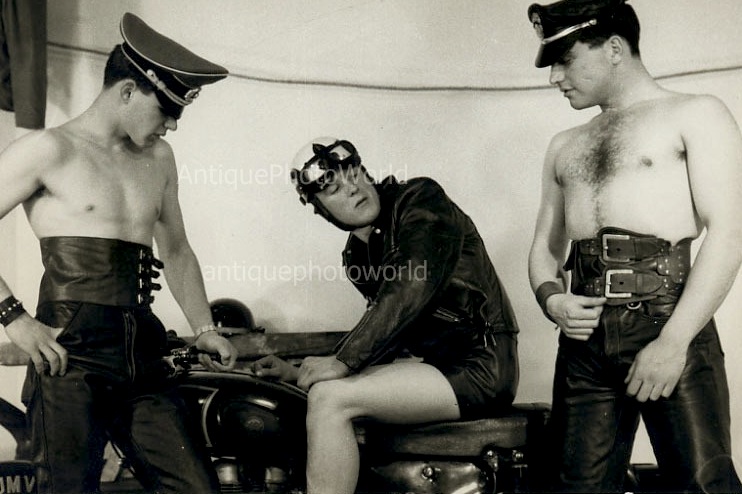
Denis Sire; 'Baron d'Holbach'
Galerie Jean-Marc Thévenet in Paris exhibited (thru Dec.5, 2012) the work of legendary motoring artist Denis Sire, champion of inserting fantastical pinup girls into historical situations. Sire was born in 1953 at Saint Nazaire on the Atlantic coast of France, and studied art in Paris at ‘L’Ecole des Arts Appliqués. His work is most familiar to 1980s readers of Playboy and Heavy Metal magazines, and I've had a copy of his Velocette Thruxton sketch on the wall of my office for decades, admiring his outrageous mix of scantily clad femininity with hot rods, record breakers, fighter planes, and motorcycles. Meeting Sire in person last February at Rétromobile in Paris, I discovered he also possesses a unique sense of style, befitting his outré artistic ouevre.
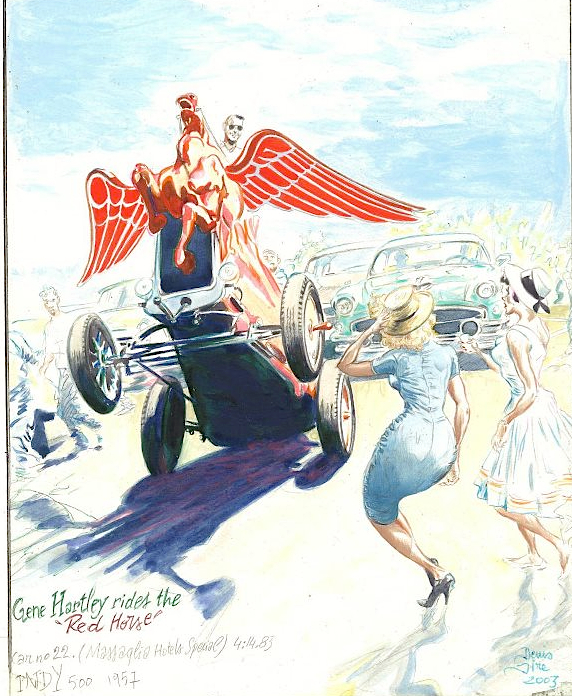
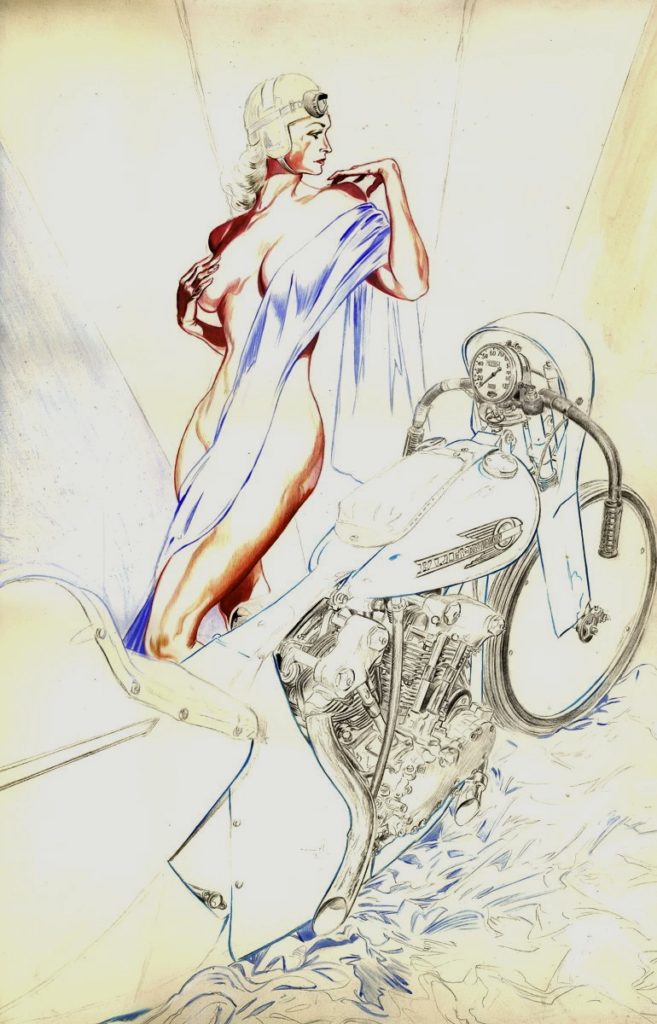
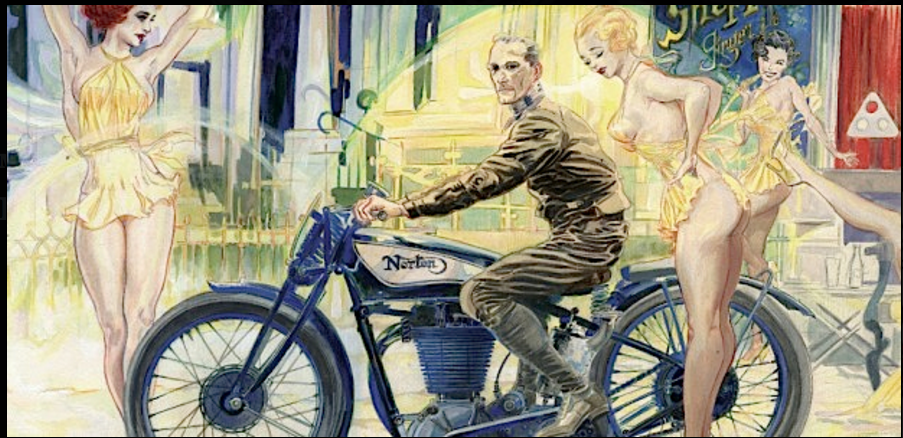
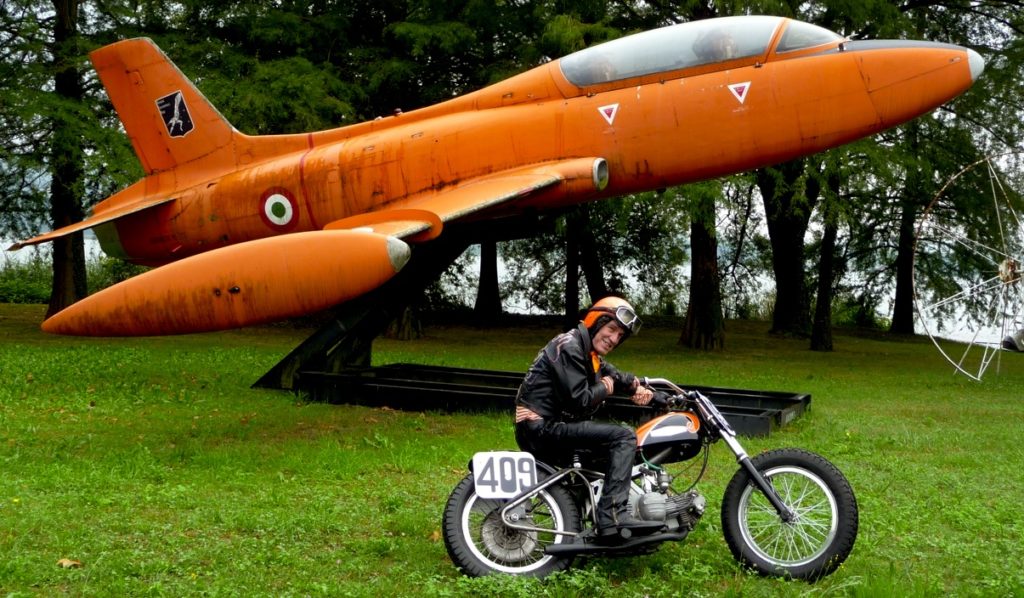
All artwork images courtesy and copyright Galerie Jean Marc Thévenet

3 Days in Paris: Retromobile 2012
Retromobile's star has faded in the past two years for motorcyclists and vintage car enthusiasts, as the show's management has effectively nixed two-wheel participation in favor of more space for new car manufacturers. The increases in per-square-metre cost (previously, a lower rate applied to bike booths) have begun to squeeze out the smaller autojumble traders who previously made up a healthy proportion of the floor space at the Parc des Expositions, while the show was shortened to 5 days from the previous luxury of 10.
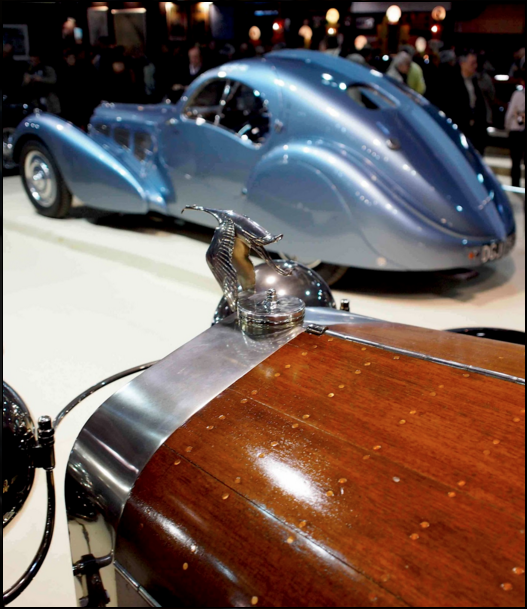
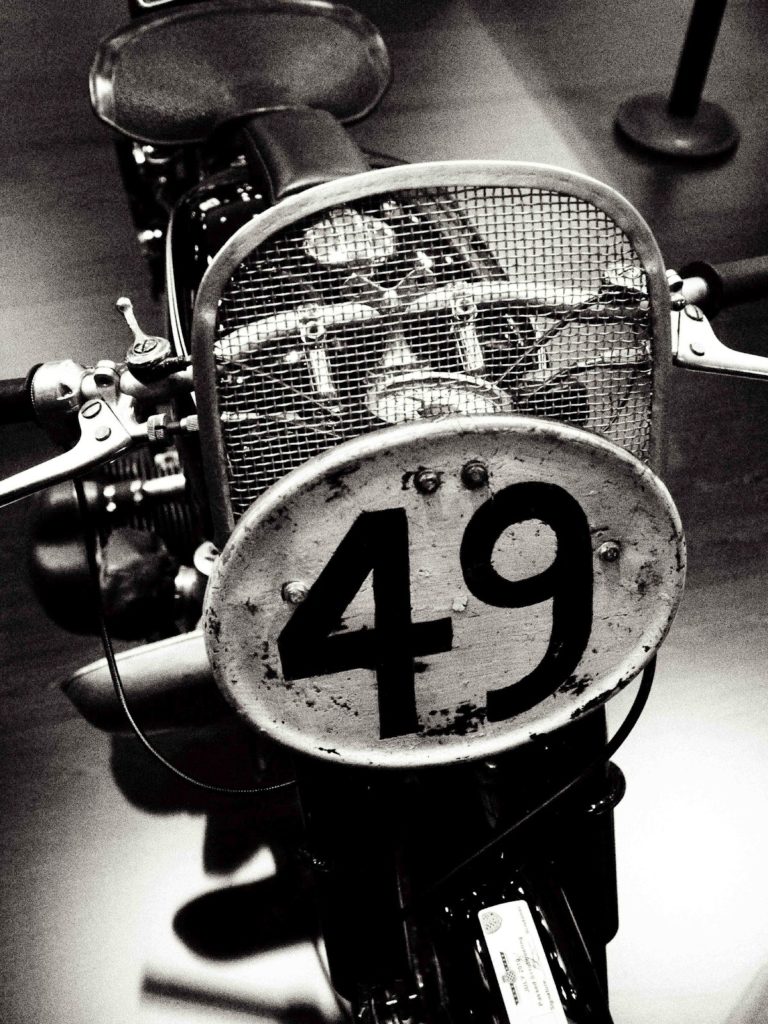
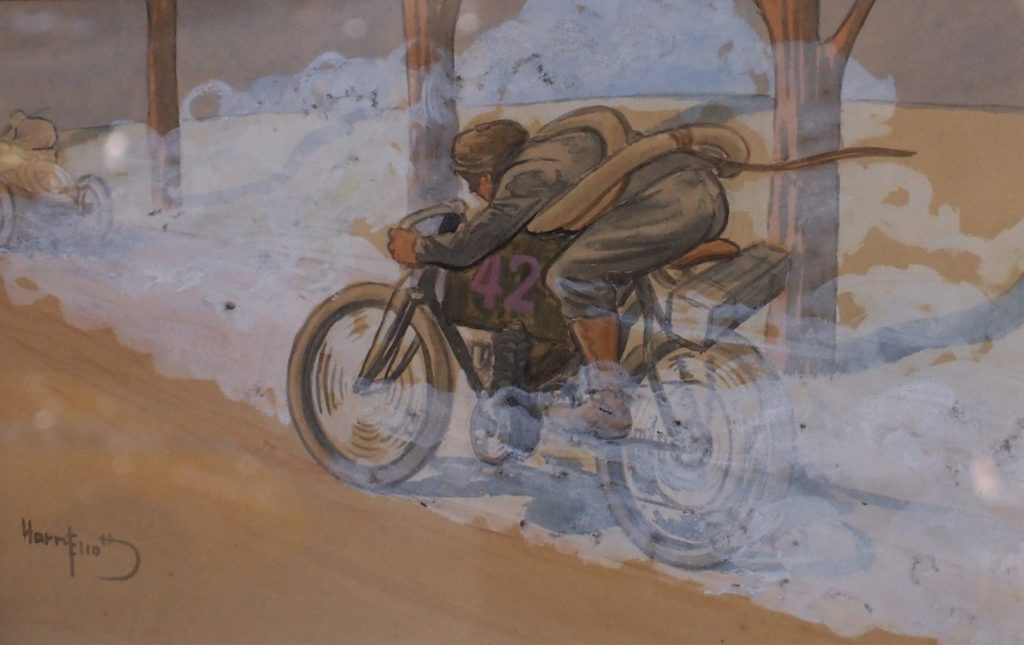
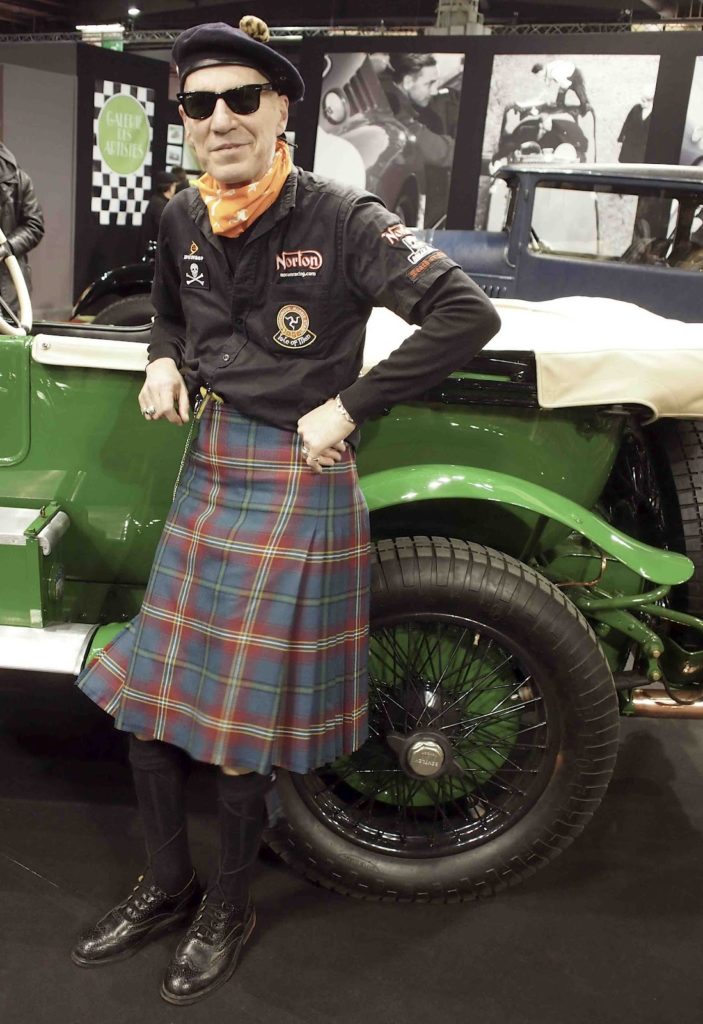
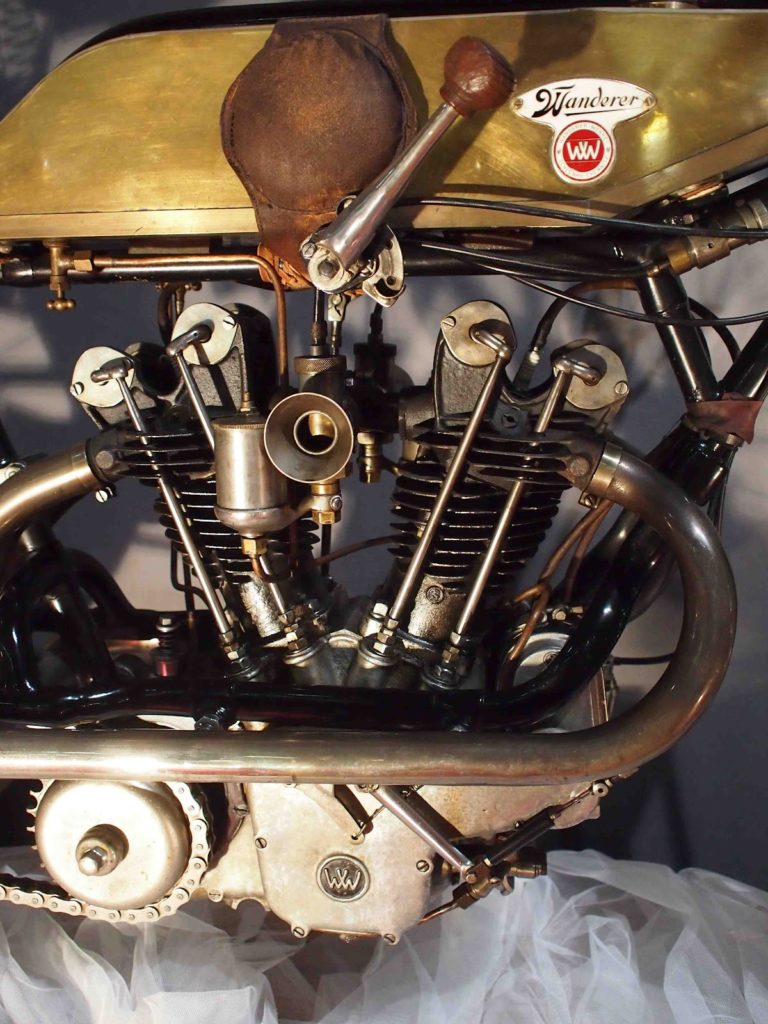

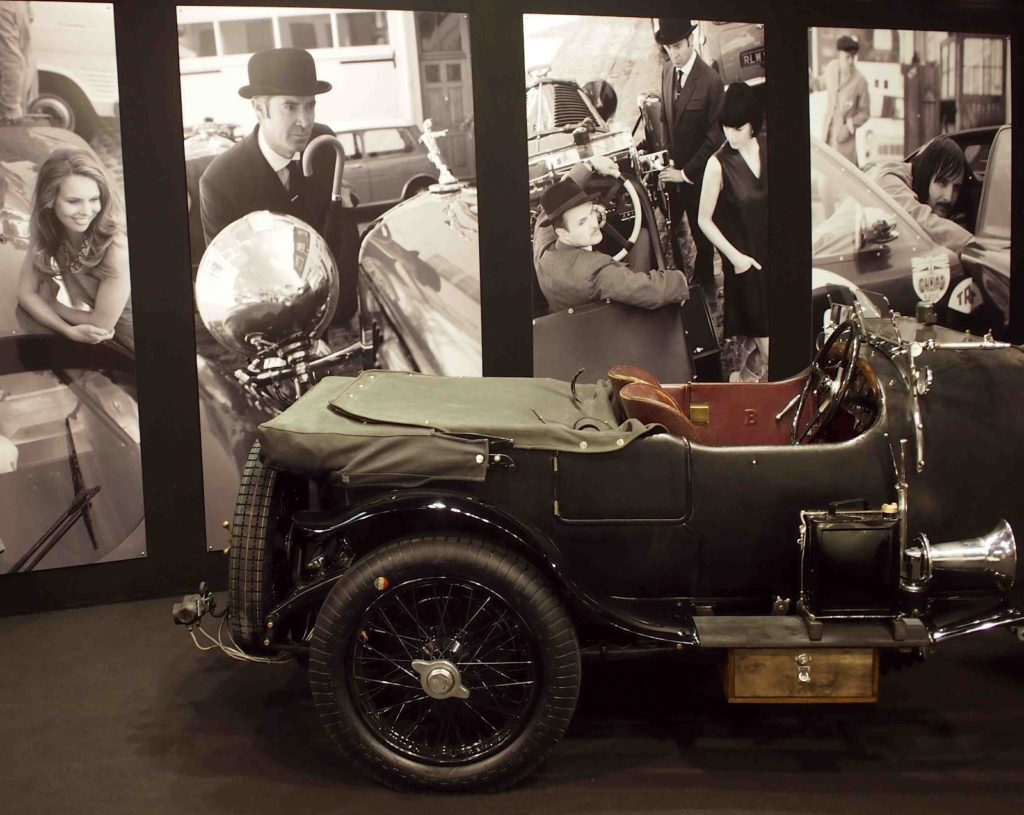
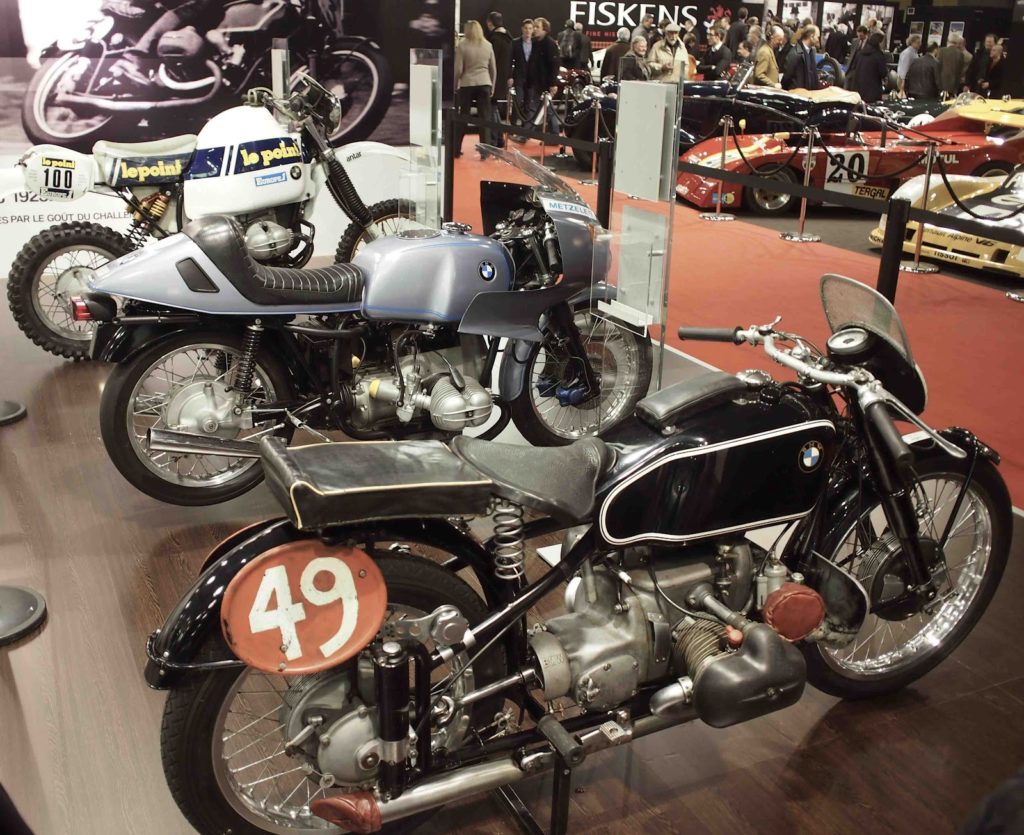
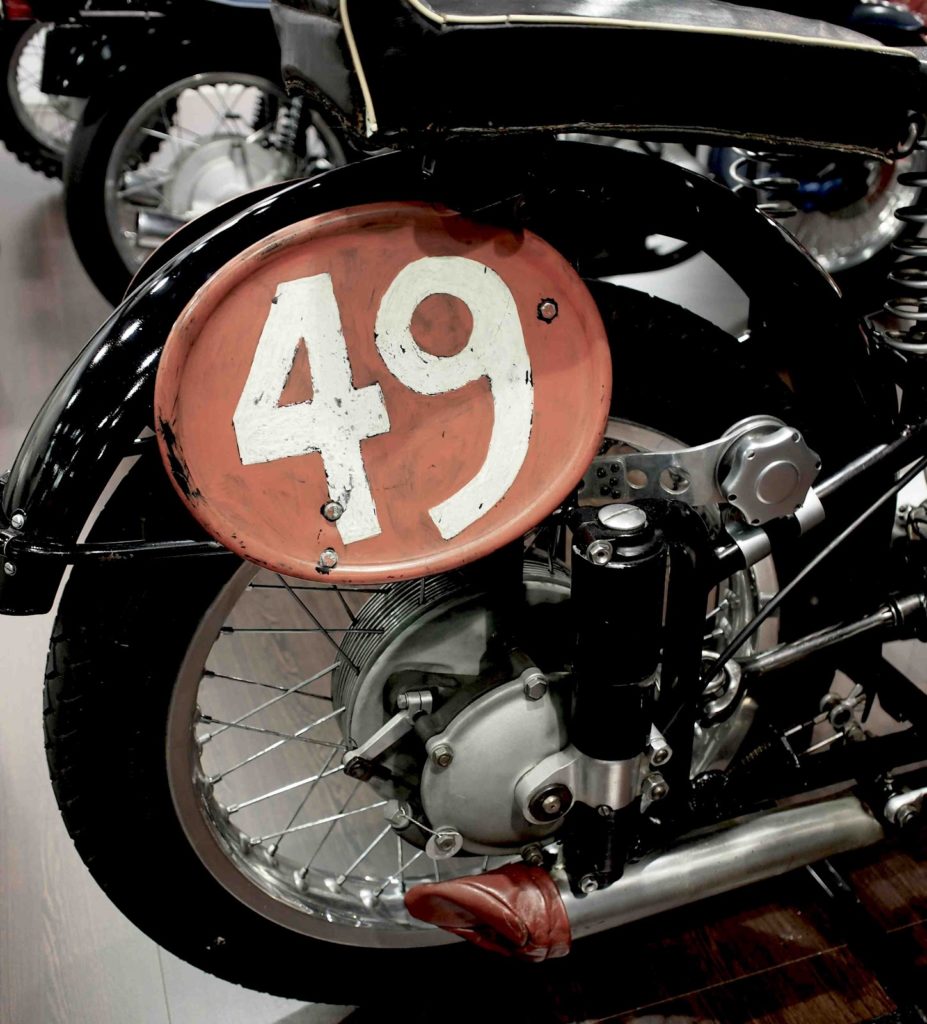
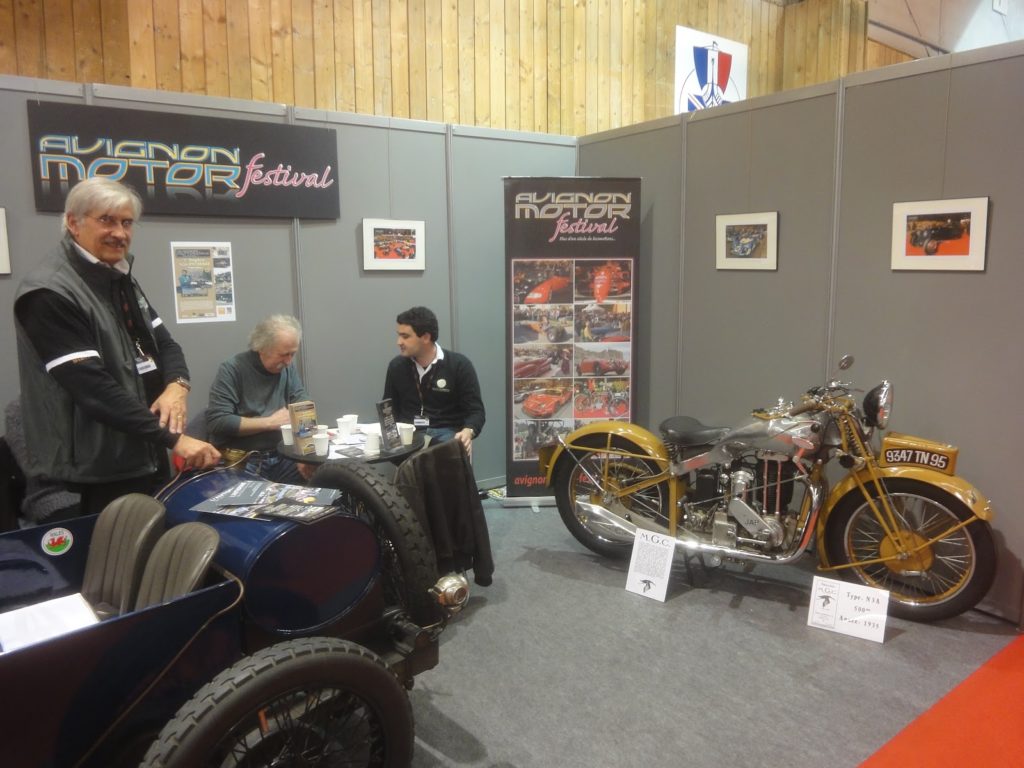
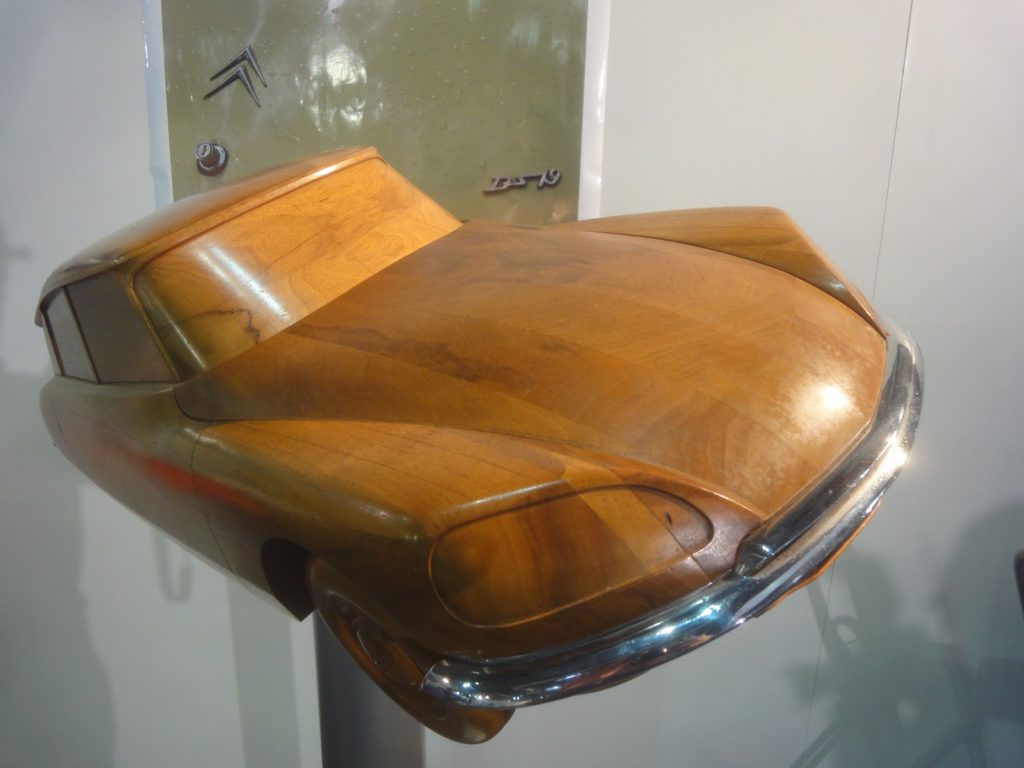
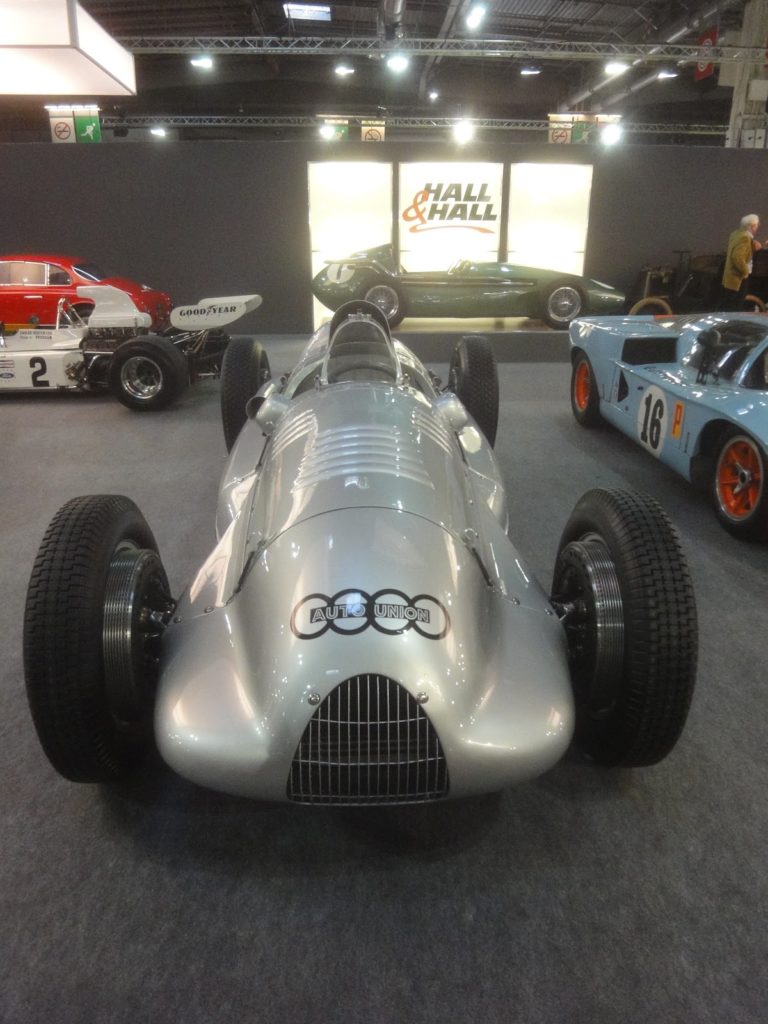
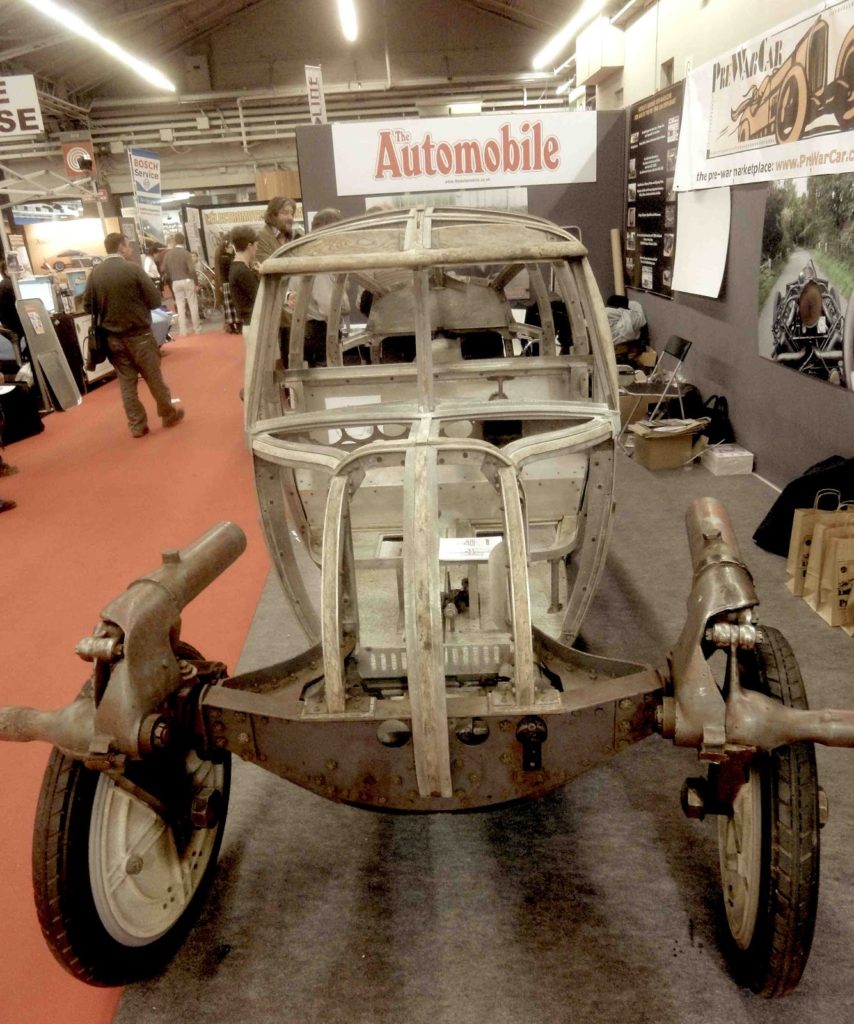

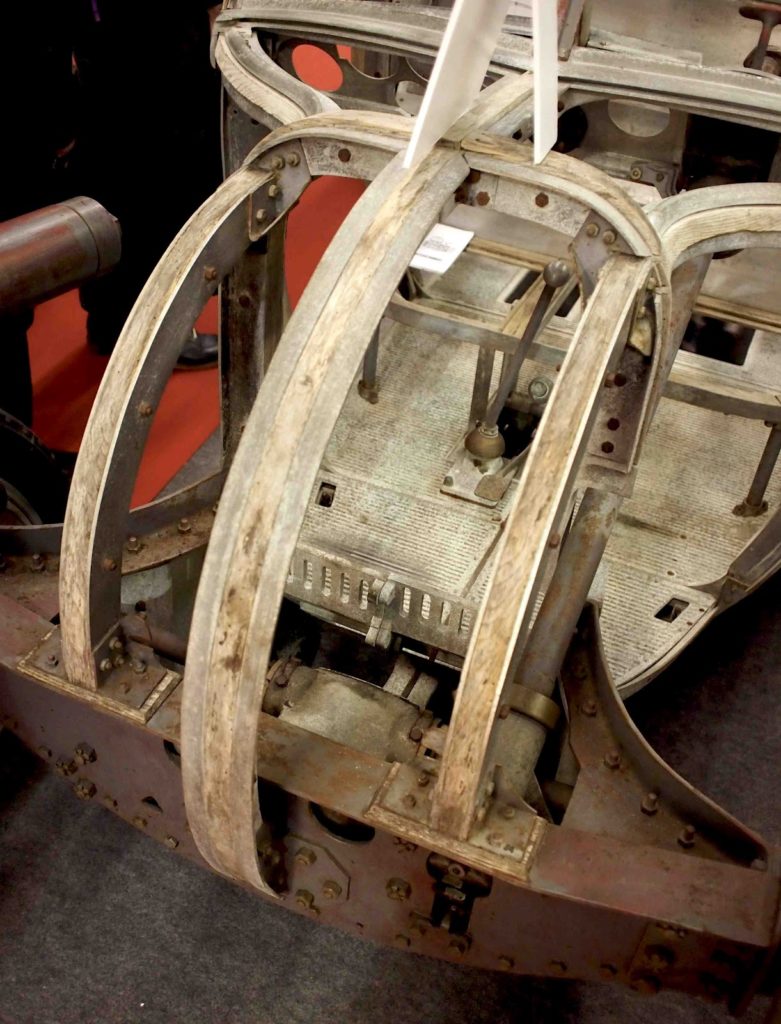
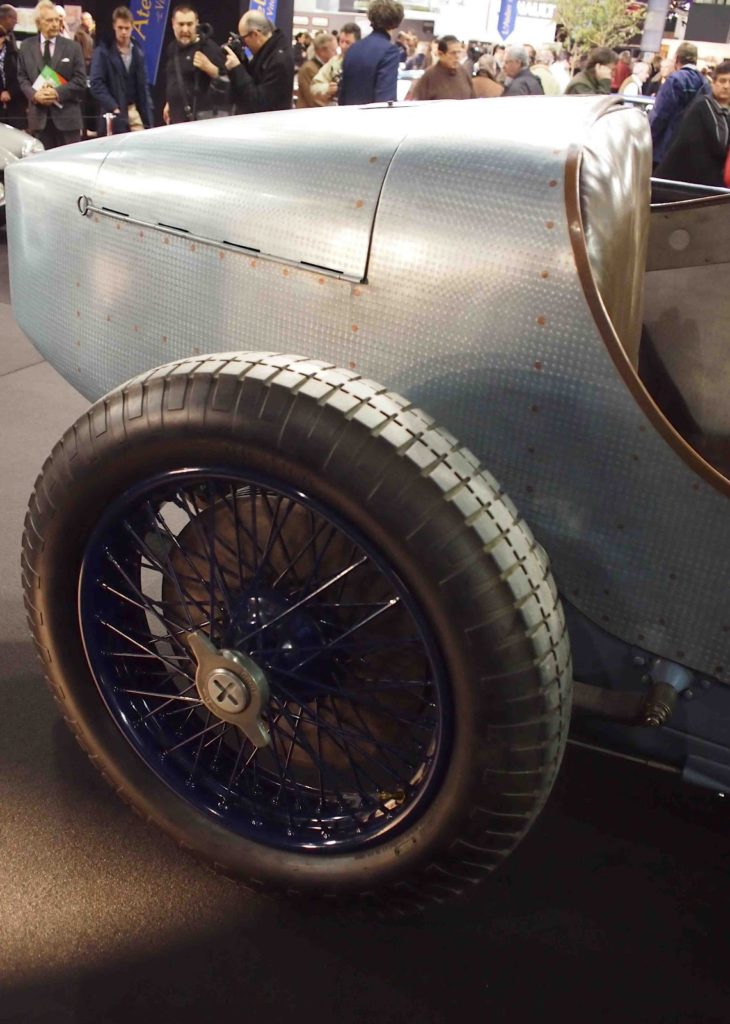

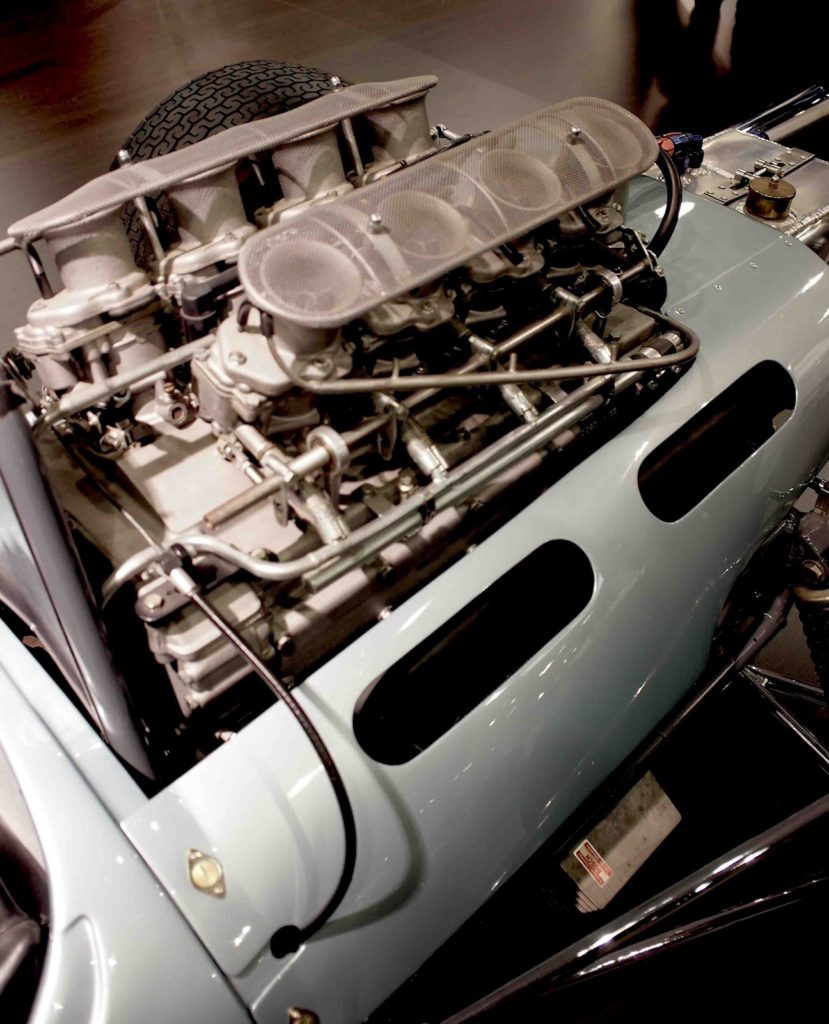
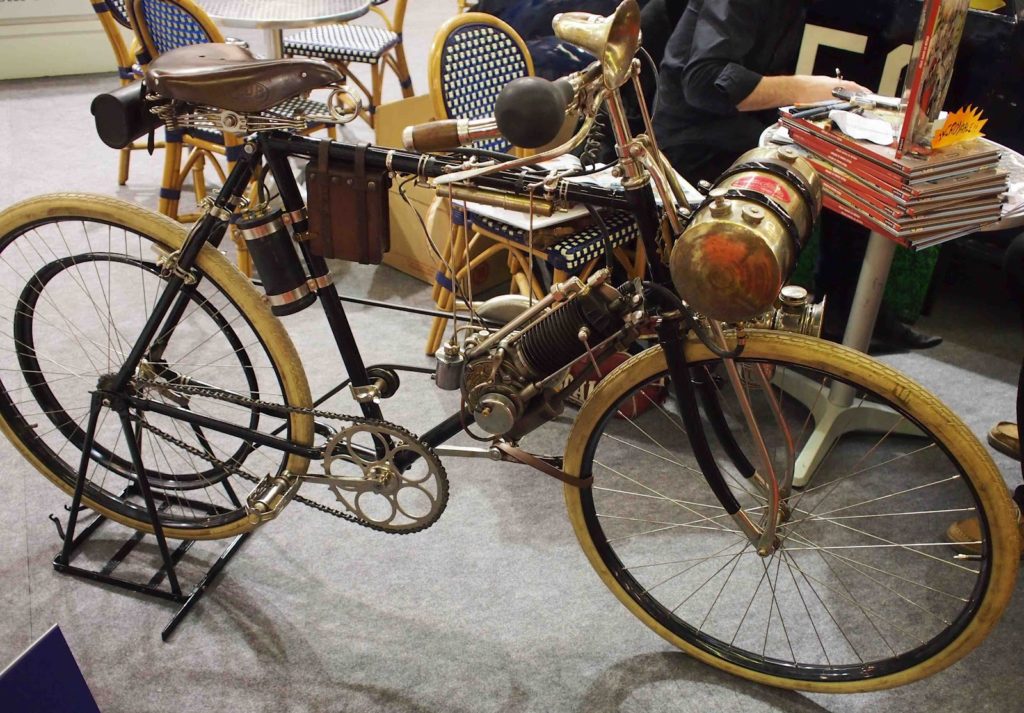
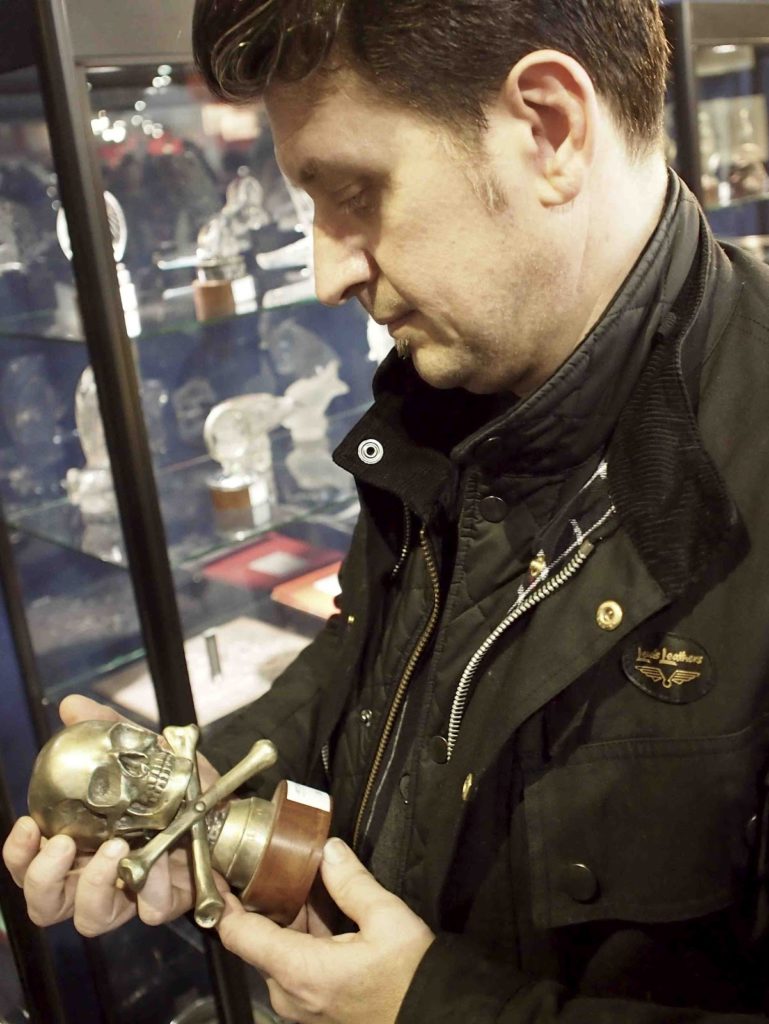
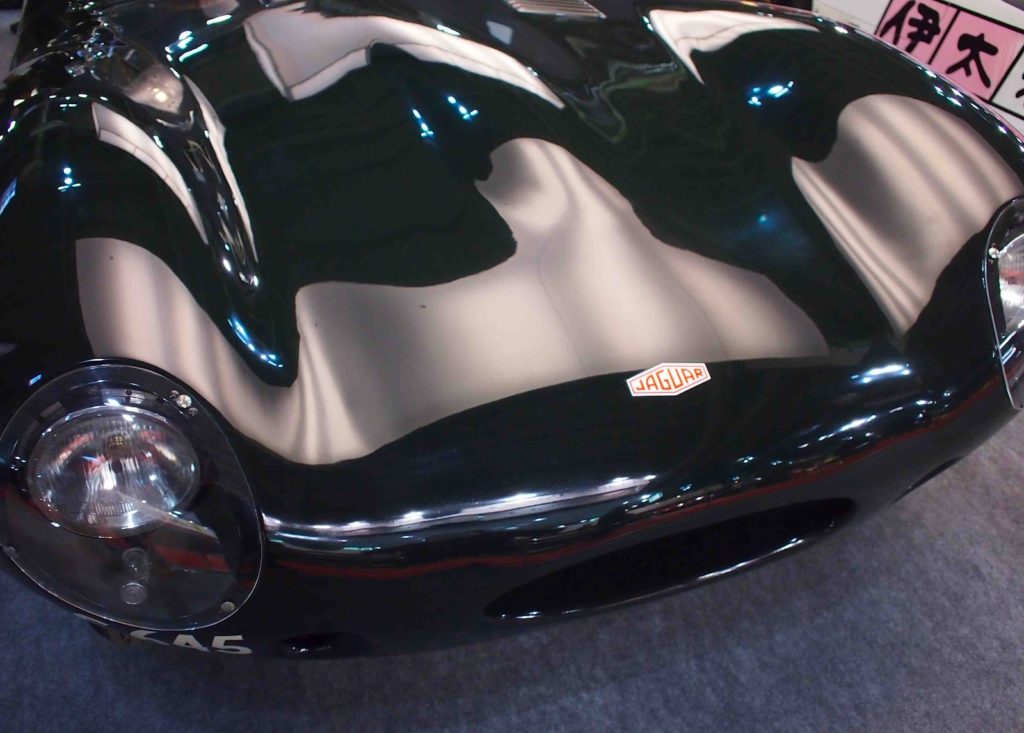
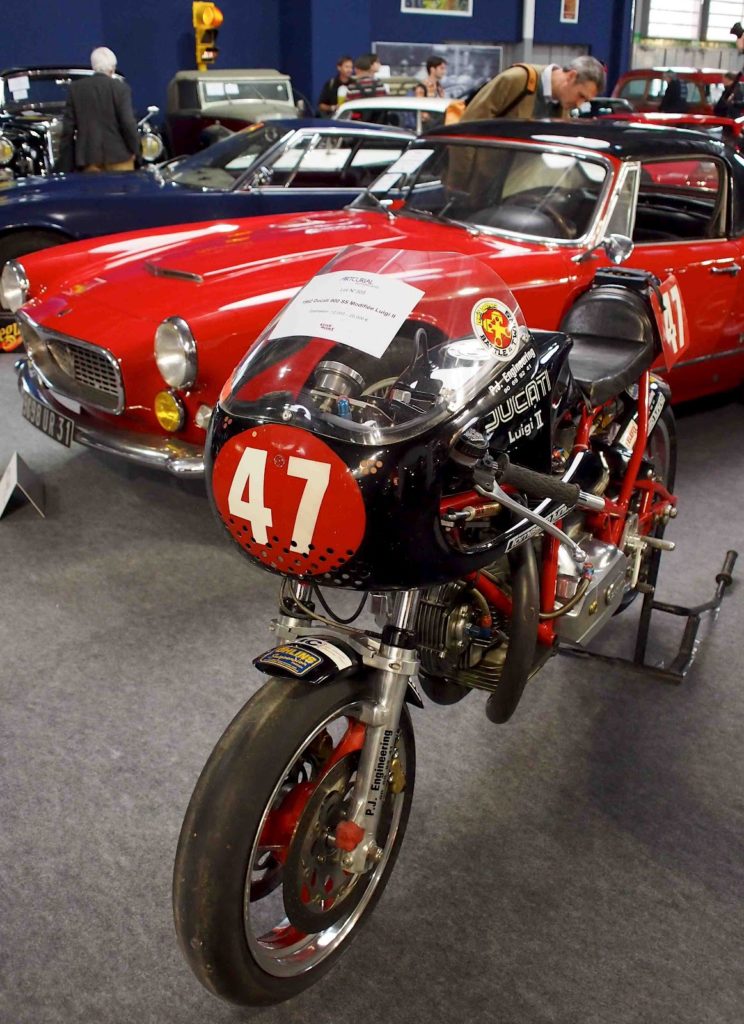
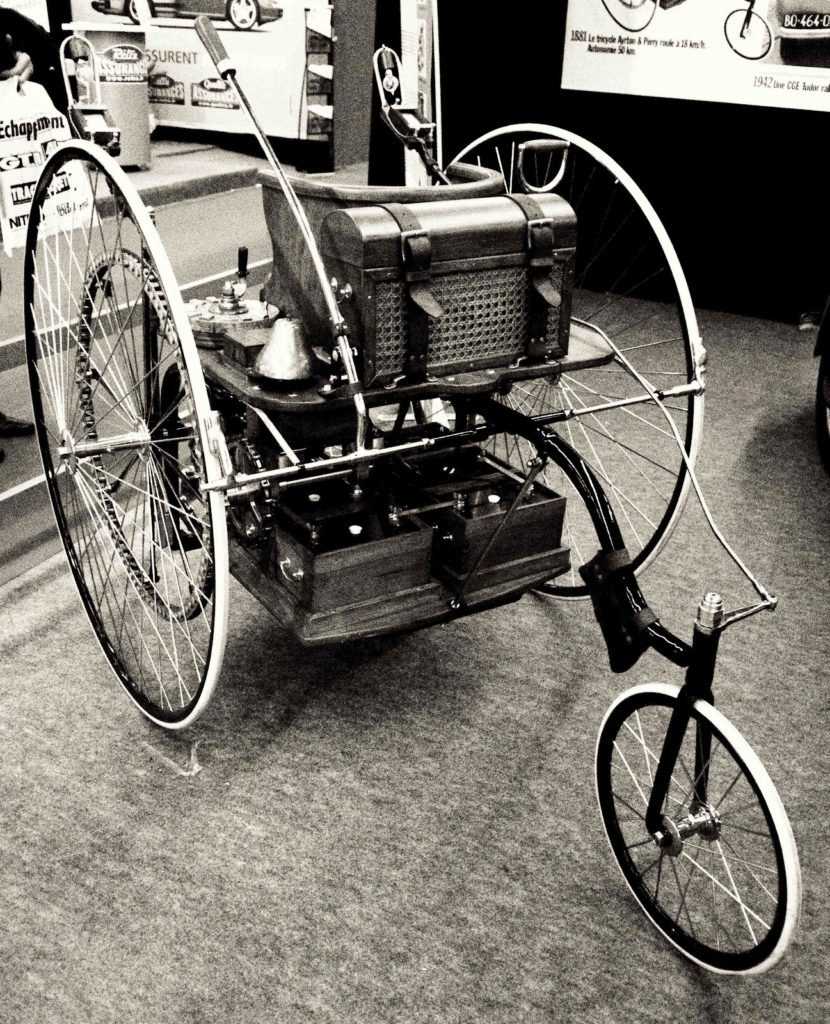

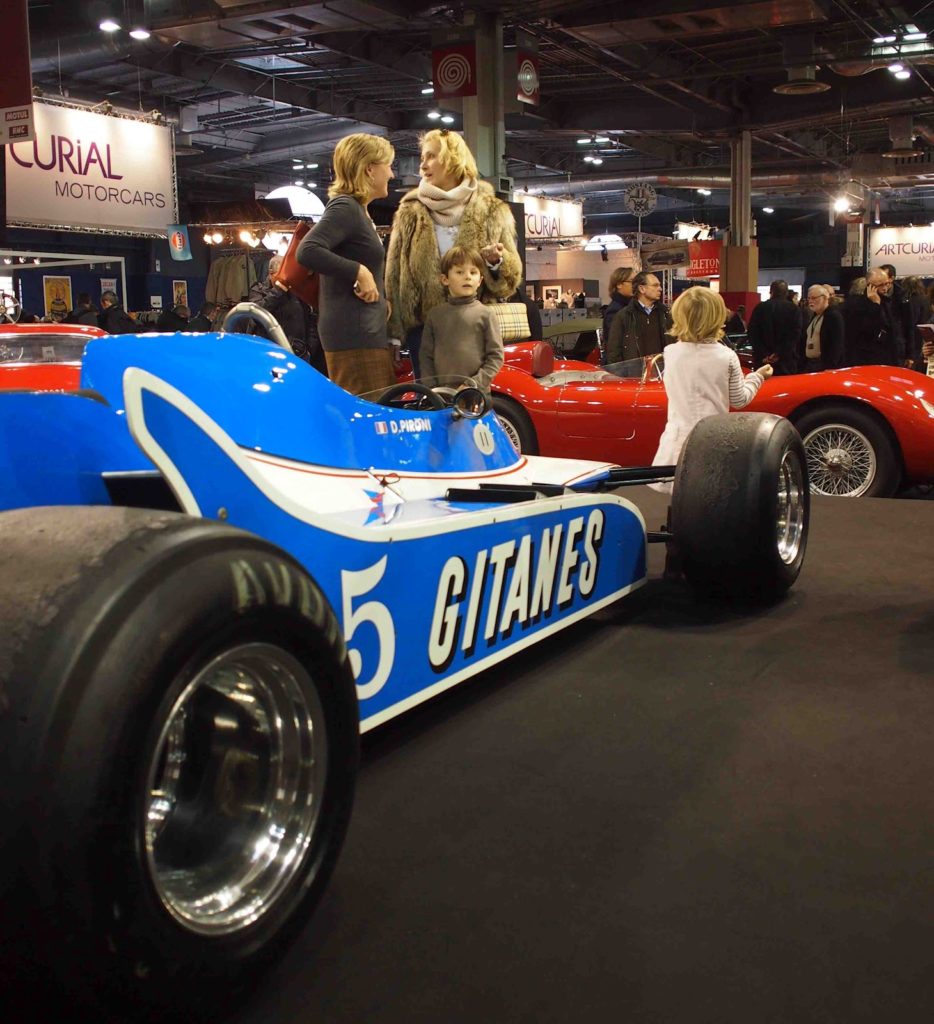
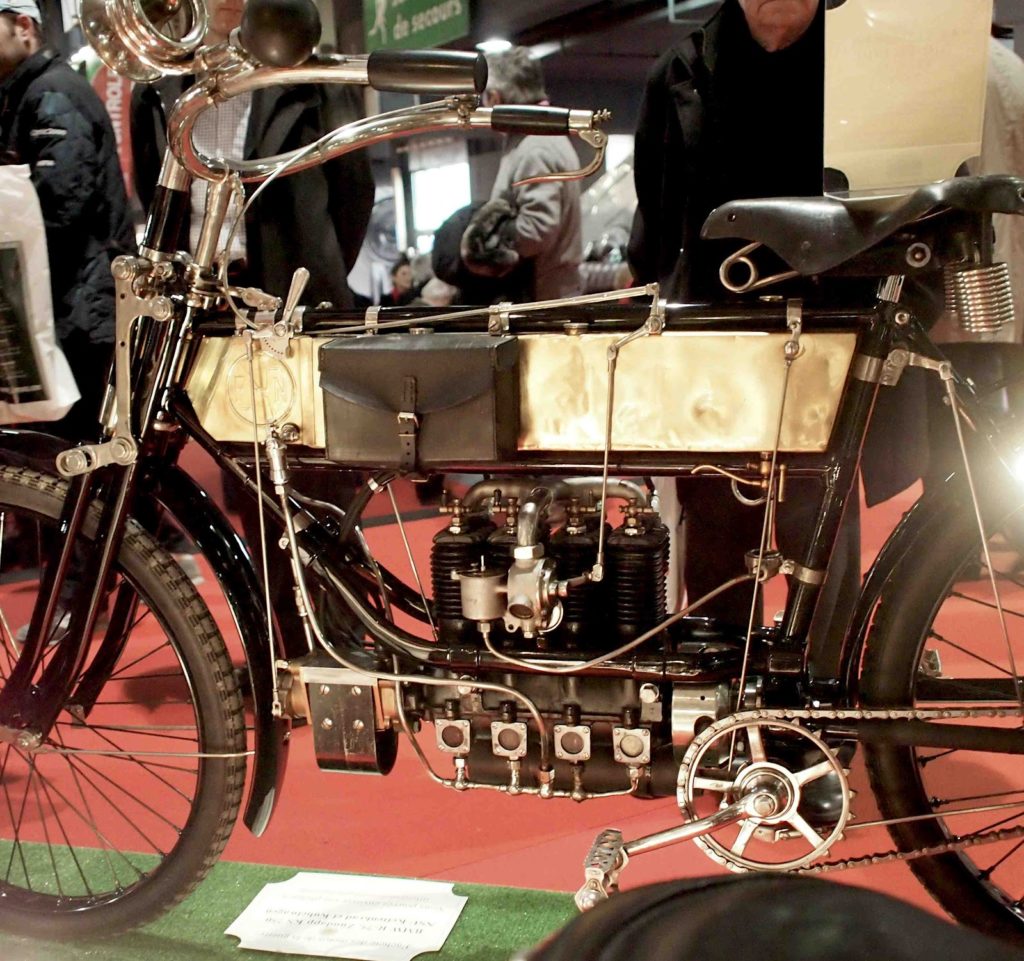
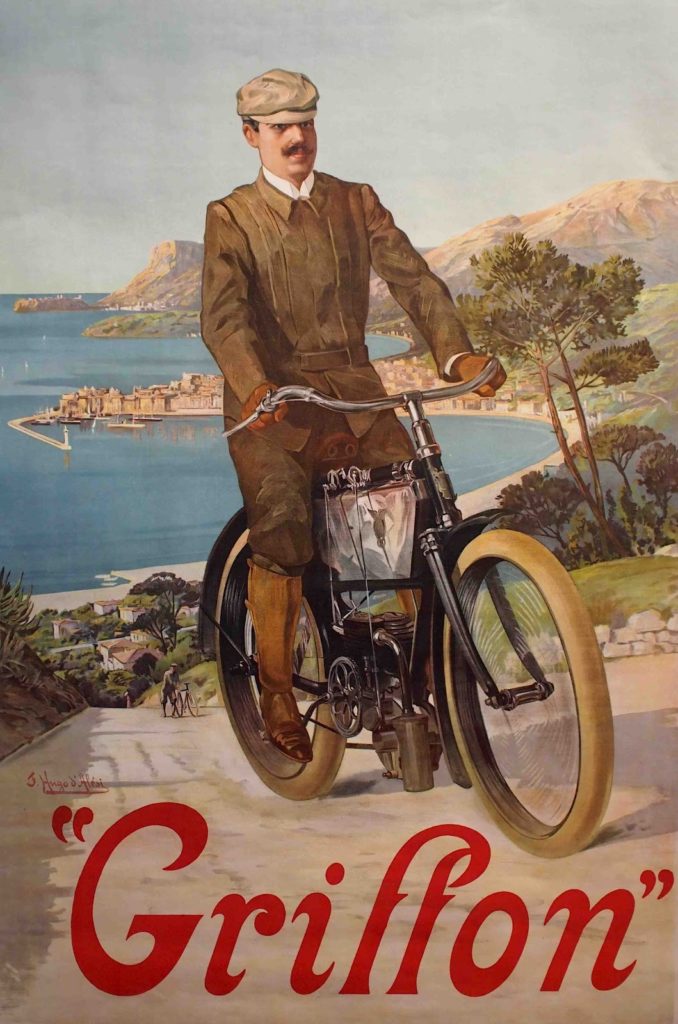
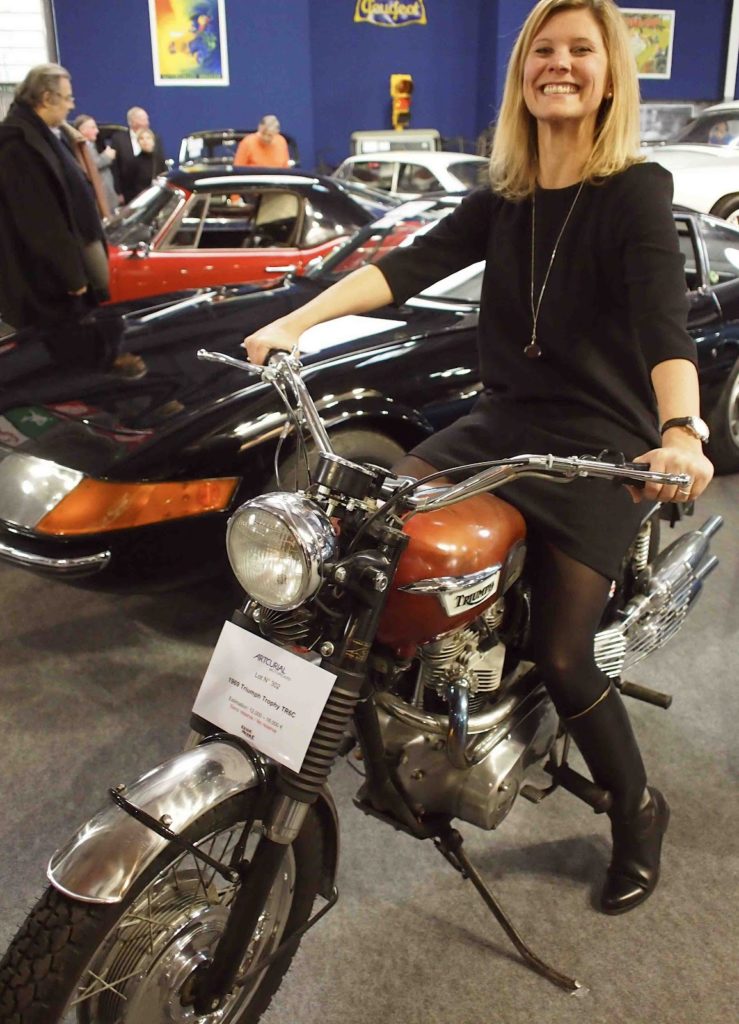

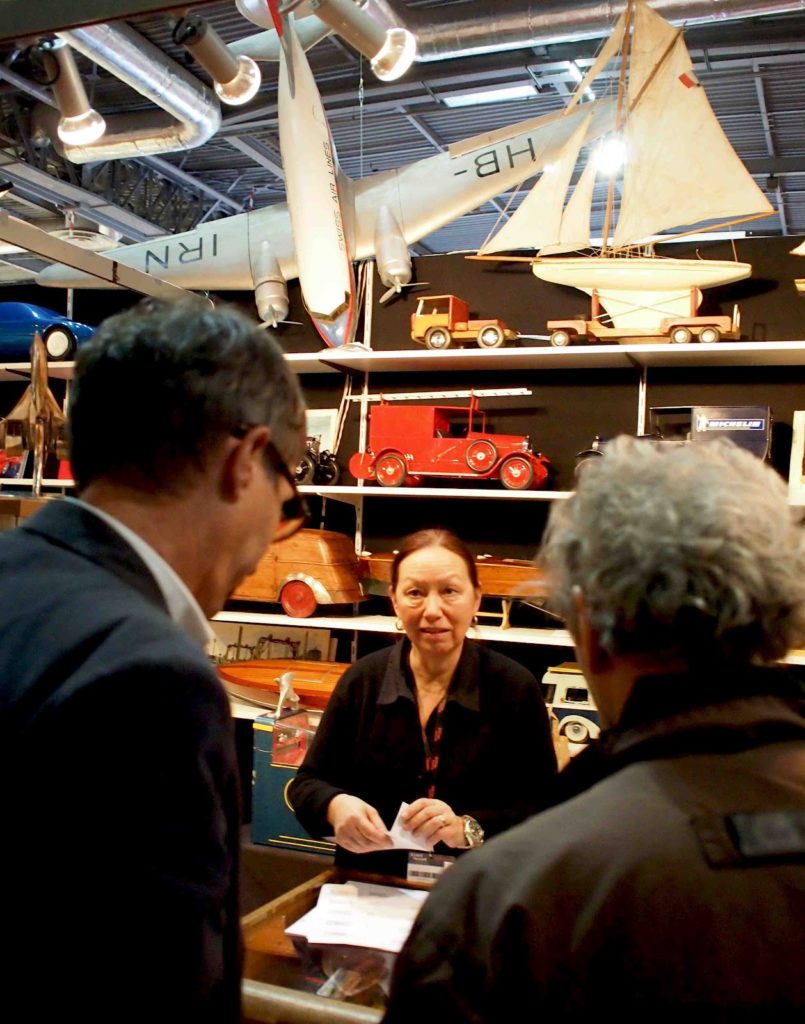

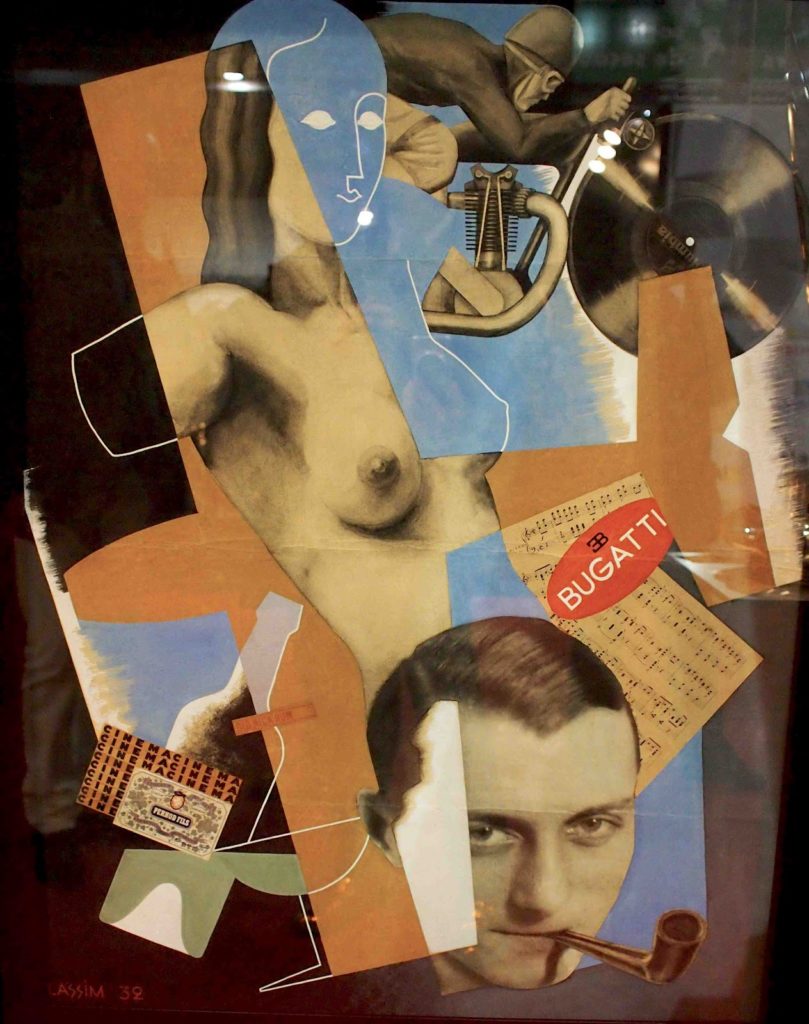
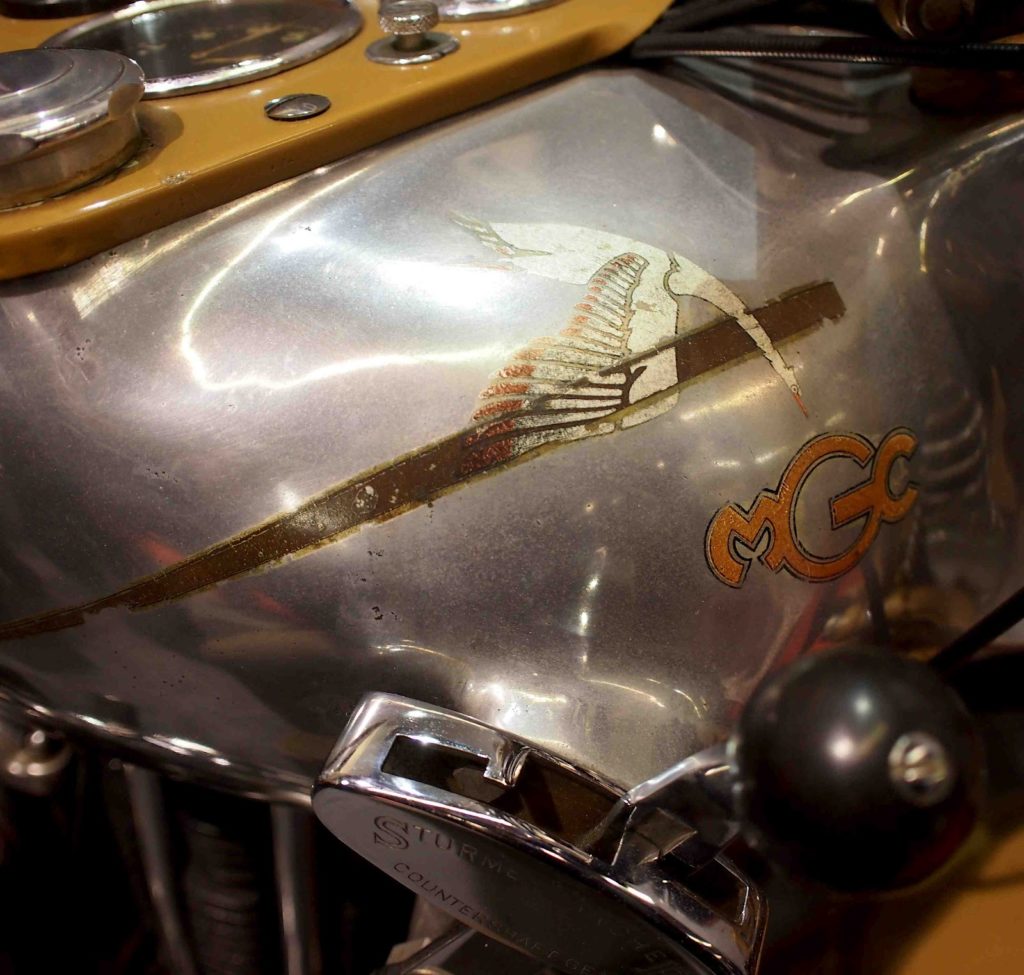
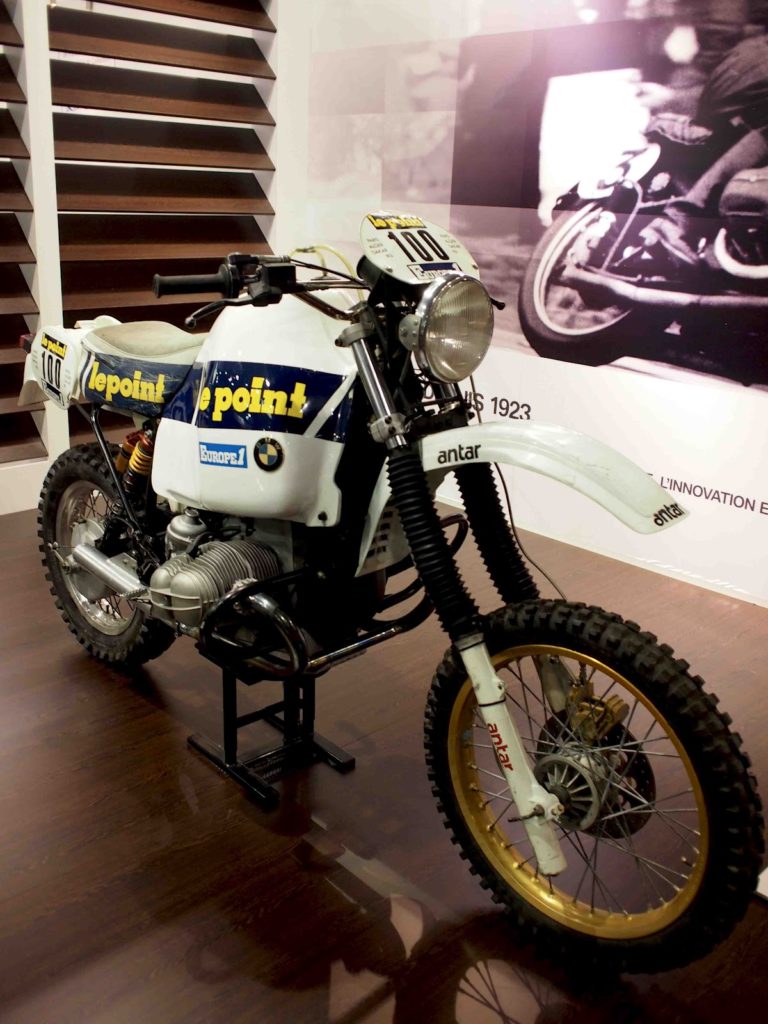
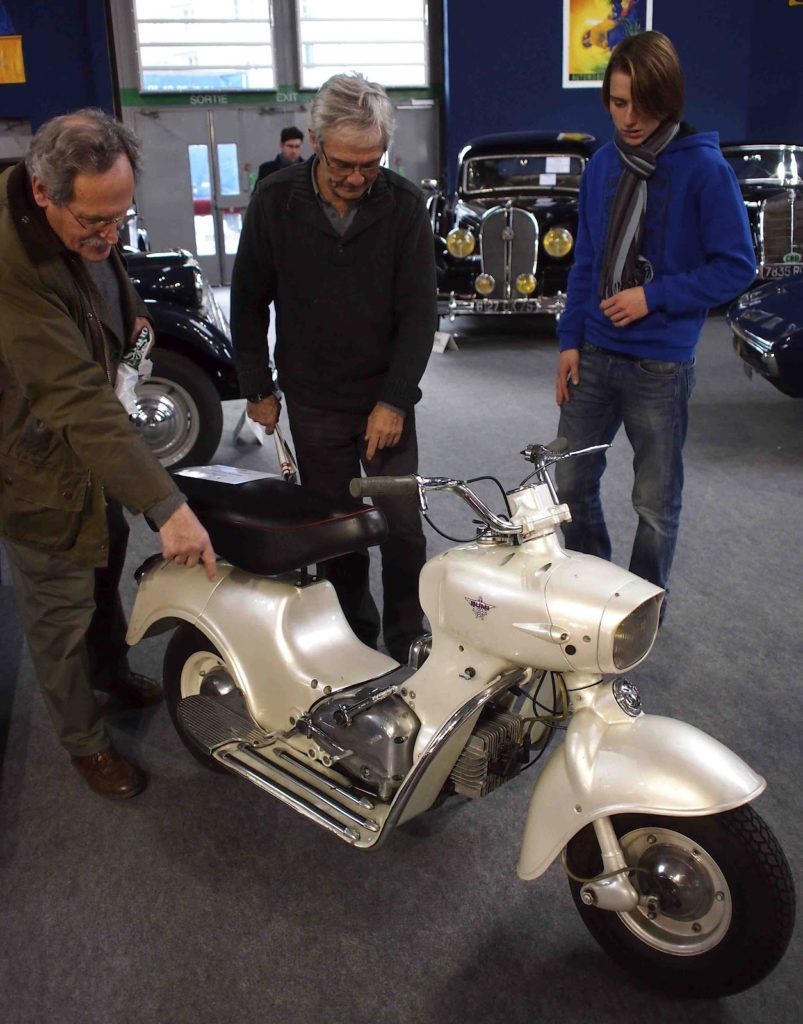
Grayson Perry at the British Museum
To the pantheon of gender-bending motorcyclists - the infamous, notorious, or hidden - we must add Grayson Perry, multi-talented artist, transvestite, Turner Prize winner, and dedicated biker. I was lucky to catch Perry's show at the British Museum in London last week, 'Tomb of the Unknown Craftsman', and began smiling the moment I spotted the 'Kenilworth AM1', his custom Harley-Davidson Knucklehead, at the head of the grand curved staircase in the museum's atrium.
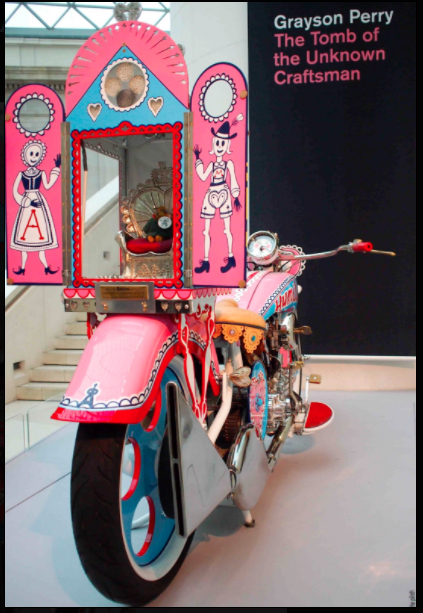
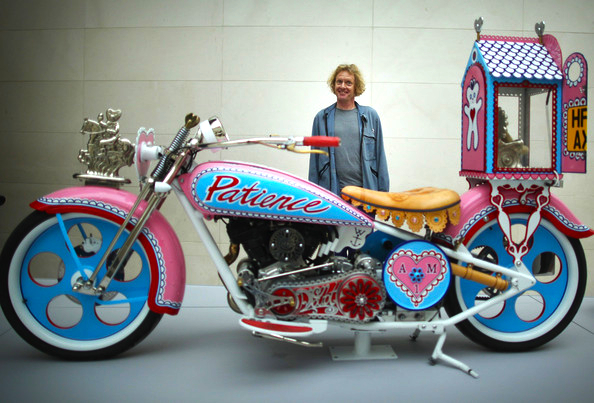
The 'Kenilworth AM1' is Perry's two-wheeled 'popemobile', a performance-art prop created to carry Alan Measles (Perry's 50-year old teddy bear/muse/alter ego/totem) on a pilgrimage to Germany, in a glass-sided reliquary mounted, naturally, on the 'sissy bar' of his custom Harley. The AM1 is built and painted up much like Perry's trademark 'drag' outfits, using highly saturated colors and shapes reminiscent of 'Outsider' art. The elongated pink-and-blue petrol tank is painted either side with 'humility' and 'patience', which Perry notes are the "opposite of rocker lifestyle texts."
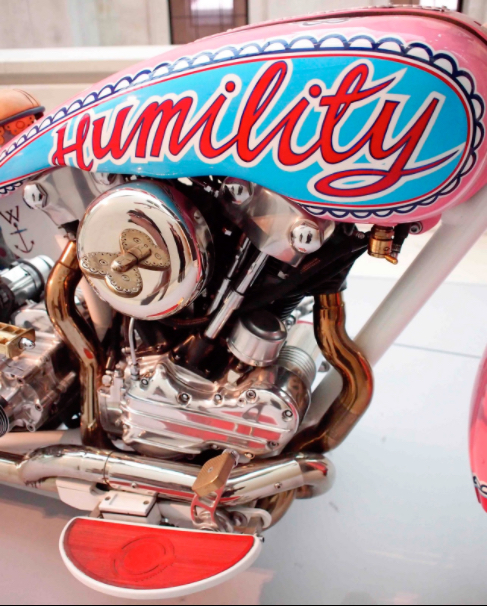
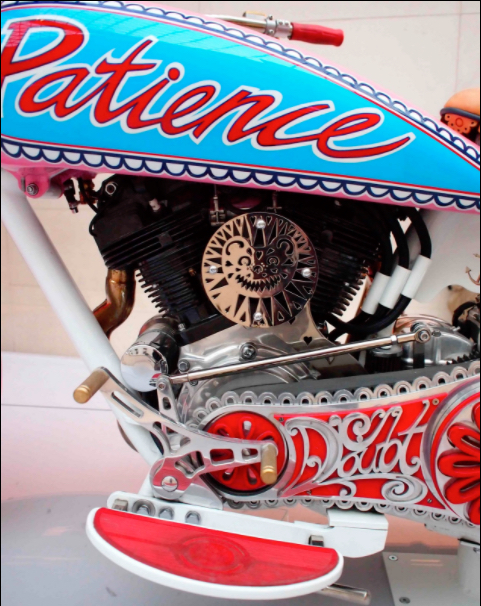
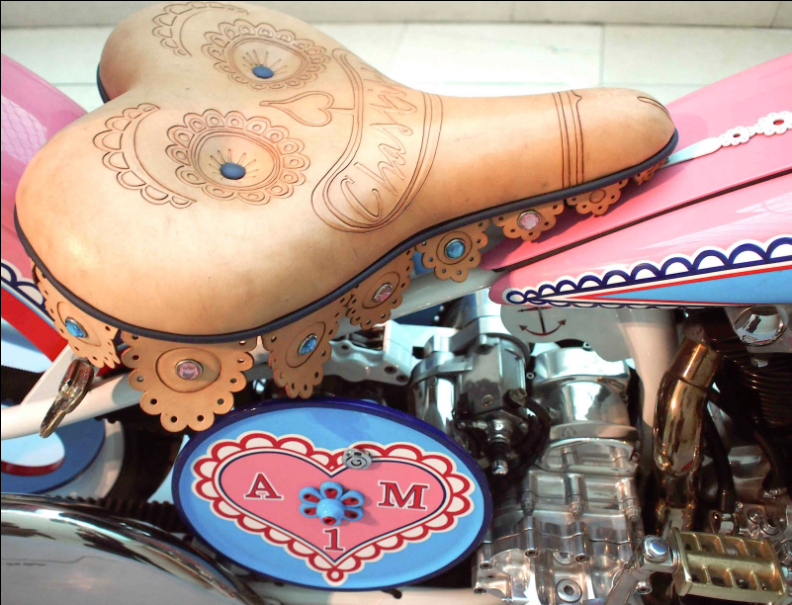
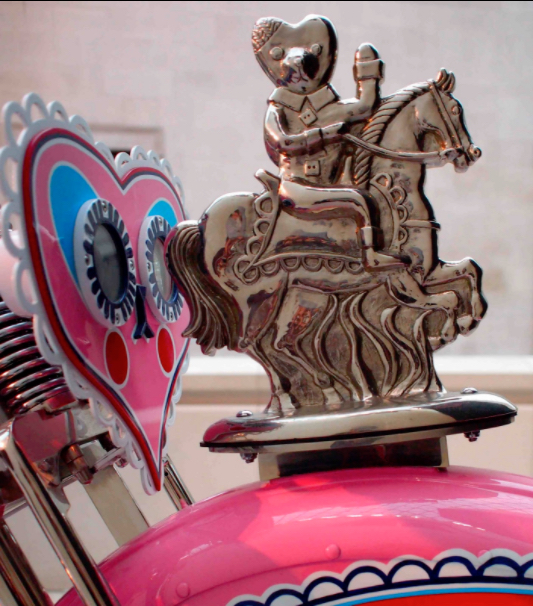
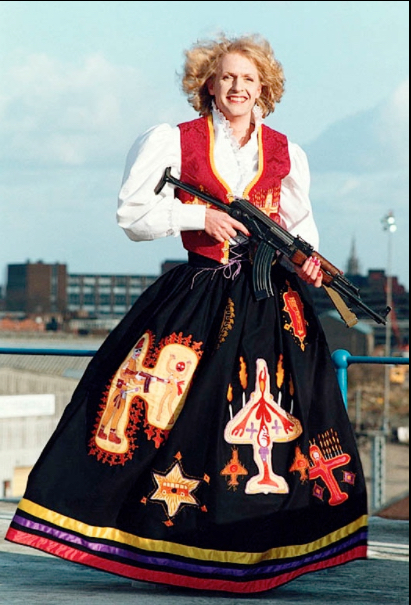
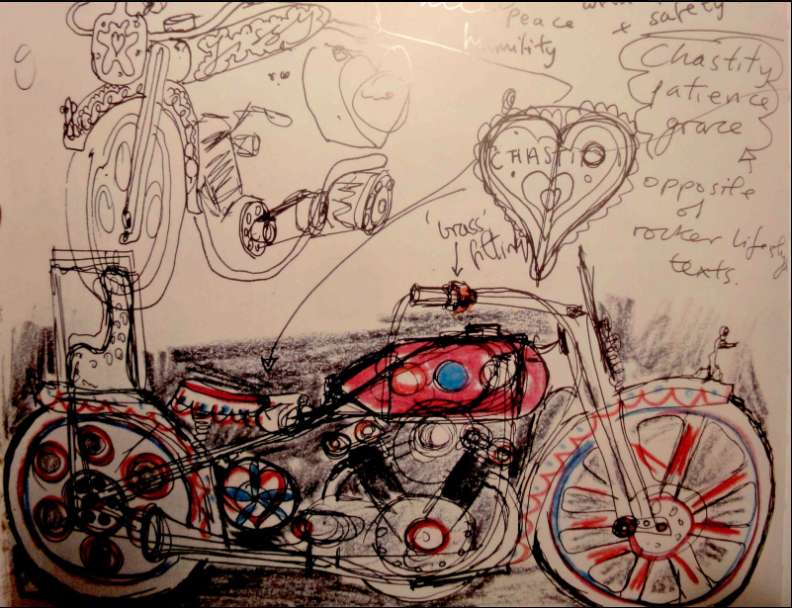
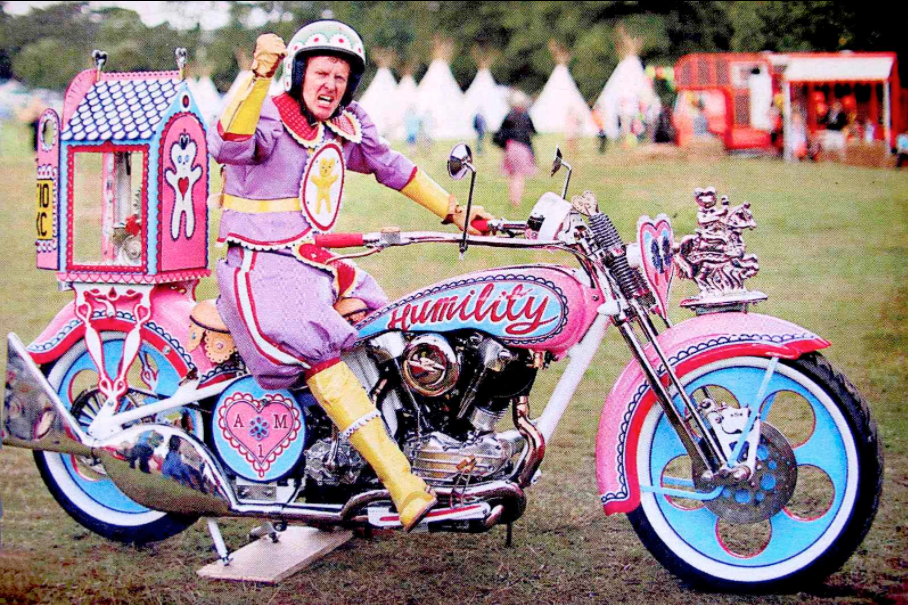

A Short History of Wankel Motorcycles
The revolutionary rotary engine designed by Dr. Felix Wankel, henceforth known as the Wankel engine, is a design of tremendous promise, and expensive vexation. It seemed the wonder motor of the future in the 1960s, and many automobile manufacturers took a out a license on the design, from General Motors to Rolls Royce, as did many aircraft and
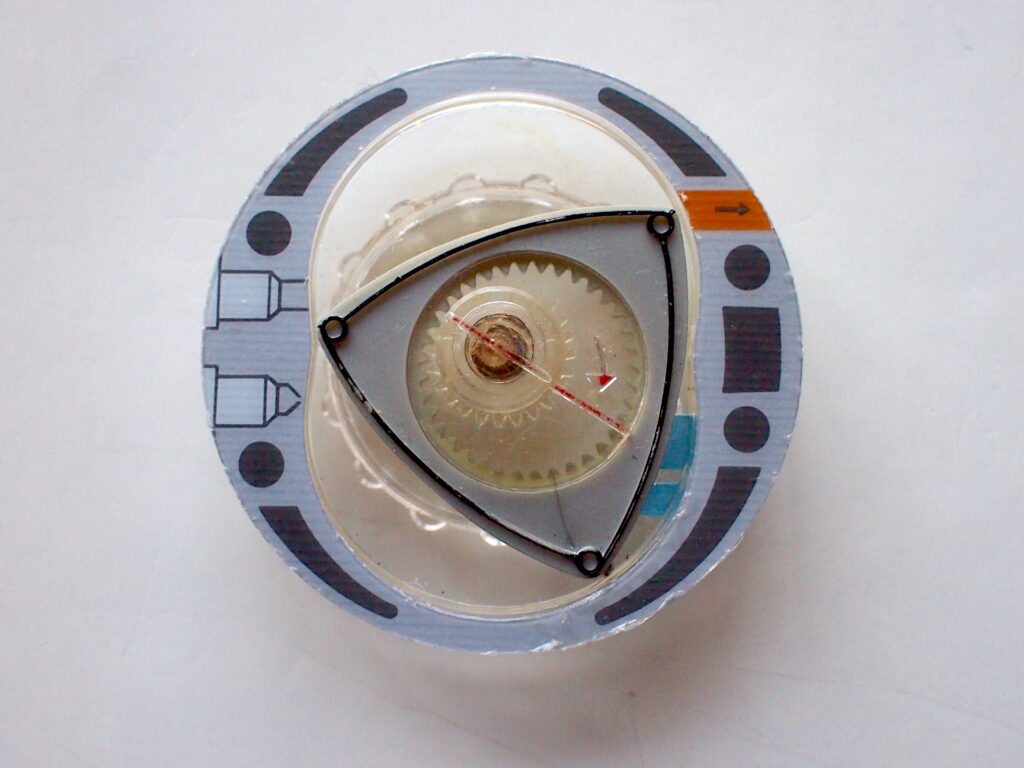
Dr. Felix Wankel (born 1902 in Lahr, Germany) had the vision for his remarkable rotary engine at the age of 17, began working on prototypes 5 years later, and gained his first patent for this remarkable engine in 1929. His work on the motor was slow in the following two decades as he developed rotary-valve applications for piston engines. By 1957, working in conjunction with NSU, he had a fully functional rotary engine prototype, and immediately began licensing the engine, which had many theoretical advantages over a typical piston motor. First to take up this new design was aircraft engine builder Curtiss-Wright, who licensed the design on Oct.21, 1958. Curtiss-Wright has a long and deep motorcycle connection, via founder Glenn Curtiss, but their Wankel engines were mostly used in aircraft. The first motorcycle applications for this promising engine appeared shortly after the first rotary-powered automobiles, the Mazda Cosmo and NSU Spider of 1964. The first motorcycle prototypes appeared earlier, in 1960, which is the start of our survey of this remarkable design.
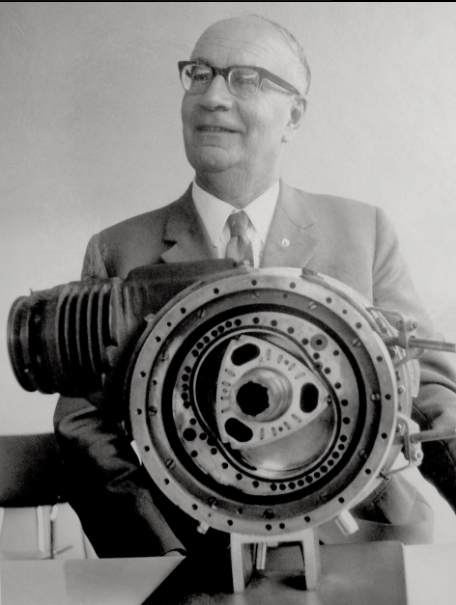
Motorrad Zschopau (MZ)/ IFA
The first motorcycle application of the Wankel engine emerged from the IFA/MZ factory, from 1960. MZ took out a license from NSU in 1960, to develop Wankel engines as possible replacements for their two-stroke engines in both motorcycles and the 'Trabant' 3-cylinder two-stroke car. Within 3 months, a single-rotor, watercooled engine (using the thermosyphon principle rather than a water pump?) of 175cc, was installed in an IFA chassis (the 'BK 351' of 1959) which formerly housed a flat-twin two-stroke engine. The development team included engineer Anton Lupei, designer Erich Machus, research engineer Roland Schuster, plus machinists Hans Hofer and Walter Ehnert, who deserve credit as the first to build a Wankel motorcycle.
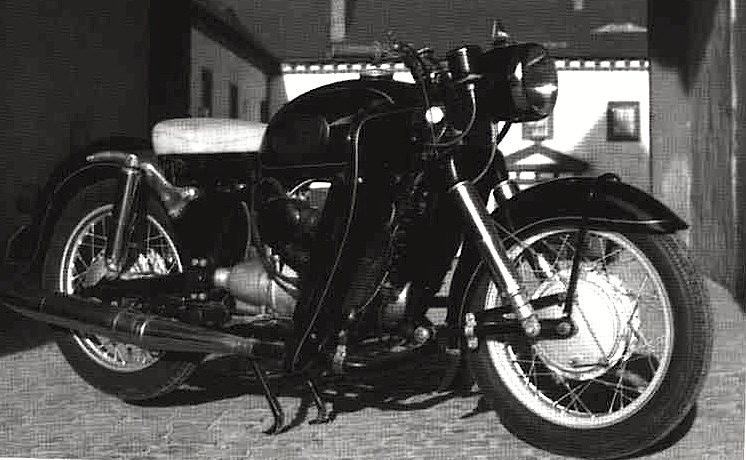
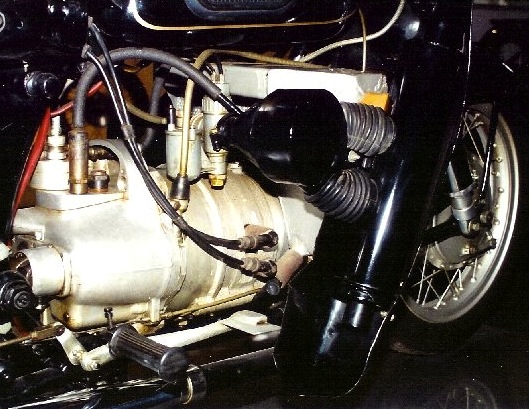
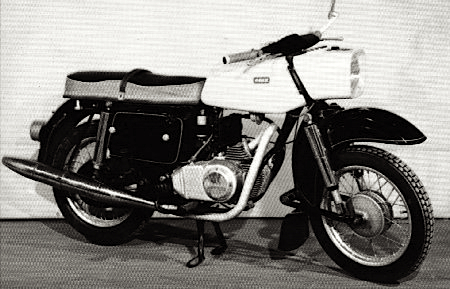

Yamaha
Yamaha licensed the Wankel design in 1972 and quickly built a prototype, showing the 'RZ201' at that year's Tokyo Motor Show. With a 660cc twin-rotor water-cooled engine, it gave a respectable 66hp @6,000rpm, and weighed 220kg. While the prototype looks clean and tidy, the lack of heat shielding on the exhaust reveals the Yamaha was nowhere near production-ready, given the searing heat of the Wankel exhaust gases, and subsequent huge, double-skinned, and shielded exhaust systems on production rotaries.
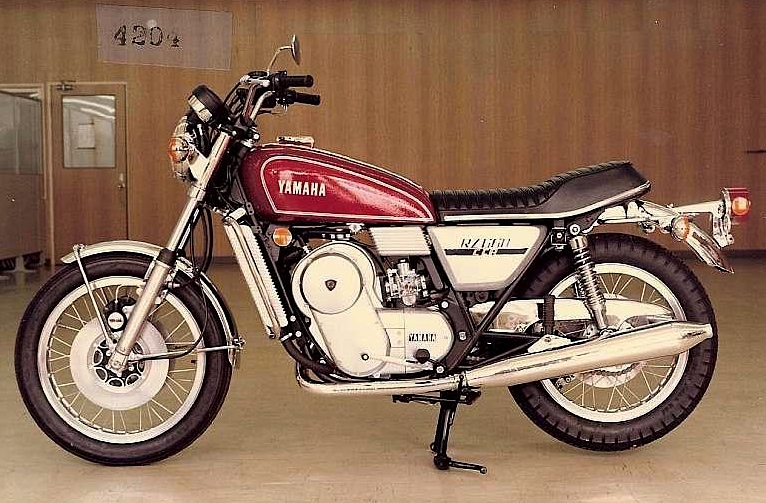
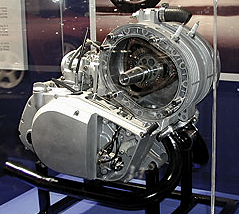
Suzuki
One year after Yamaha introduced, but never manufactured, their rotary, Suzuki introduced the RE5 Rotary at the 1973 Tokyo Motor Show. Suzuki licensed the Wankel engine on Nov.24, 1970, and spent 3 years developing their own 497cc single-rotor, water-cooled engine, which pumped out 62hp @ 6500rpm. Styling of the machine was reportedly entrusted to Giorgietto Guigiaro, a celebrated automotive stylist and advocate of the 'wedge' trend in cars, who leaked into the motorcycle world via several projects, notoriously the 1975 Ducati 860GT. Guigiaro's touch extended only to the cylindrical taillamp and special instrument binnacle for the RE5; a cylindrical case with novel sliding cover, meant to echo the futuristic rotary engine... the rest of the machine looked nearly the same as Suzuki's GT750 'Water Buffalo'.
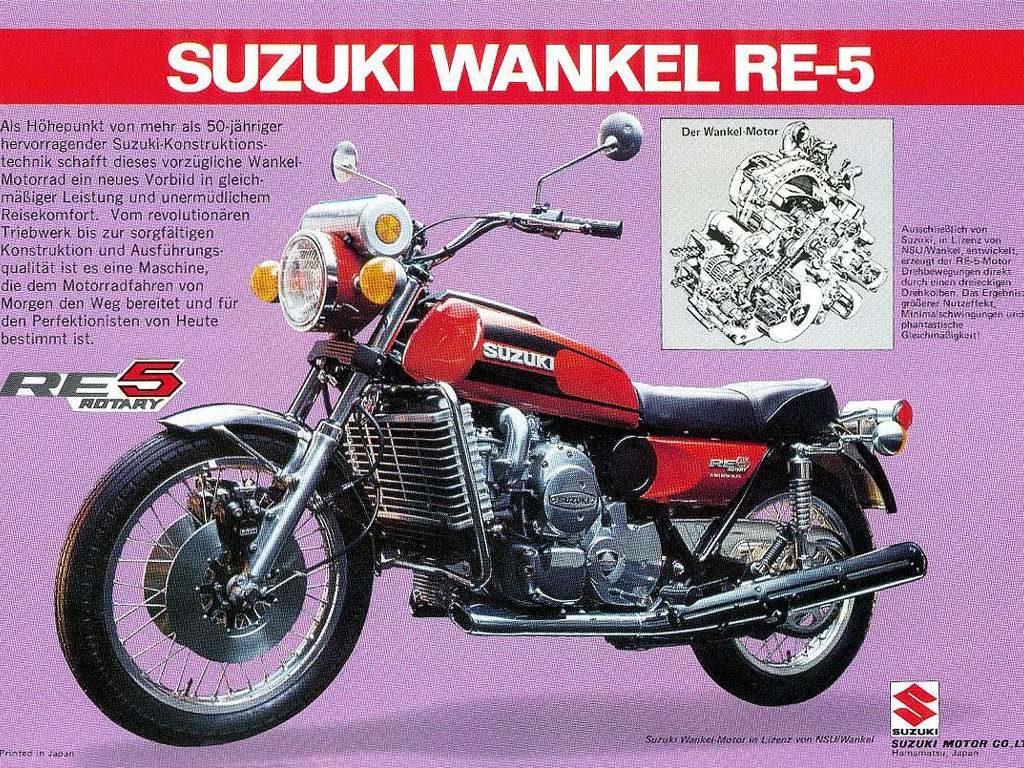
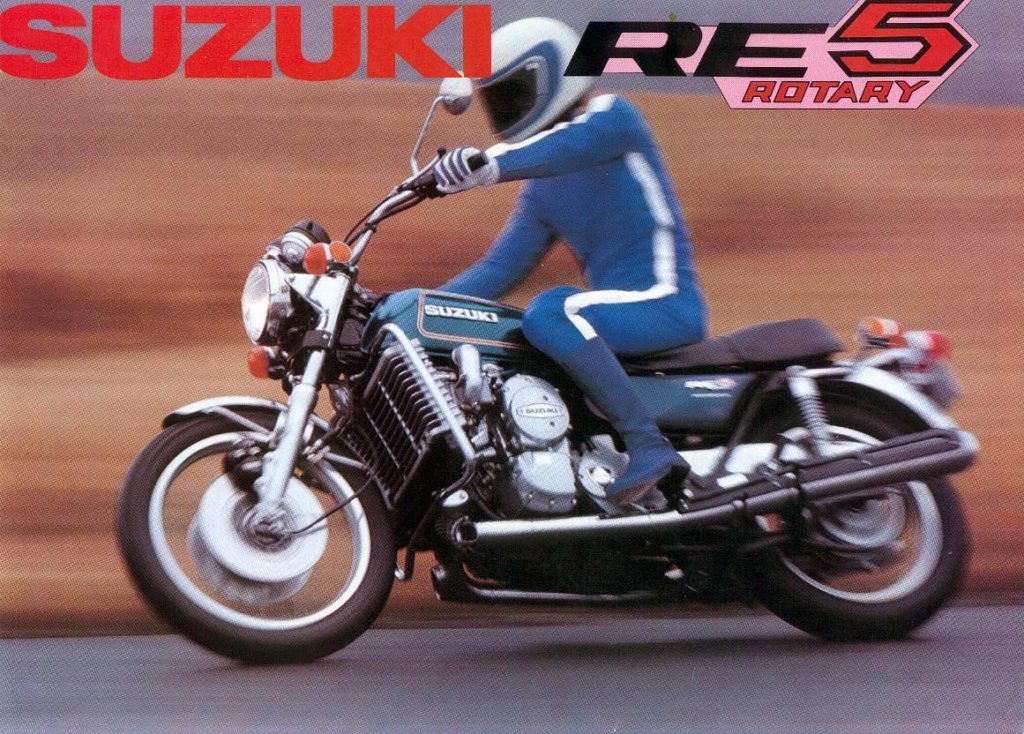
Hercules / DKW
Fitchel and Sachs were the second licensee of the Wankel engine, on Dec 29, 1960, and the first with a motorcycle connection, with 'Sachs' the largest European maker of two-stroke engines. Sachs built their rotary as a small, light accessory motor for applications as diverse as lawnmowers, chainsaws, and personal watercraft.
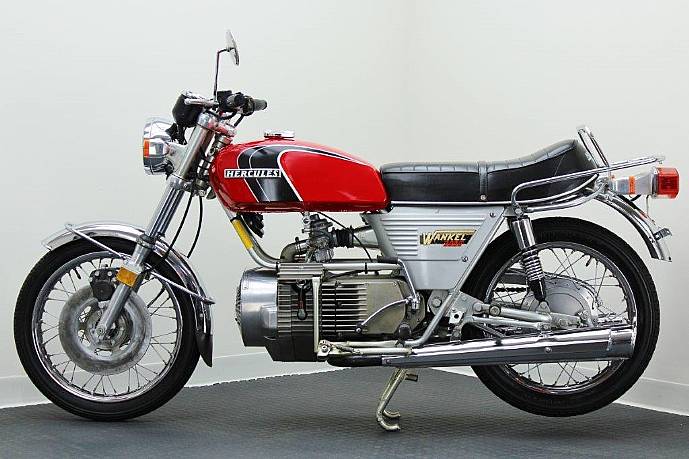
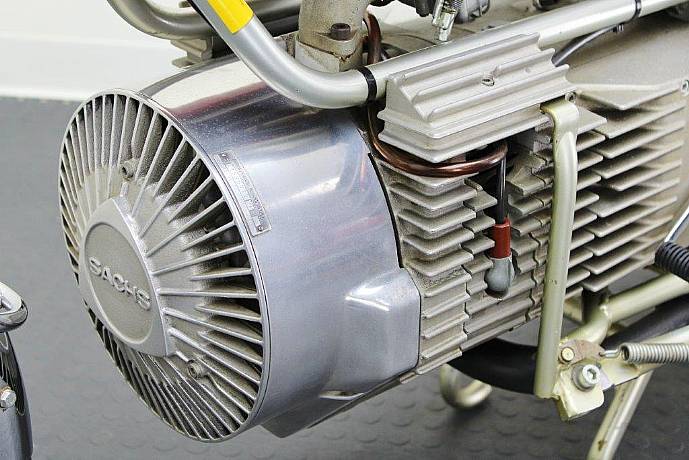
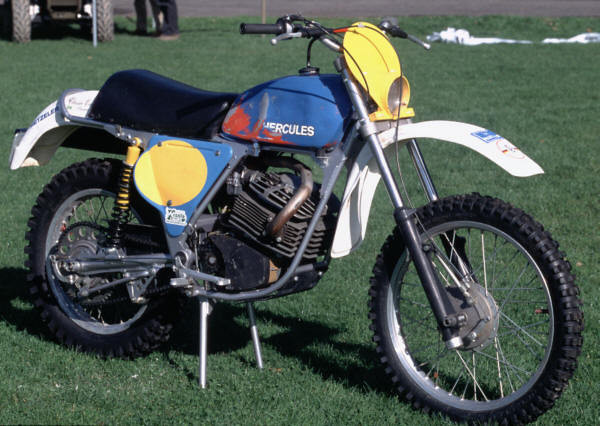

BSA / Norton
BSA felt, in common with most of the automotive industry, that the Wankel was the engine of the future, and in 1969, hired David Garside, a gifted young engineer, to begin exploration of Wankel engines for a motorcycle. Market research indicated the motorcycling public would accept the Wankel engine on fast sports machines, and Garside's small team began experimenting with a Fitchel and Sachs single-rotor engine, and with significant changes to the intake system, gained a staggering 85% more power, to 32hp. Suddenly the experimental engine looked appealing.
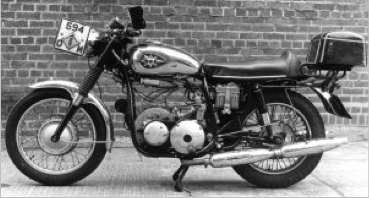
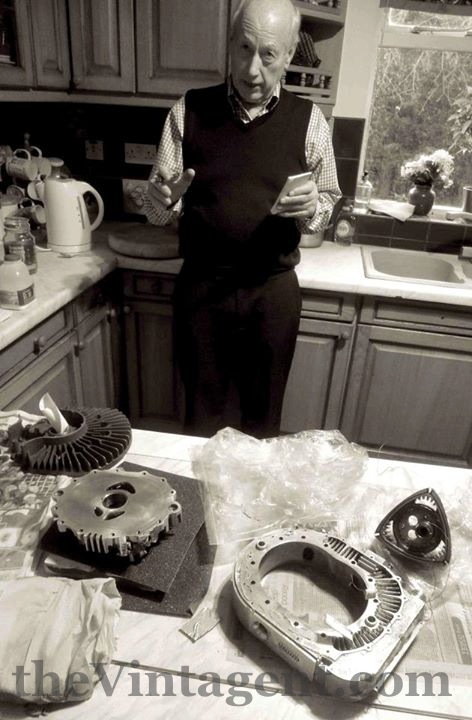
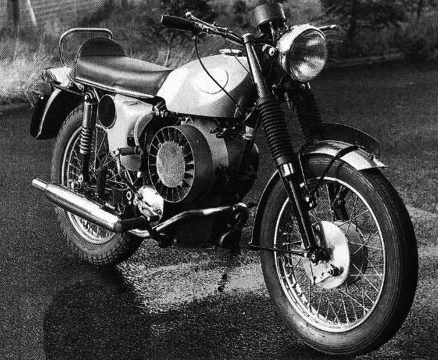
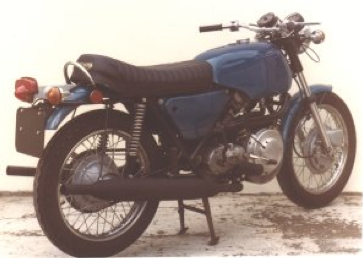

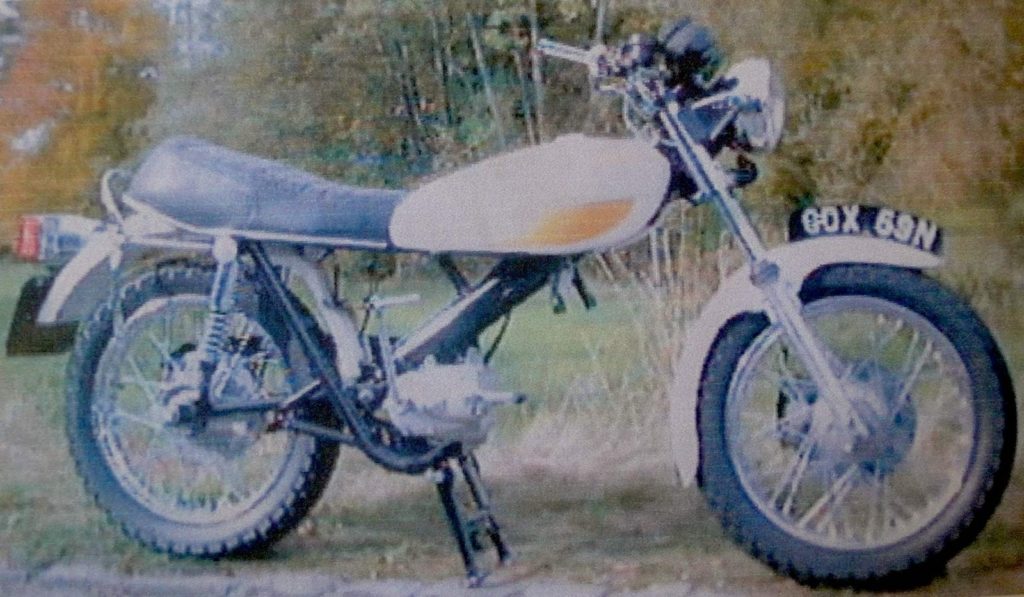

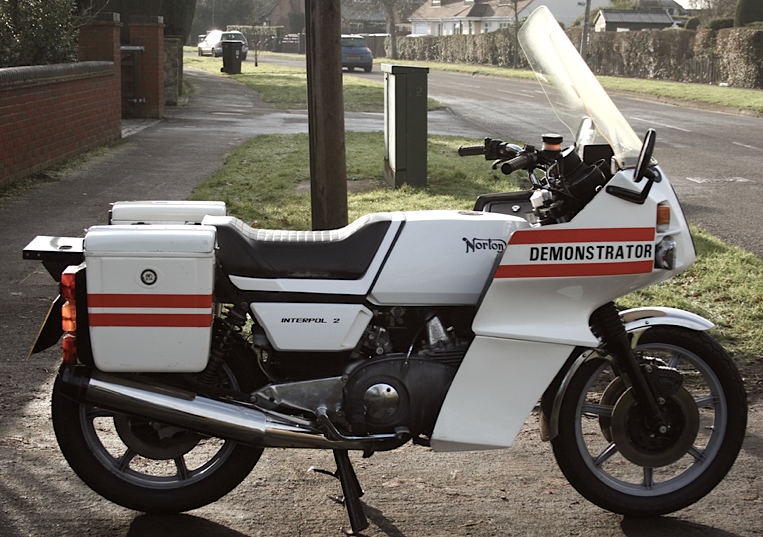
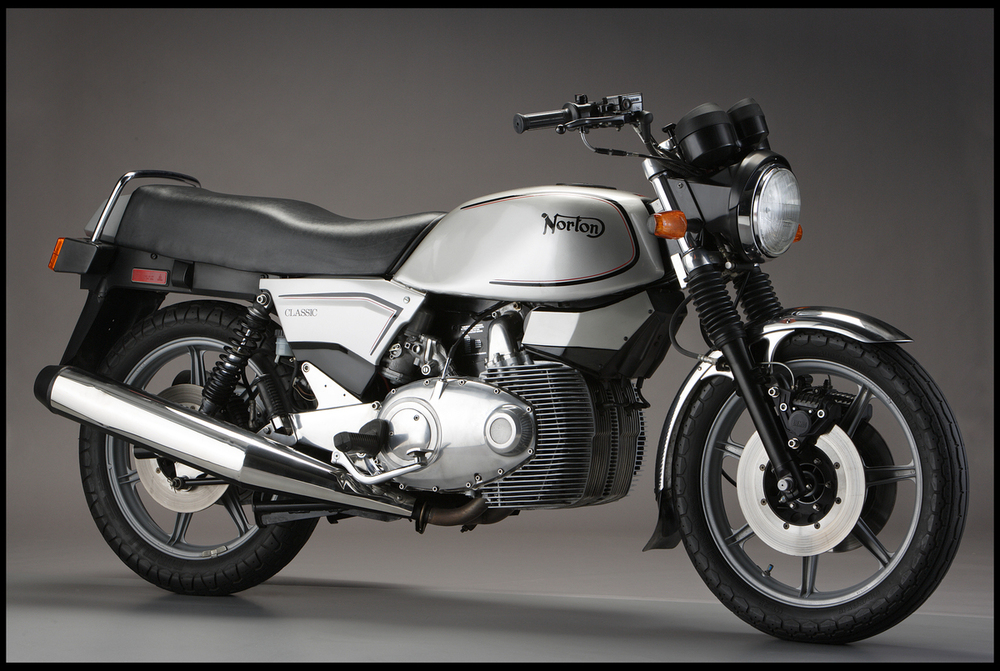

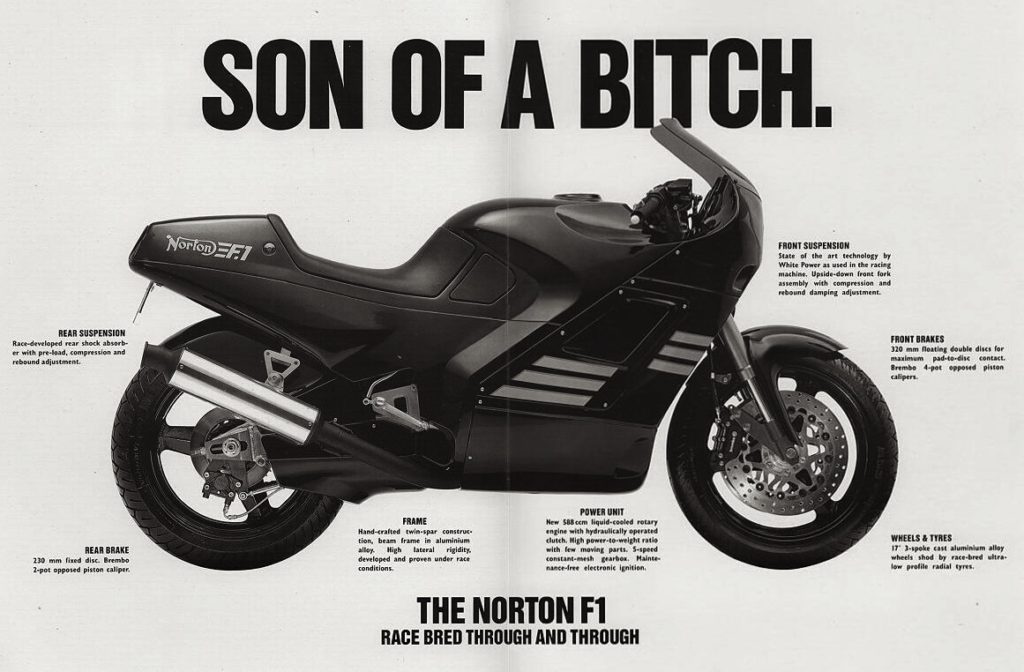

Van Veen
In 1976, Henk vanVeen, the Dutch Kriedler importer, saw potential in the new rotary Comotor engines, which were compact and developed good power. Comotor was a joint venture of NSU and Citroen, who invested huge sums developing a new Wankel engine for the Citroen GS Birotor. The prototype of this engine had been extensively tested between 1969 and '71 in the Citroen M35, which was never officially sold, but 267 were given to loyal customers for beta-testing. The M35 engine used a single rotor rated at 47hp, whereas the later GS engine had two rotors, and produced 107hp from a 1,000cc. Van Veen saw this powerful and compact engine as the basis of a new superbike, and created the VanVeen OCR 1000.
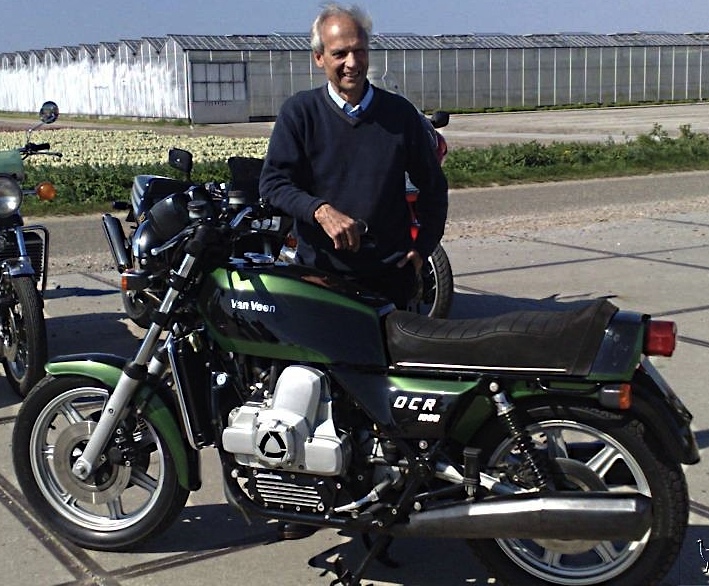

Honda
Honda's engineers did investigate the Wankel craze of the mid-1970s, although they never produced or even licensed the Wankel design. Housed in a nearly stock CB125, this test-bed project was clearly intended to see if Honda was missing out on the Next Big Thing. This prototype looks to have been built around 1973, given the paint job and spec of the CB125 'mule'.
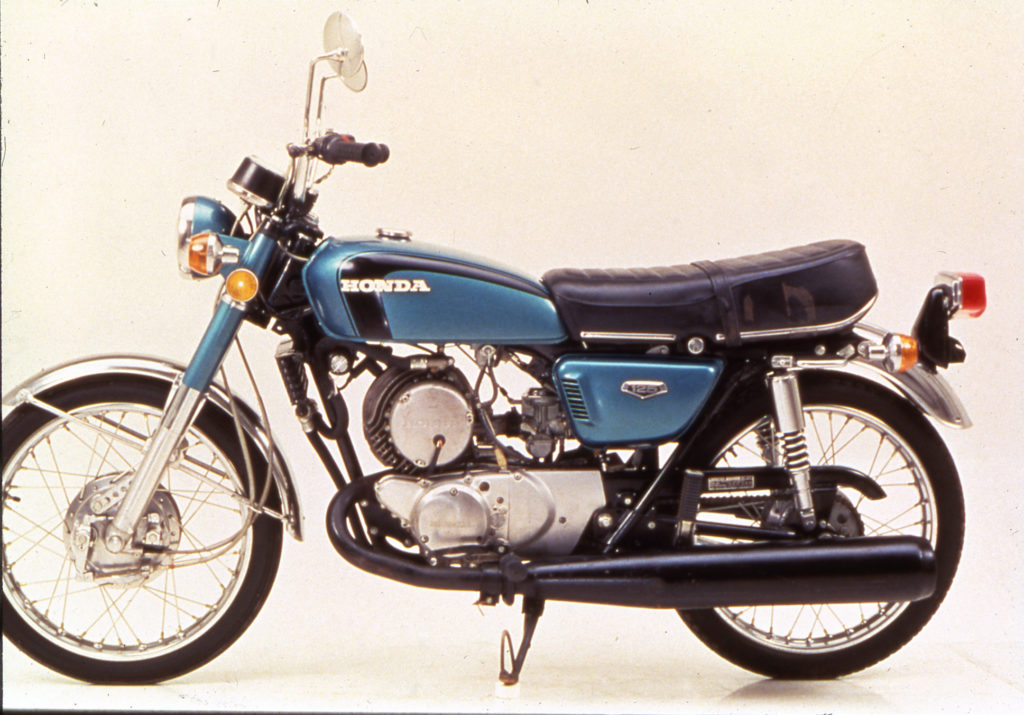
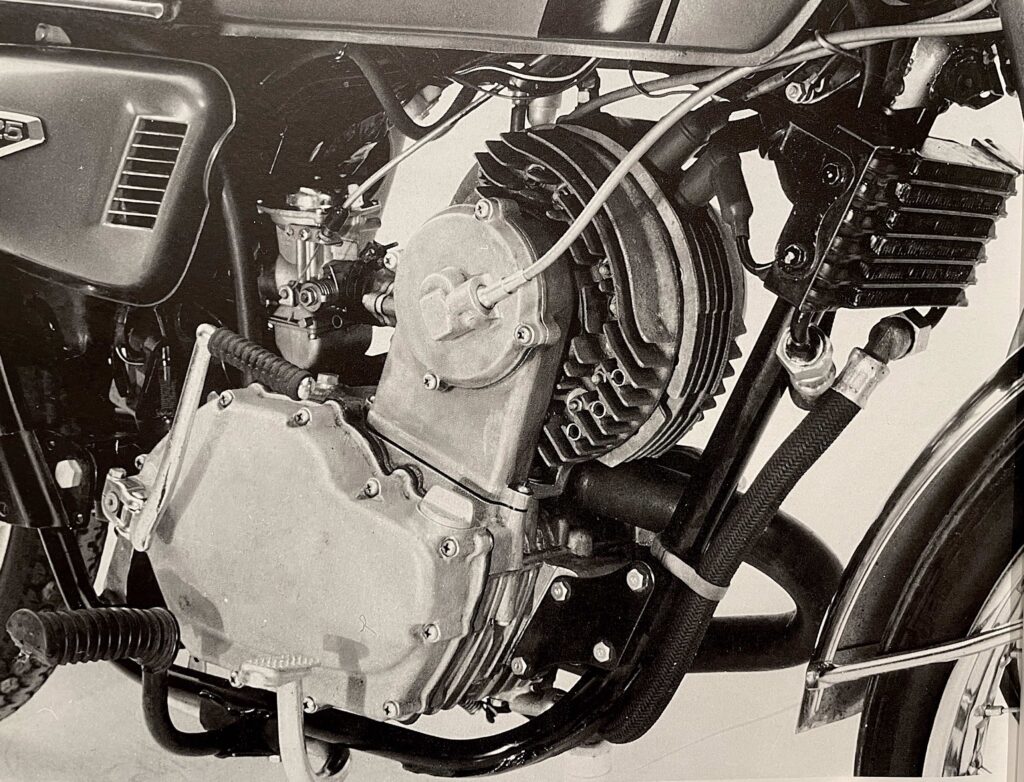
Kawasaki
Kawasaki joined the fray later than its Japanese rivals. The 'X99' prototype had a twin-rotor engine, water-cooled, which purportedly developed 85hp. Kawasaki Heavy Industries, Ltd, purchased a license to built Wankels on Oct. 4, 1971; the chassis of the X99 appears to be based on Kawasaki's Z650, introduced in 1976, which suggests the date of this prototype.
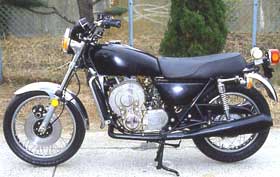
VNII-Motoprom
The city of Serpukhov, 100km from Moscow, was one of many 'secret' towns in the Soviet Union, where research into new technology was conducted (plus manufacture of the AK-47), far from prying eyes. VNII-Motoprom was an auto and motorcycle research institute, which created quite a few interesting machines, most notably Soviet racers such as the Vostok-4, and a few Wankel-engined bikes, completely unlicensed. The story of the Soviet motorcycle industry is little known in the West (and the East!), and deserves exploration...
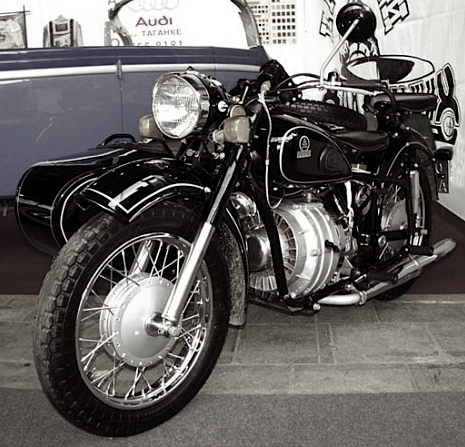


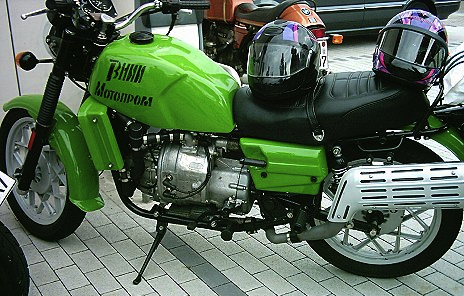
IZH
Little-known outside the Eastern Bloc, Izh is the oldest Soviet/Russian motorcycle manufacturer, founded in 1929 in Izhevsk (on the banks of the Izh river) as part of Stalin's enforced industrialization of the agrarian economy, begun in 1927 with the rejection of Lenin's 'New Economic Policy', which allowed producers of grain or goods to sell their surplus at a profit - very similar to China's first moves toward Capitalism in the 1990s. Stalin's successful effort at creating an industrial power, where none existed previously, actually decreased the standard of living, caused widespread famine, and meant imprisonment or death for millions...although it did create an automotive and motorcycle industry. Not that 95% of Soviet citizens could afford it in those early days, although Izh sold something like 11 Million motorcycles before 1990.
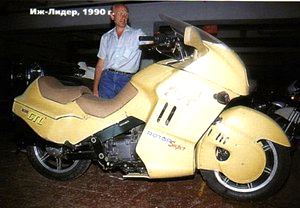
Crighton Racing
Brian Crighton joined Norton Motors in 1986, as a service engineer working on their Wankel models. He was promoted to their R&D department, and began developing a scrap 588cc air-cooled Norton engine, raising output from 85hp to 120hp. The engine was installed in a prototype racer in 1987, which hit 170mph on tests, and scored a victory on its second outing. Realizing they had a winner, Norton found sponsorship with JPS, and in 1989 Steve Spray won the British F1 and SuperCup championships. Crighton split from the Norton team in 1990, and teamed with Colin Seeley as Crighton Norton Racing, competing against factory GP two-strokes of the era. Their swansong was the British SuperCup Championship in 1994, after which the Wankel engines were banned from competition.
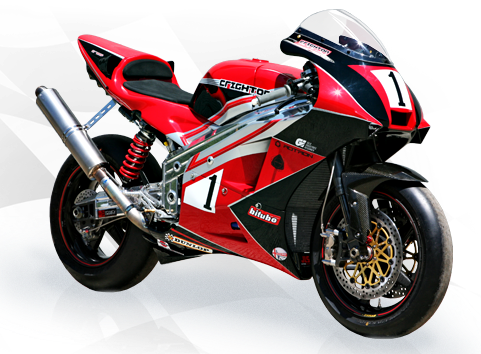

'Paradise Lost': Conrad Leach
The exhibition 'Paradise Lost’ is an exploration of the enduring appeal of Speed, Danger, British identity, and a time when men exploring physical boundaries were knighted to the acclaim of millions. This show evolved from conversations between Conrad Leach and Richard Gauntlett, as they discussed their mutual passion for the charismatic imagery and objects from the 20th Century. Not nostalgic, but a response to fascinating people, machines, and events from the near past, whose character transcends the period, and remains equally compelling today.
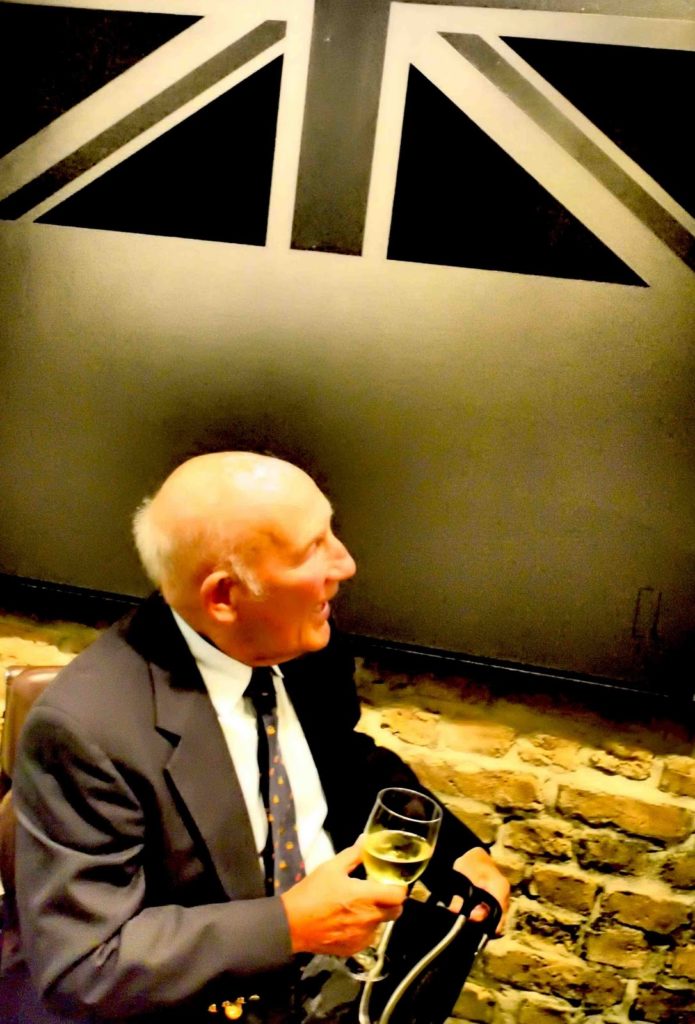
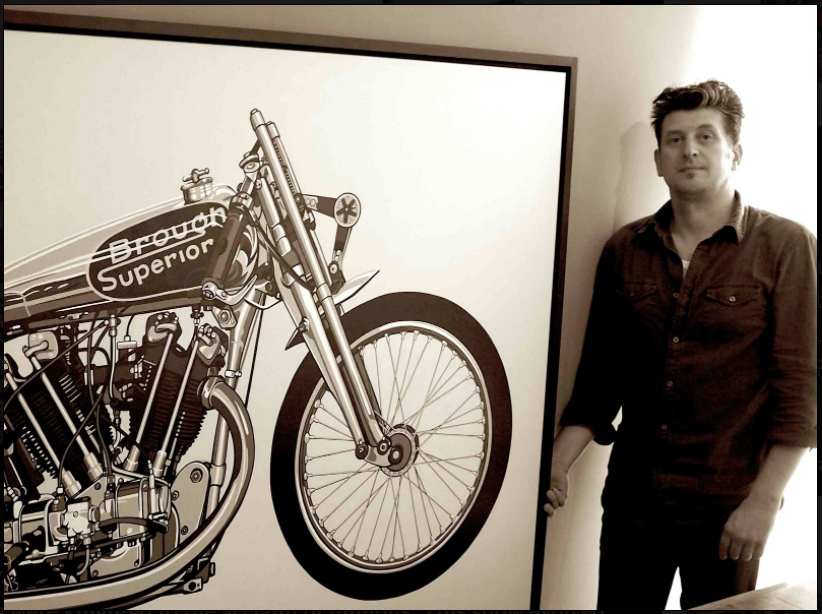
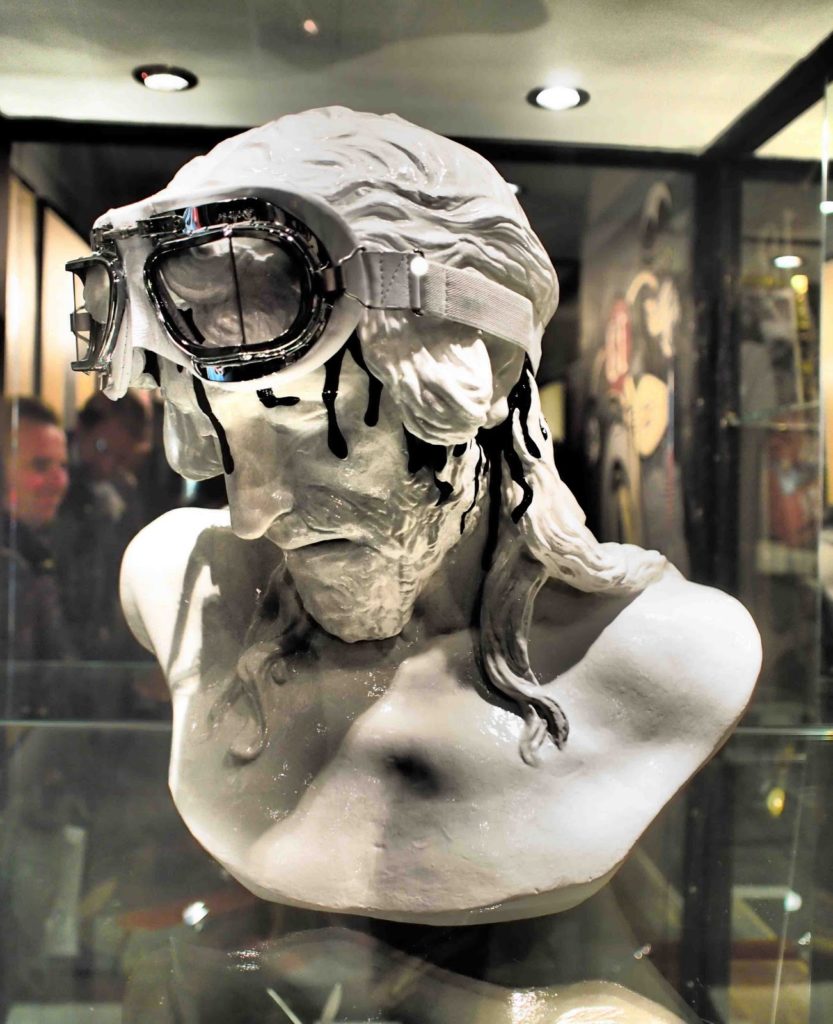
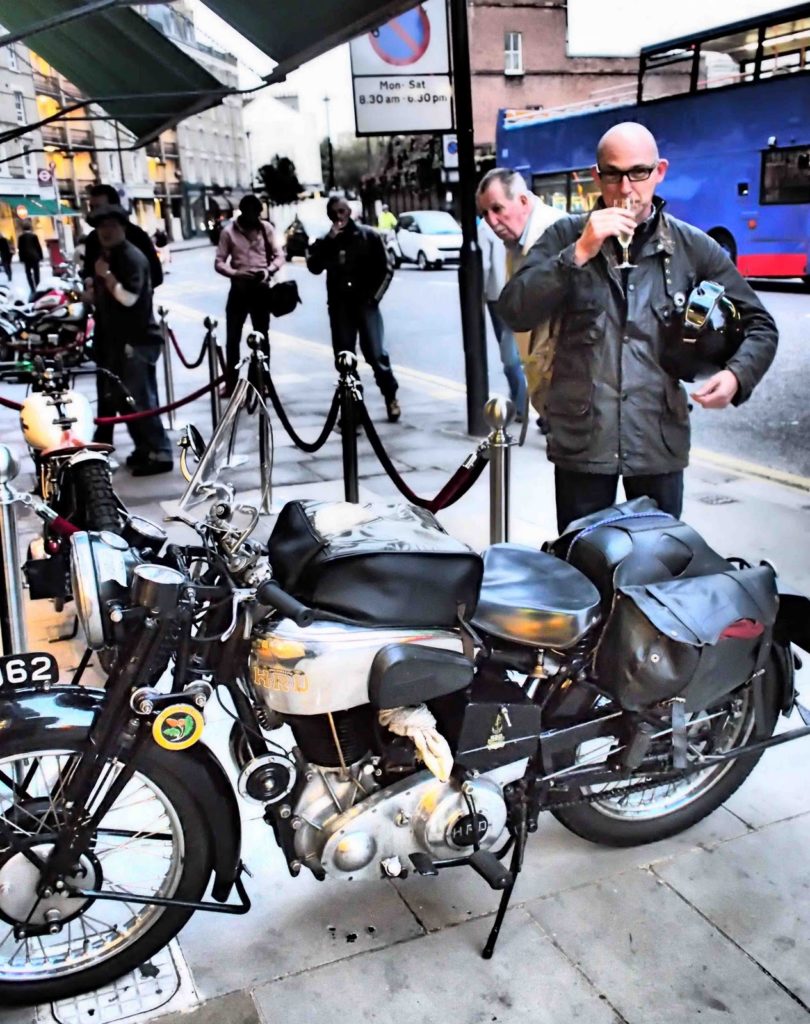
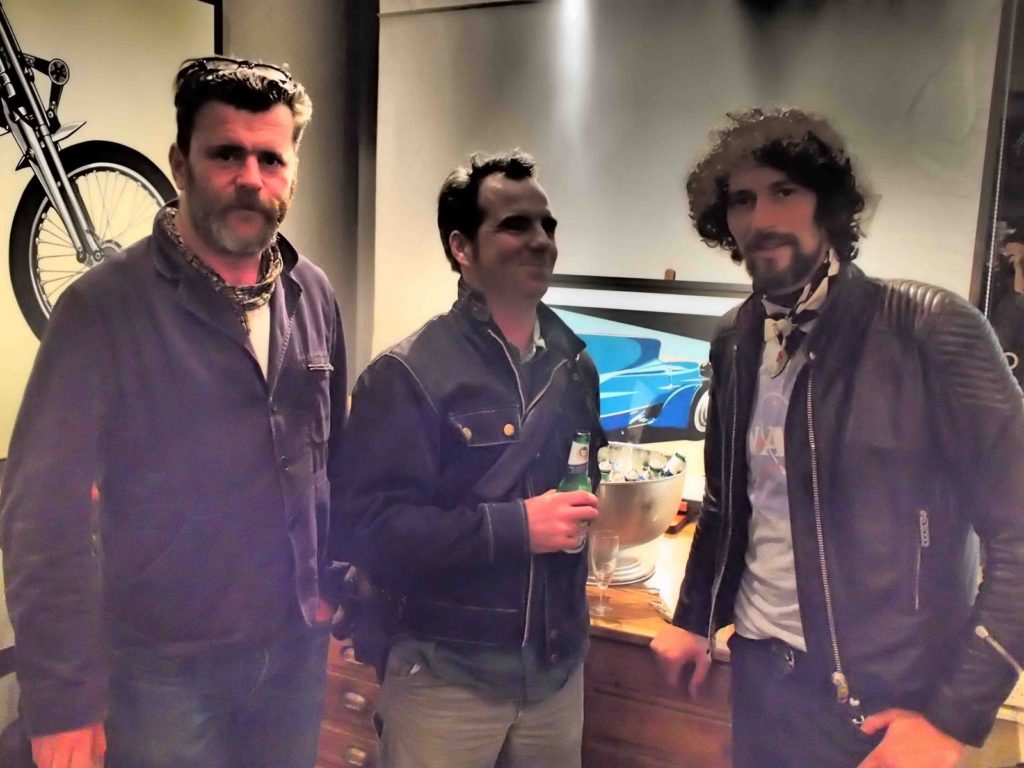

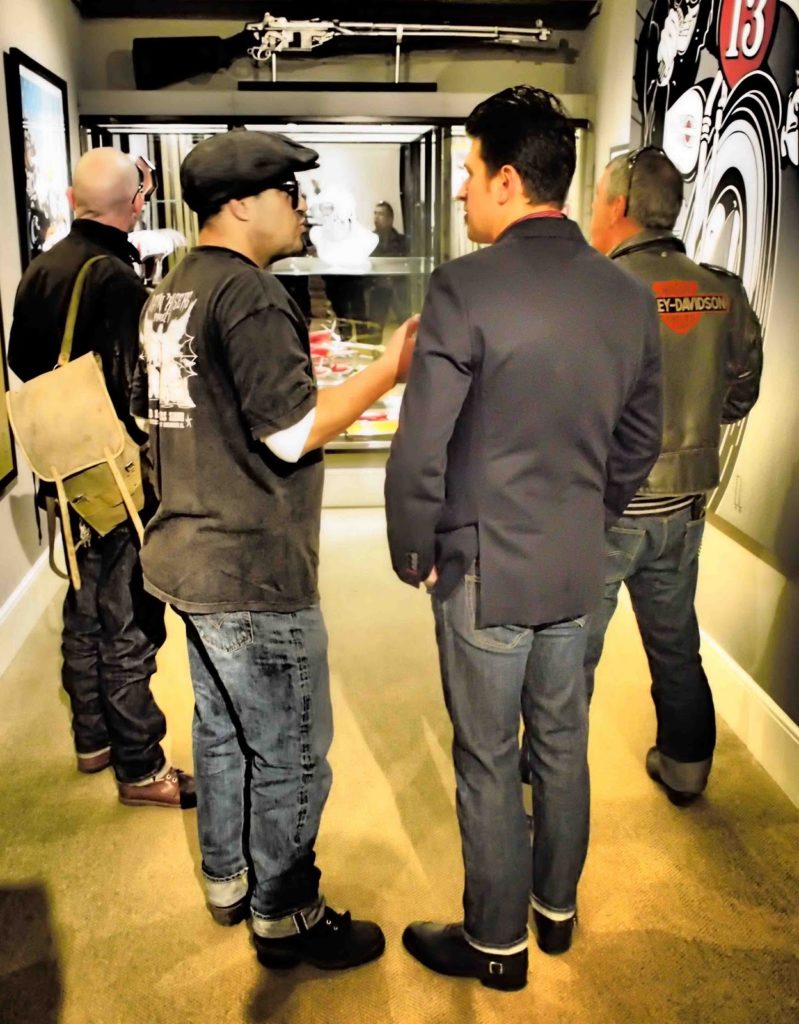

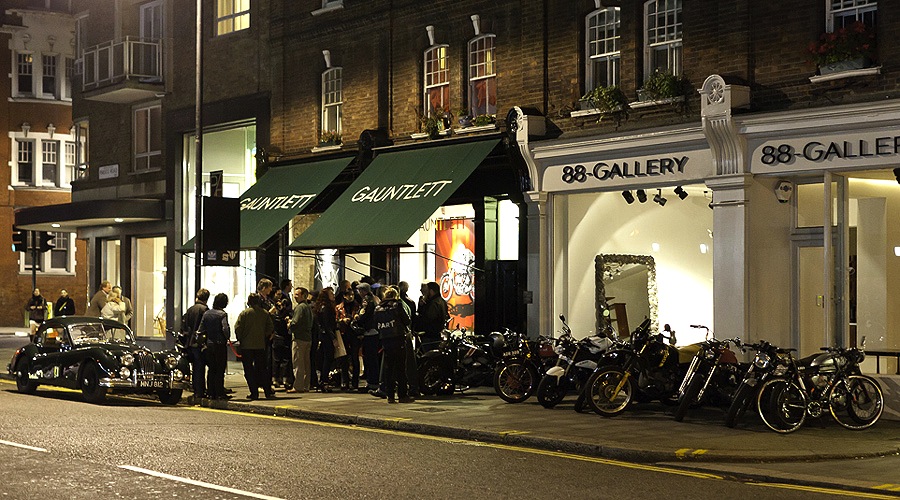

The Universal Racing Motorcycle
You need four different motorcycles to road race, motocross, trials, flat-track, and hillclimb...right? There was a time, not so long ago, when it was possible to have just one motorcycle, and race in any event with a chance of success in all of them. Those days have passed in the world of serious competition, but with Vintage events cropping up all over the world, it's still possible to have serious fun - with a chance of winning - in every category, with a single bike.
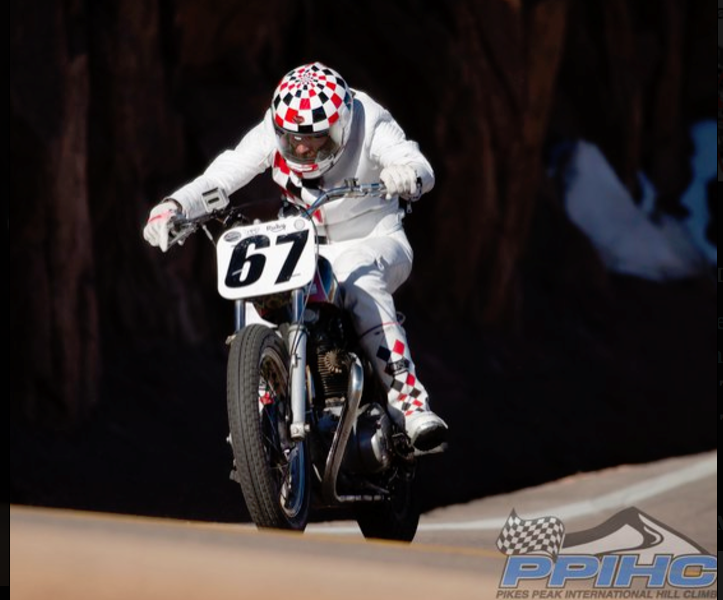
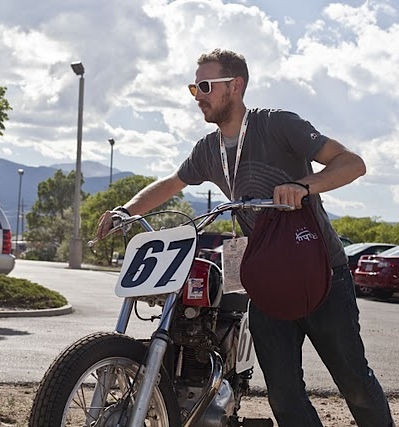
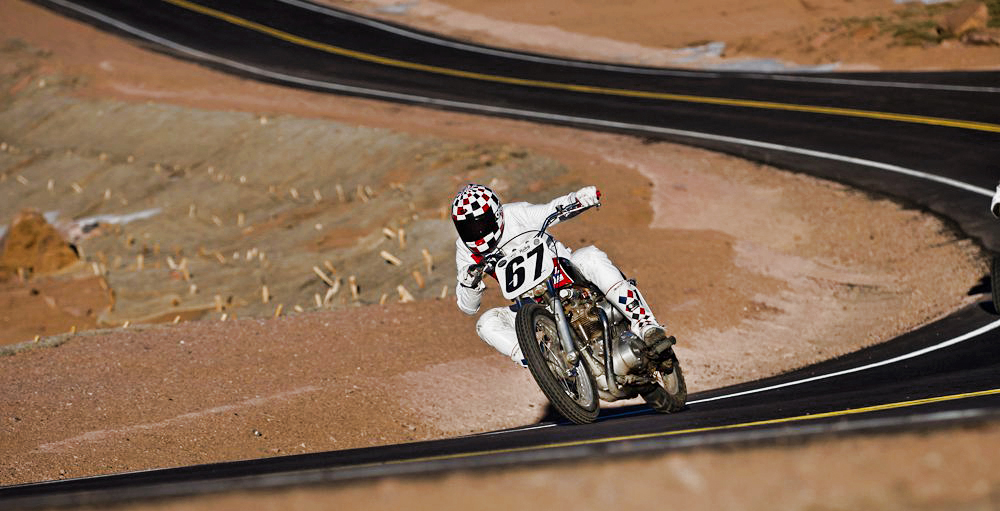
The first Pike's Peak Hillclimb was a bid for publicity, after the first highway to the top opened in August 1916; a race was staged for cars and motorcycles over the tortuous, snaking dirt track with dramatic views and vertiginous dropoffs in many areas - the race is not for the faint of heart. The road is 12.42 miles long, partially paved (at the bottom), with graded gravel and dirt towards the top, and the weather can change dramatically from the 9400' start, over the 156 turns and 4700' climb.
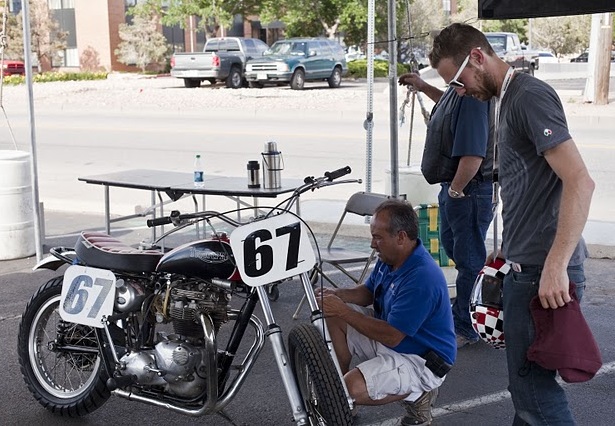
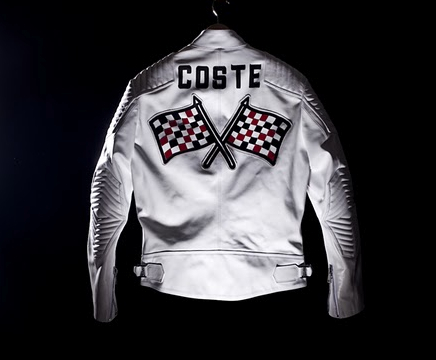

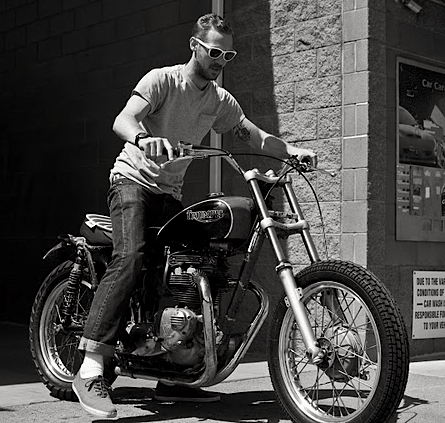

Ralph Lauren at the Louvre
When does an object cease to be 'mine', and become the property of History? The question has ignited a virtual bonfire, over which arrows are slung between detractors of Ralph Lauren's deliberate tweaking of his stunning auto collection, and those who feel RL has the right to do as he pleases with his property. The occasion for such debate is the 'L'Art de L'Auto Mobile' exhibit at the Musée des Arts Décoratifs in Paris, in the western wing of the Louvre, better known as the home of design brilliance manifested as jewelry, furniture, fashion, interior design, and objets d'art.
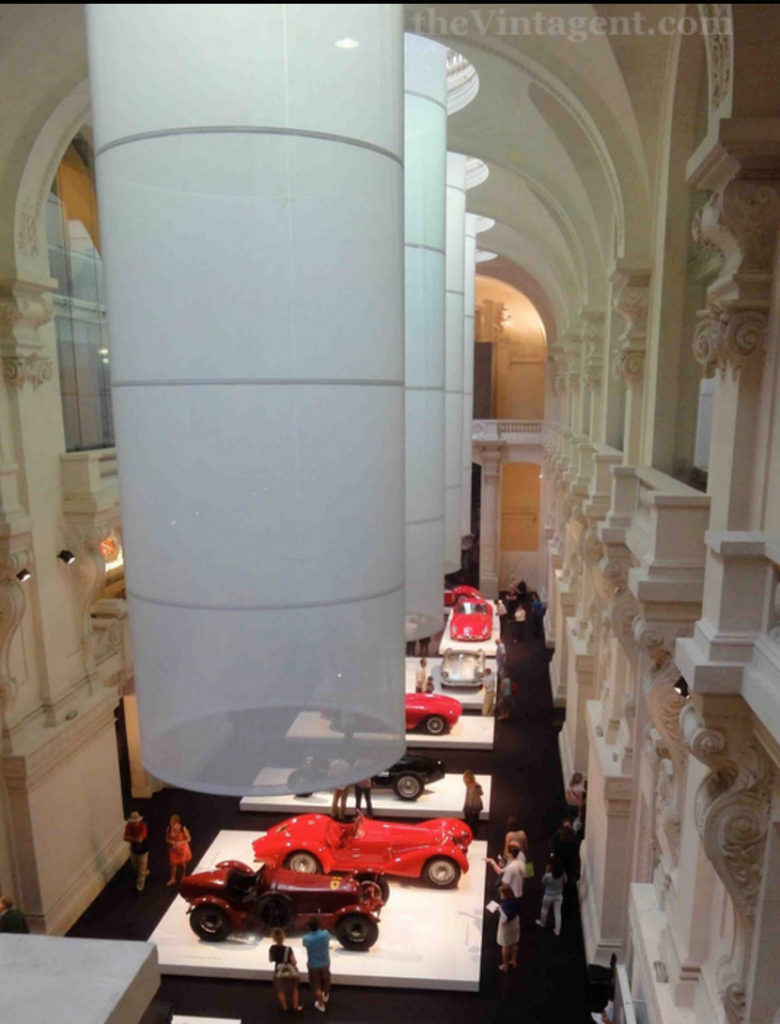
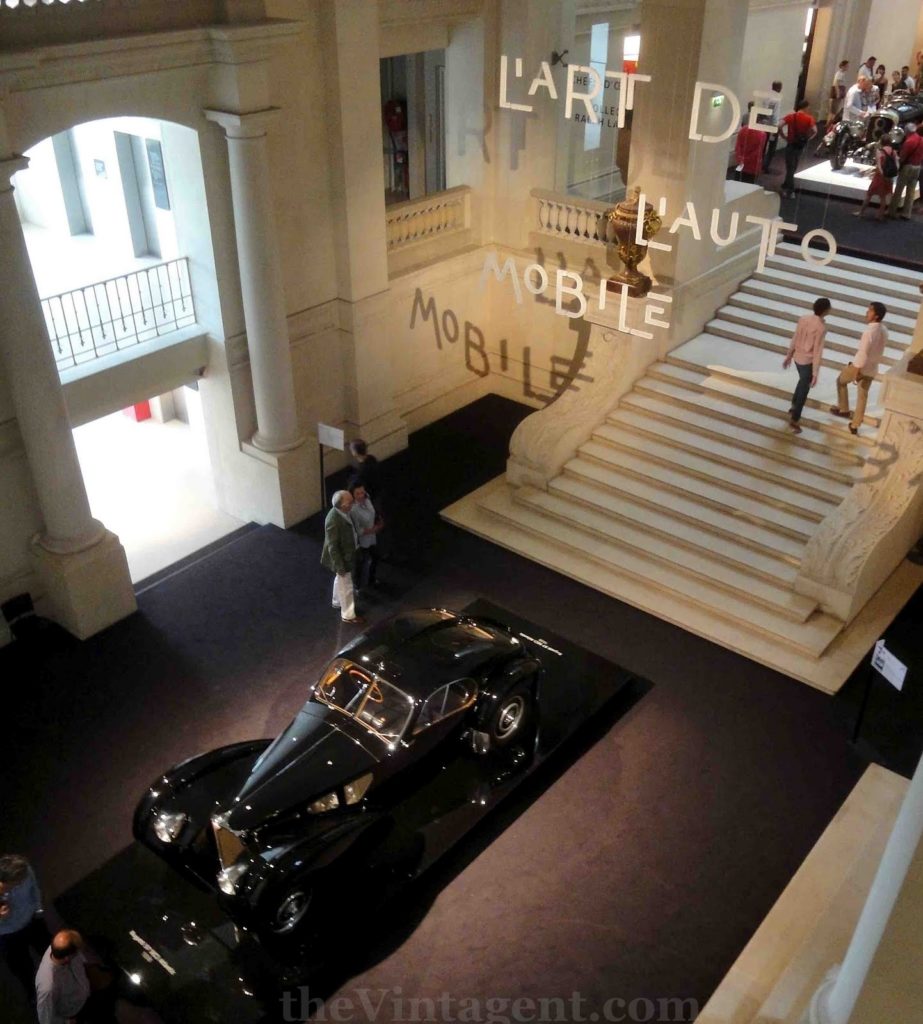
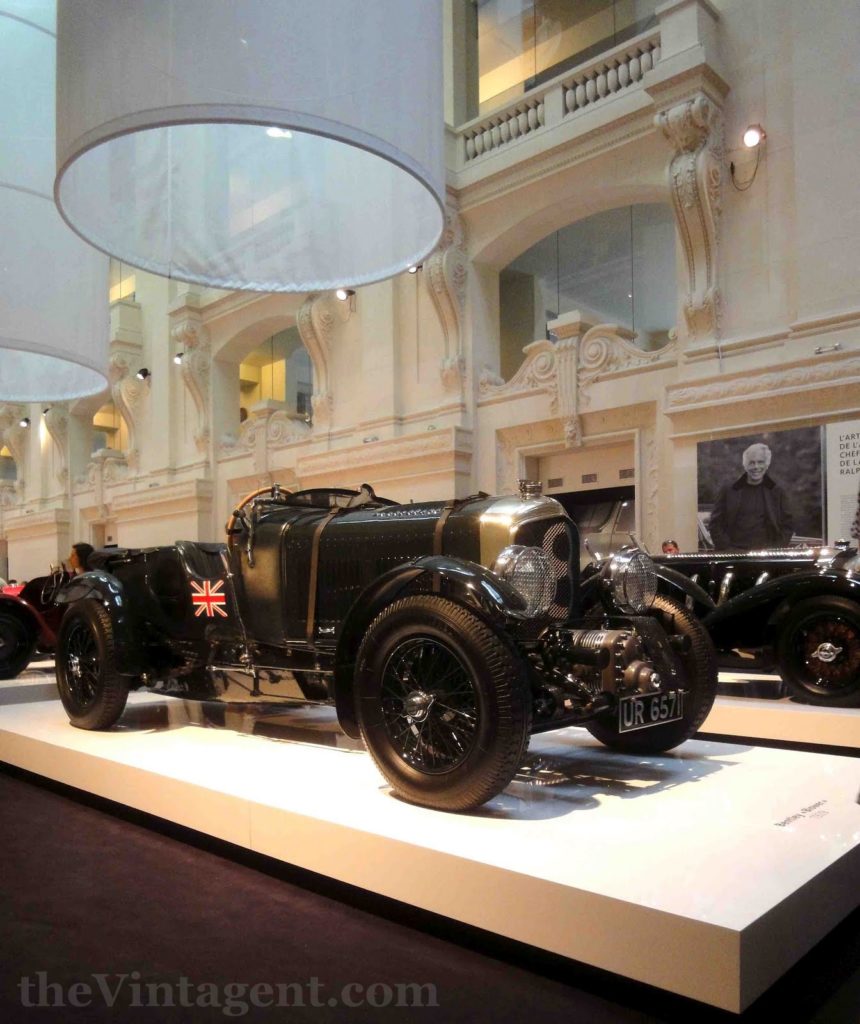
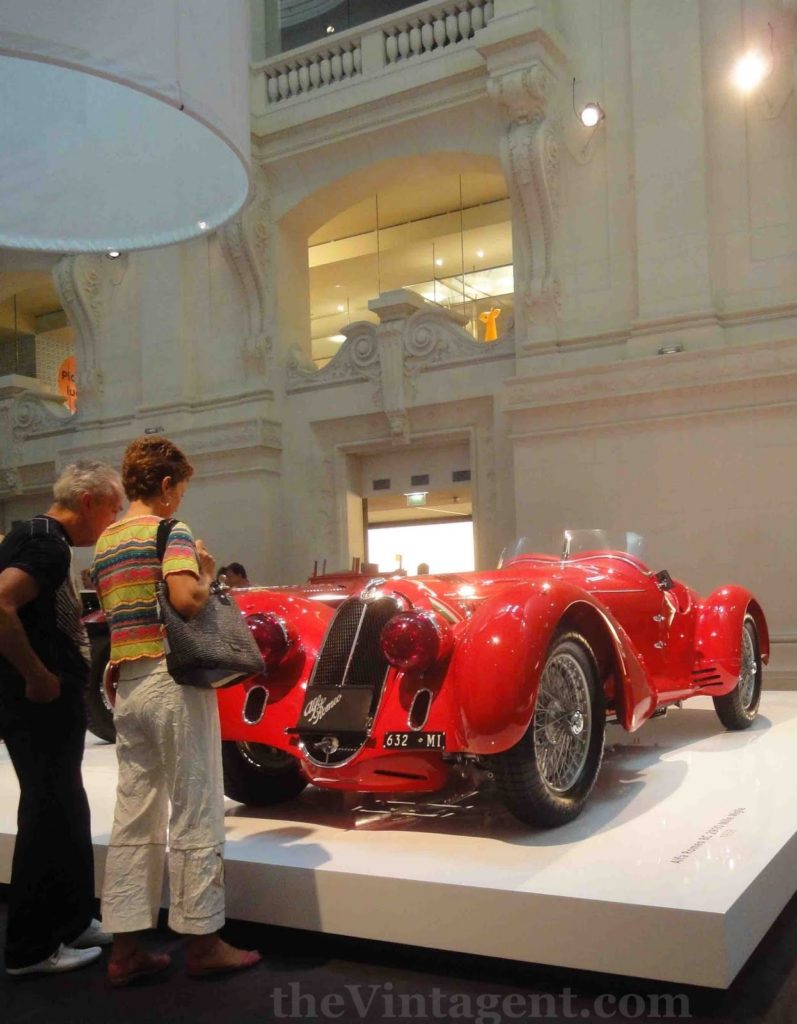
"Thomas Kohler, the initiator of the Charter, explained: 'You have to understand the amount of lying, past and present, in the historic vehicles community, how often people try to bring fakes into circulation as “veterans”. The practice of converting stately town cars or saloons into racing cars by shortening the chassis is not in line with FIVA rules. Article 4.2 [of the FIVA statutes] “...To support and encourage the restoration, preservation, use and documentation of historic vehicles of all kind...” spells out this objective.’ ... Fakes or vehicles that suffered extensive changes to their engineering and appearance that their historic reference is lost would not stand any chance of being registered as historic vehicles...The purpose of the Charter is to preserve the historic substance of historic vehicles unaltered and ensure through their active use, maintenance, conservation, restoration and repair that future generations can enjoy these cultural treasures....As defined in the Turin Charter; the collective term historic vehicles includes automobiles, motorcycles, utilitarian vehicles, trailers, bicycles und other mechanically operated vehicles... On a diplomatic level, the FIVA hopes to achieve this with reference to the UNESCO Convention on the Means of Prohibiting and Preventing the Illicit Import, Export and Transfer of Ownership of Cultural Property of 14 November 1970, which is enforced by 120 signatory states."
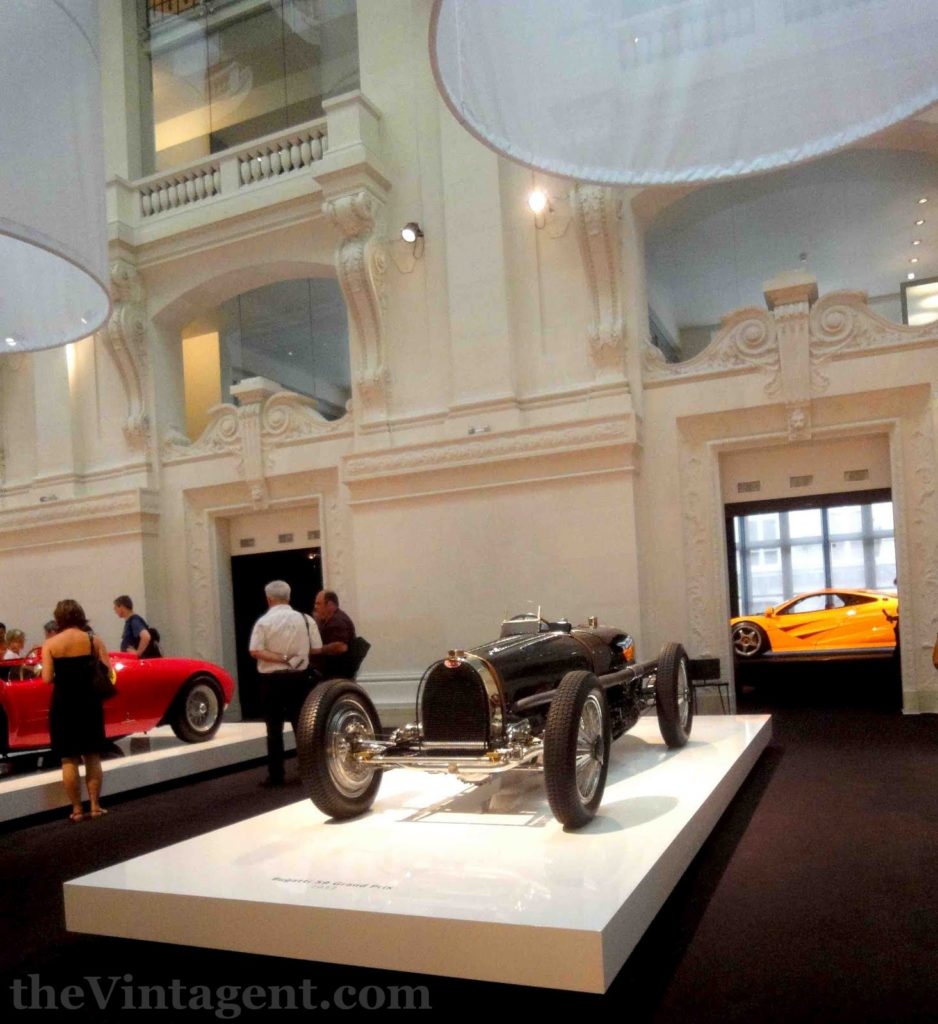
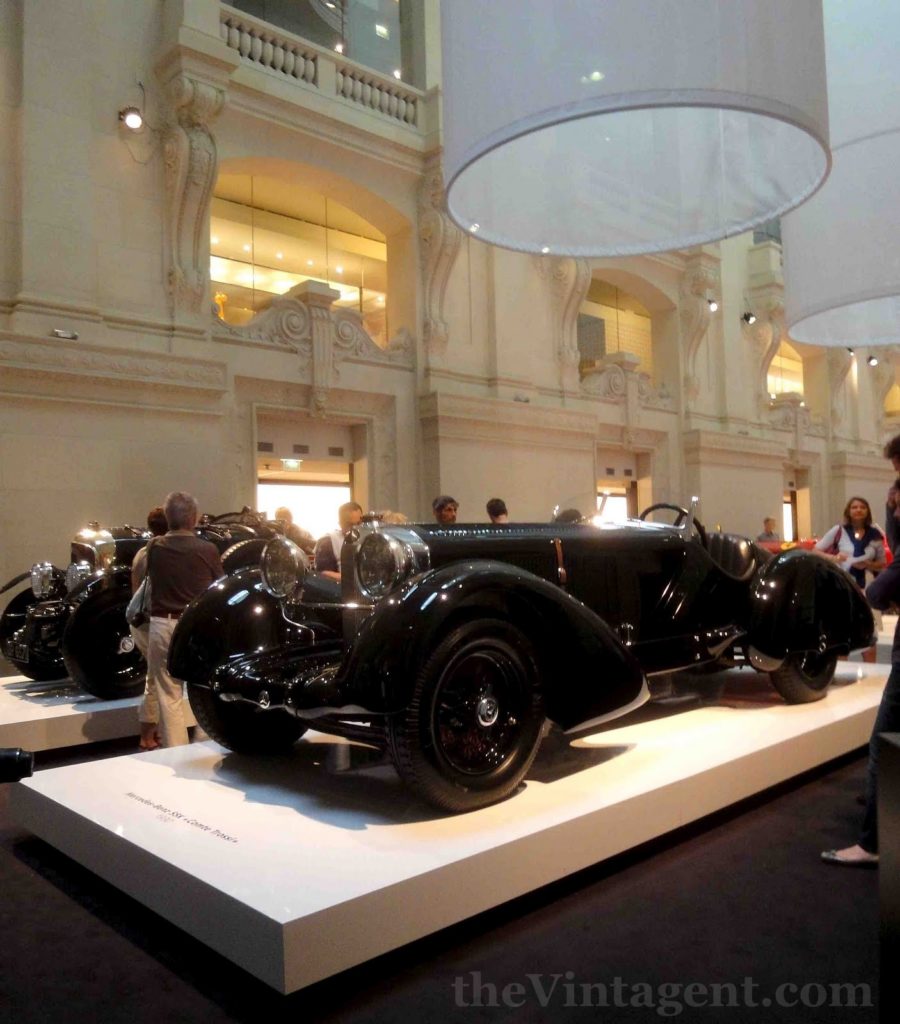

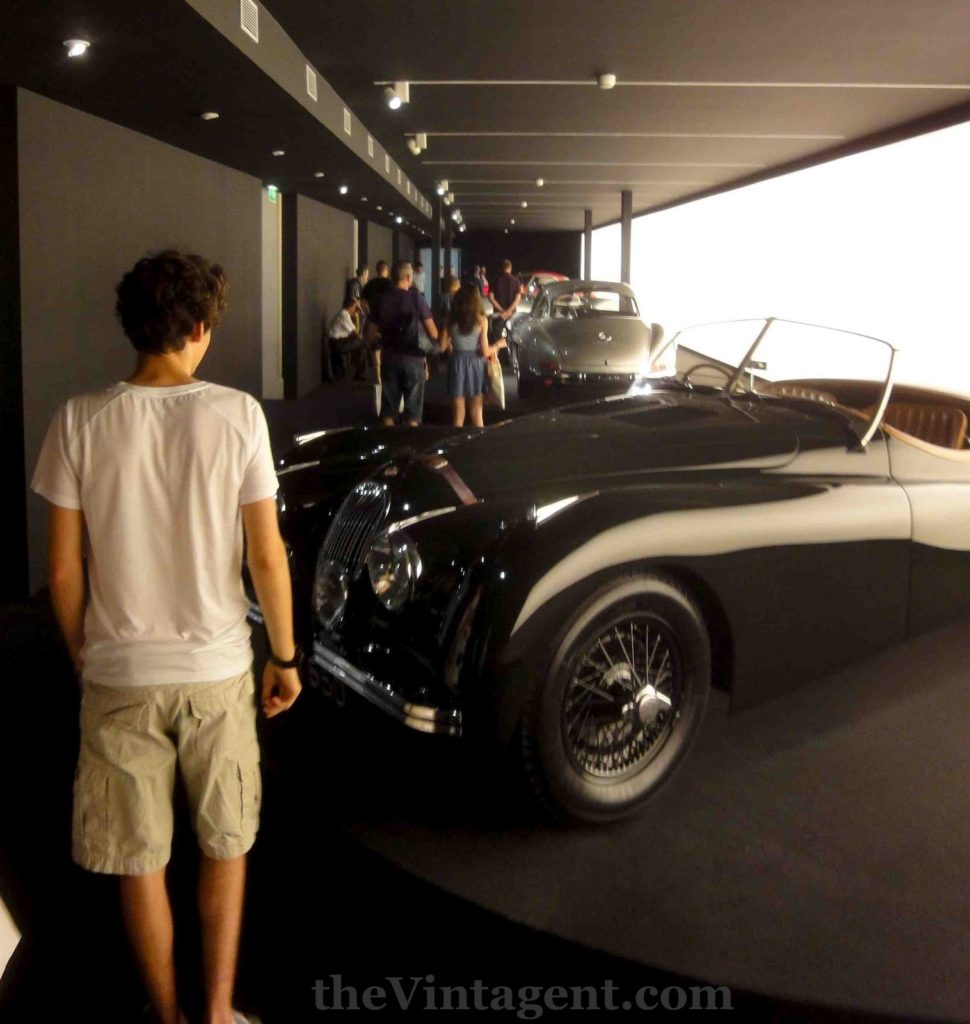
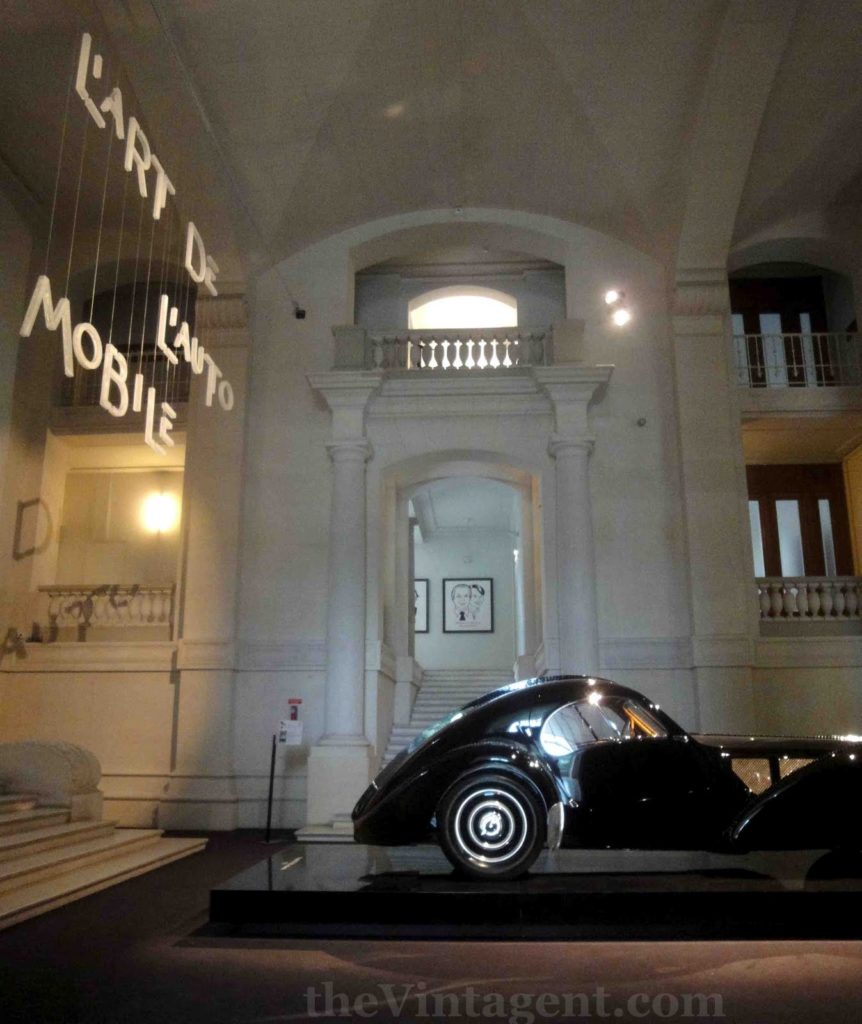
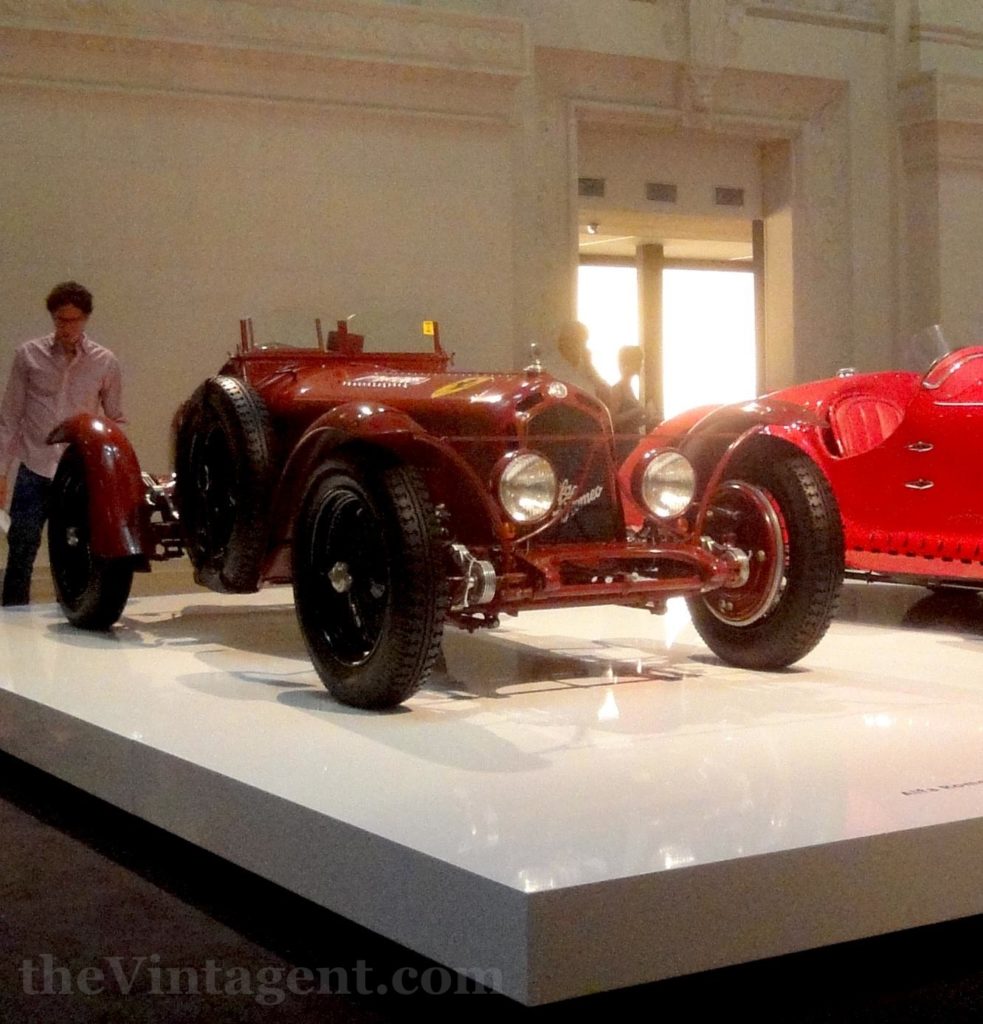


2011 Concorso Villa d'Este
The Concorso d'Eleganze di Villa d'Este is well known, and well loved, as perhaps the most elegant automotive celebration anywhere, a rare combination of the perfect landscape (lake Como), the perfect Villa, and a curated selection of 50 truly exceptional vehicles. With entry to Saturday's Concorso strictly limited to entrants and invited guests, seeing the show at the Villa remains a rose-hued dream to millions of car enthusiasts. Put bluntly, this is a private party for elite swells, some regularly in the press, some obscure, all on their best behavior and most beautiful attire at Lago di Como.
